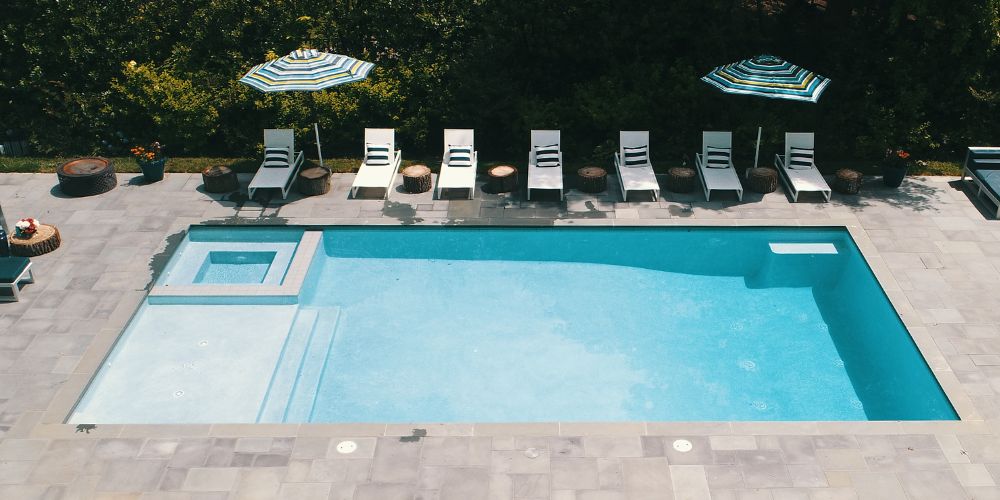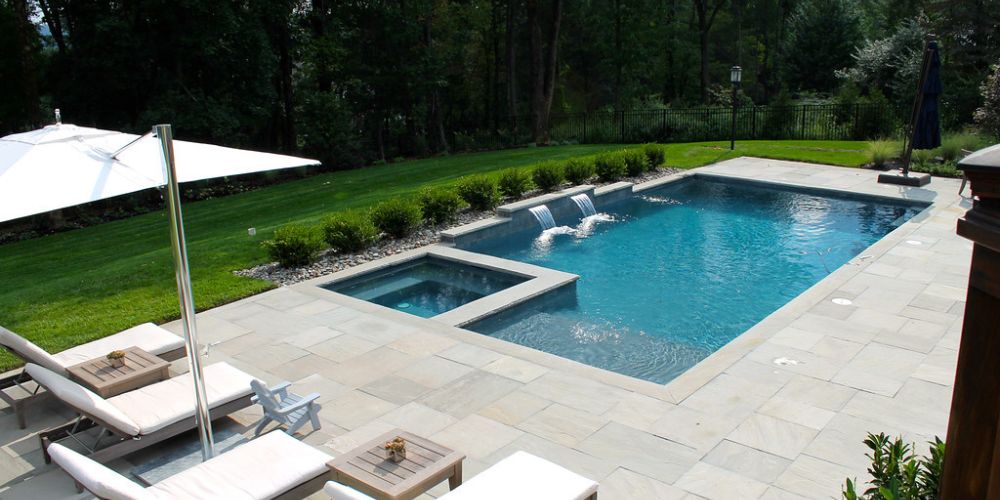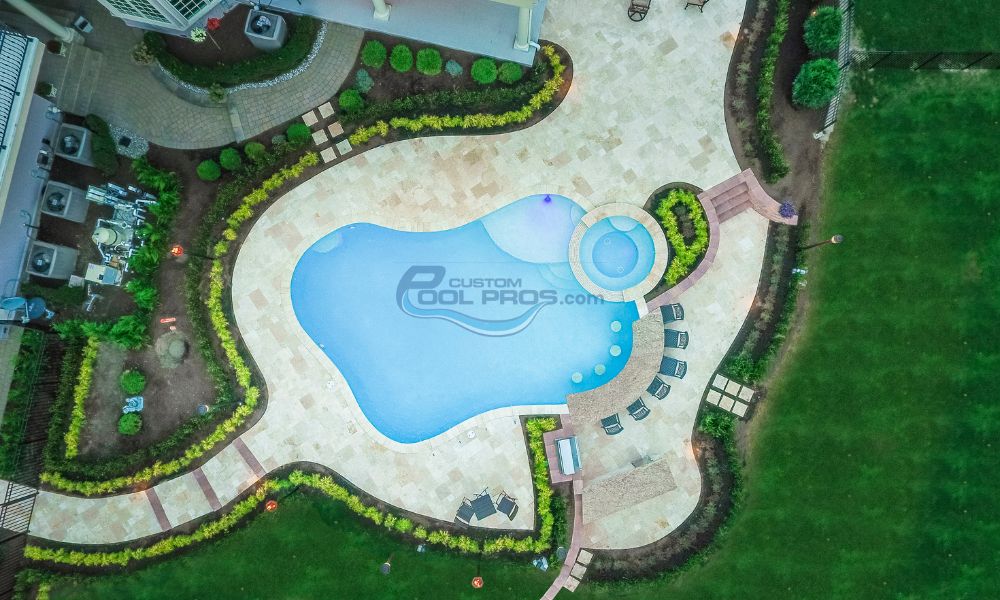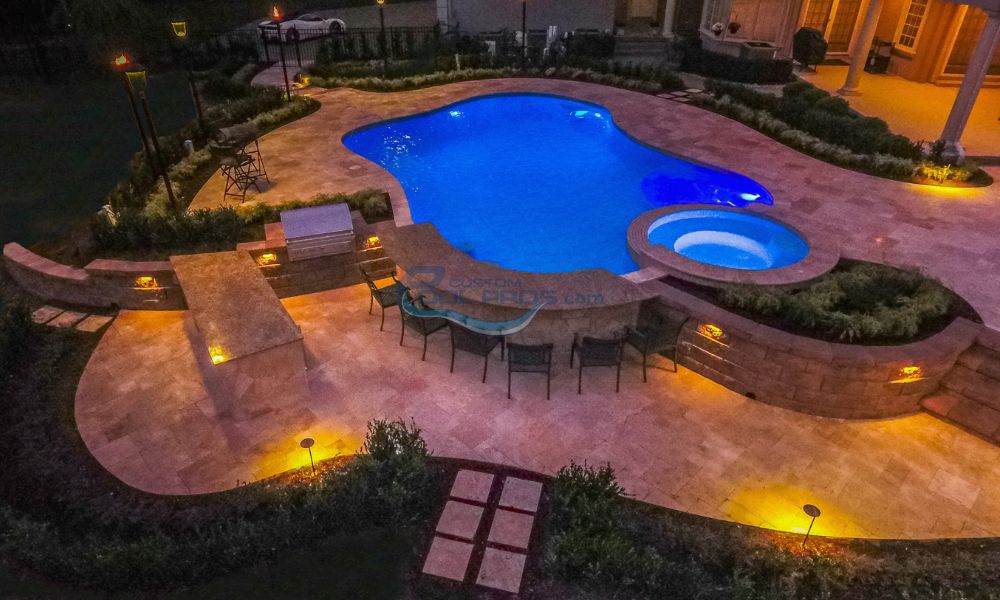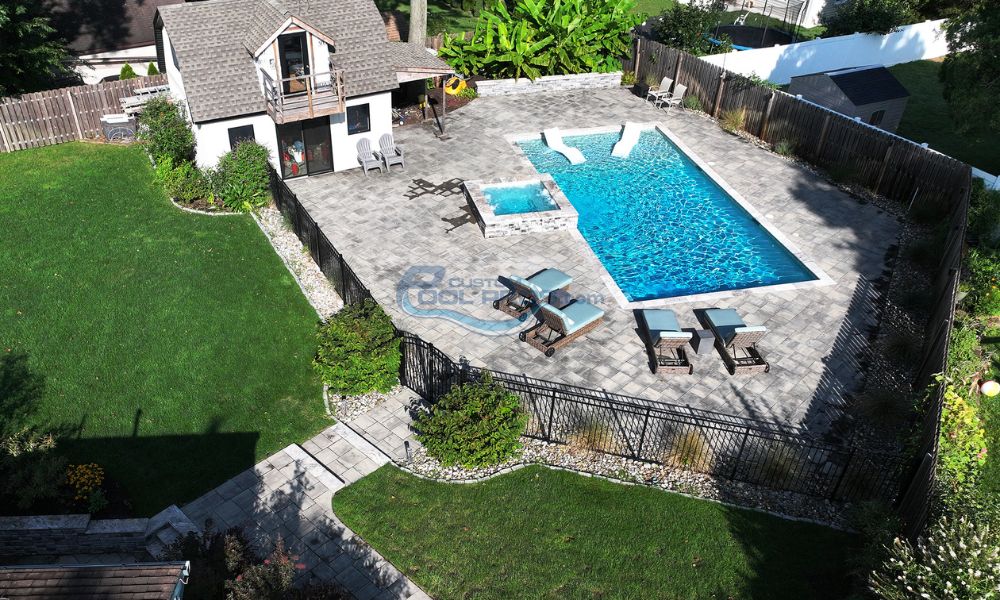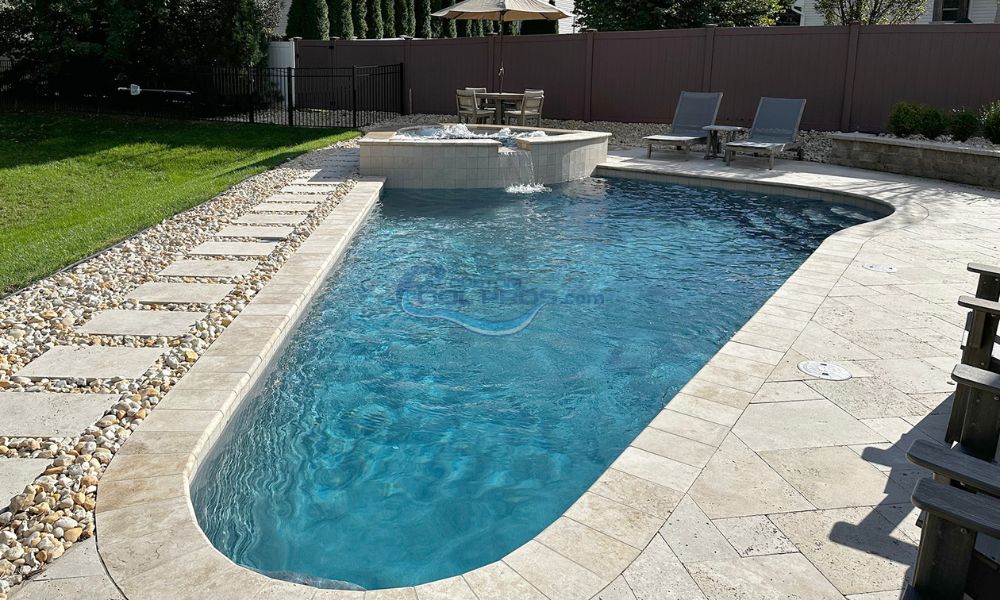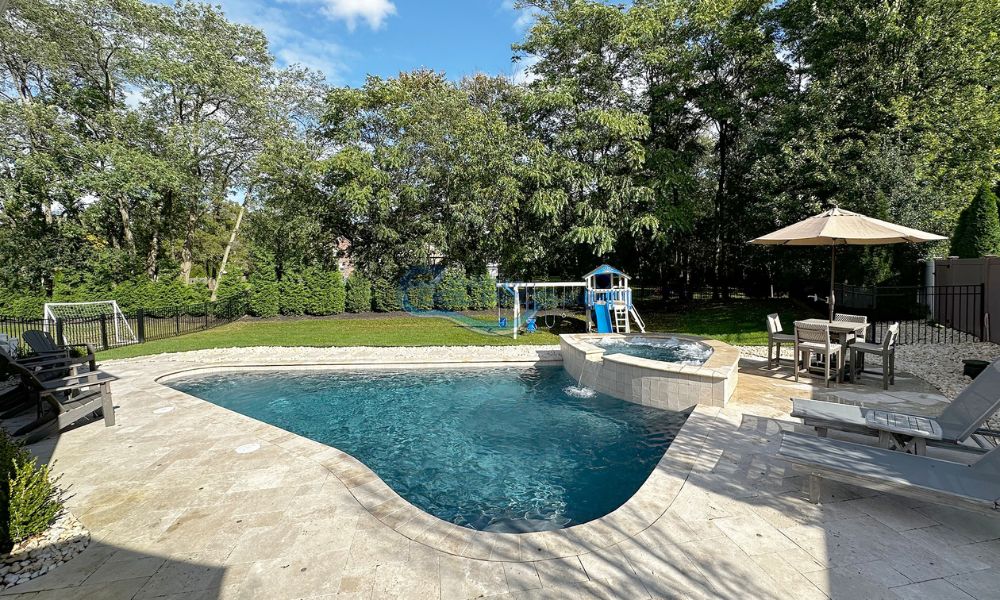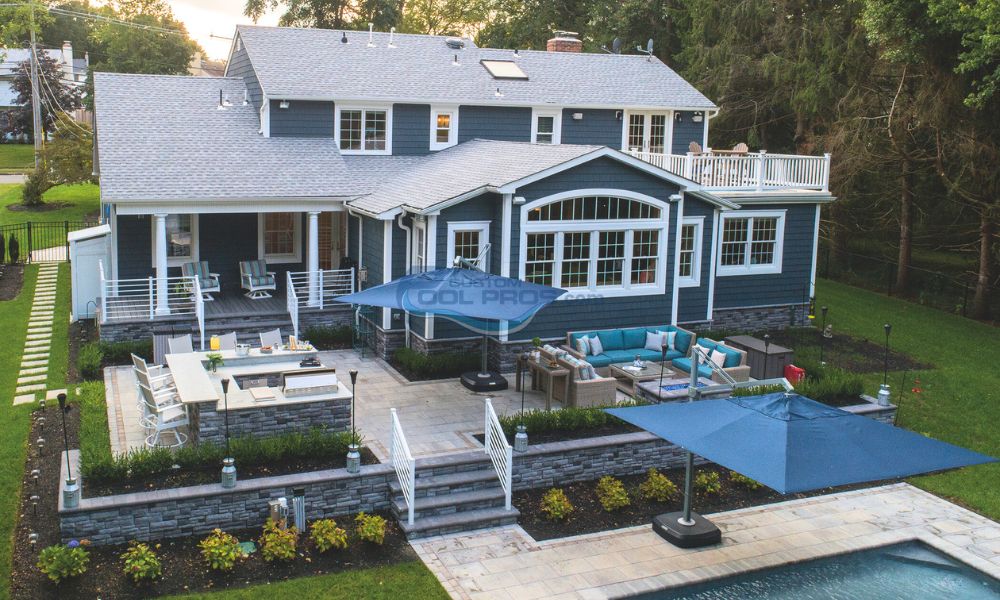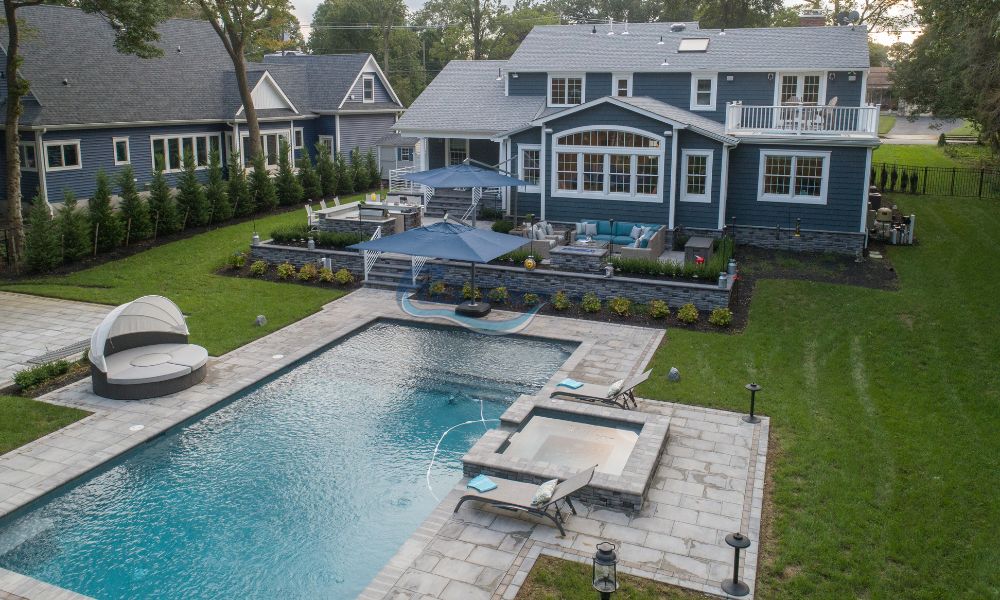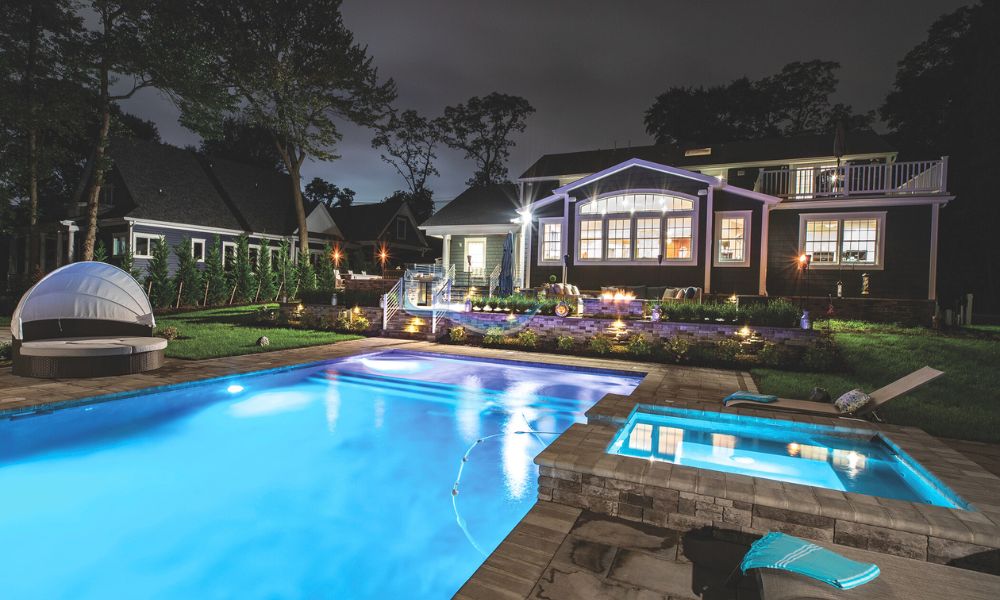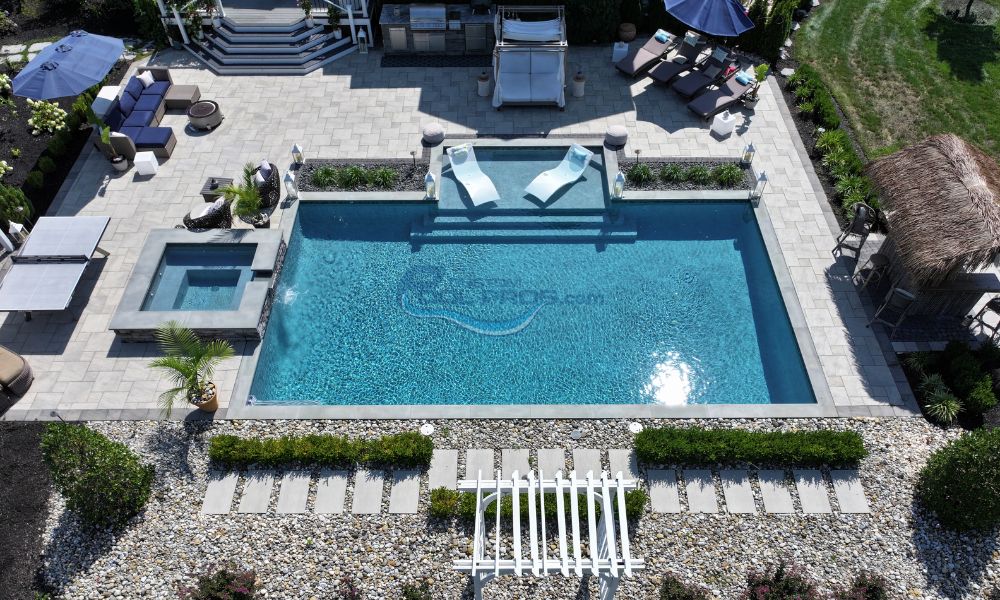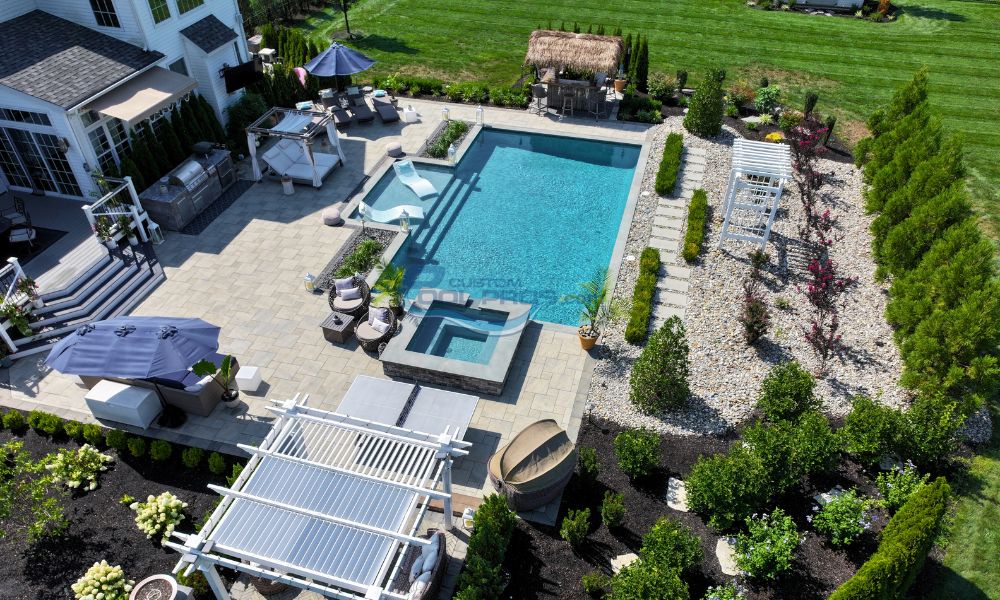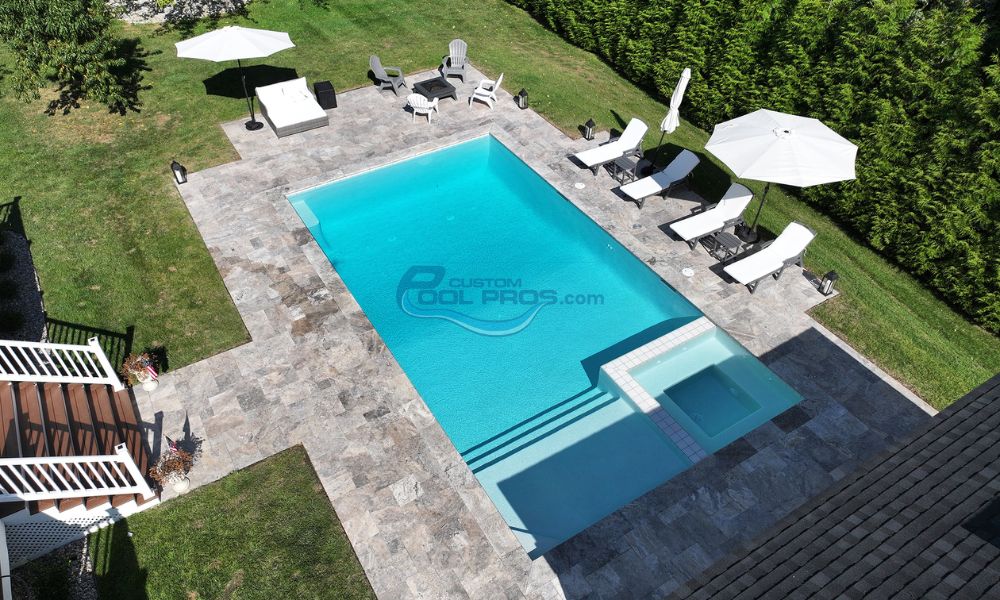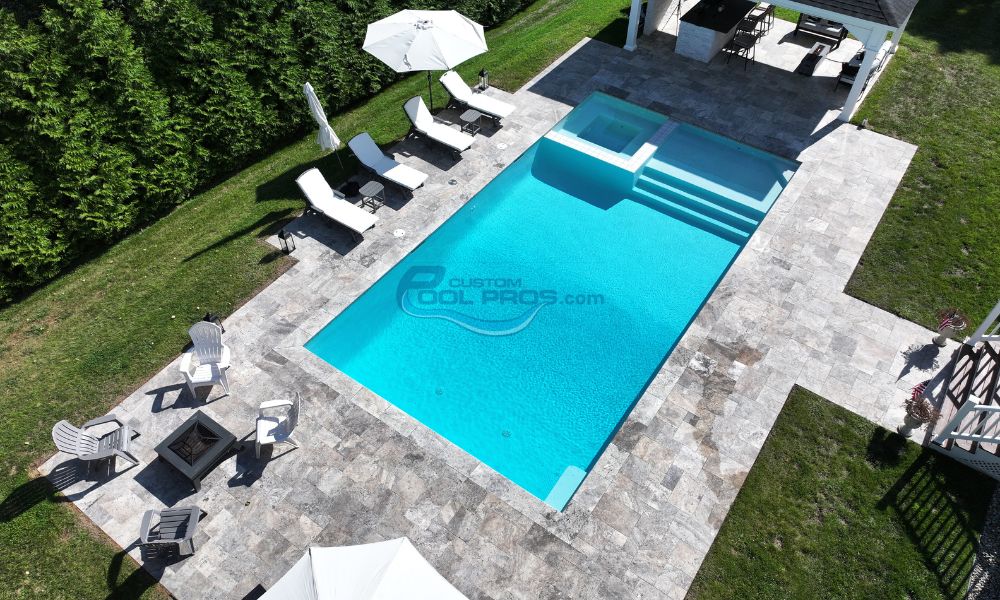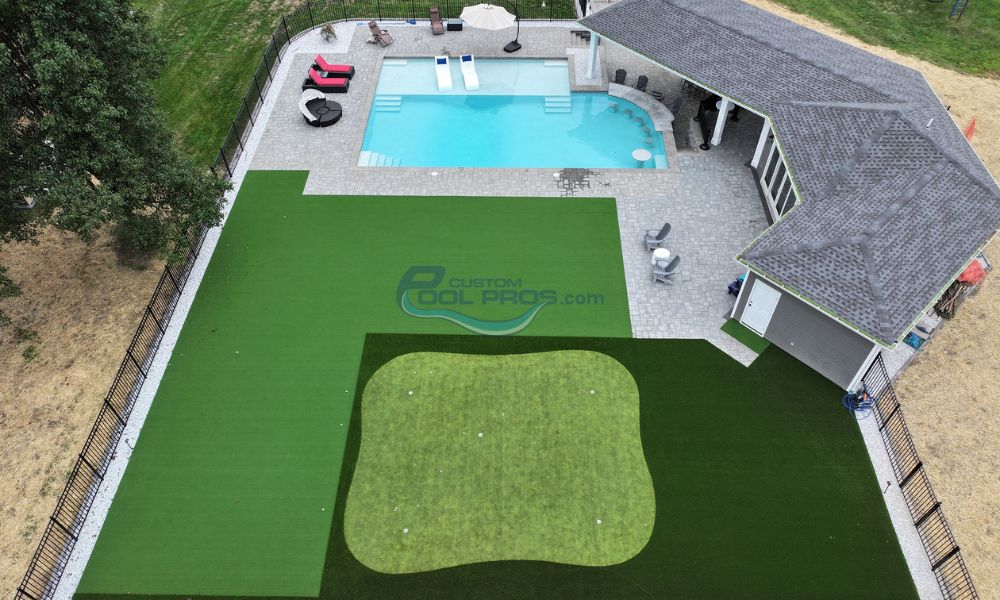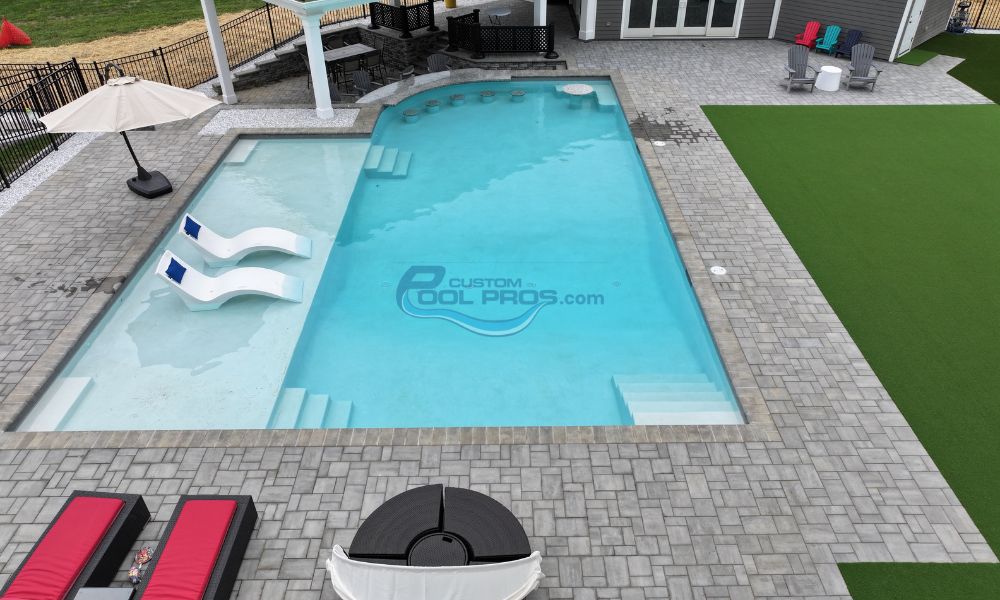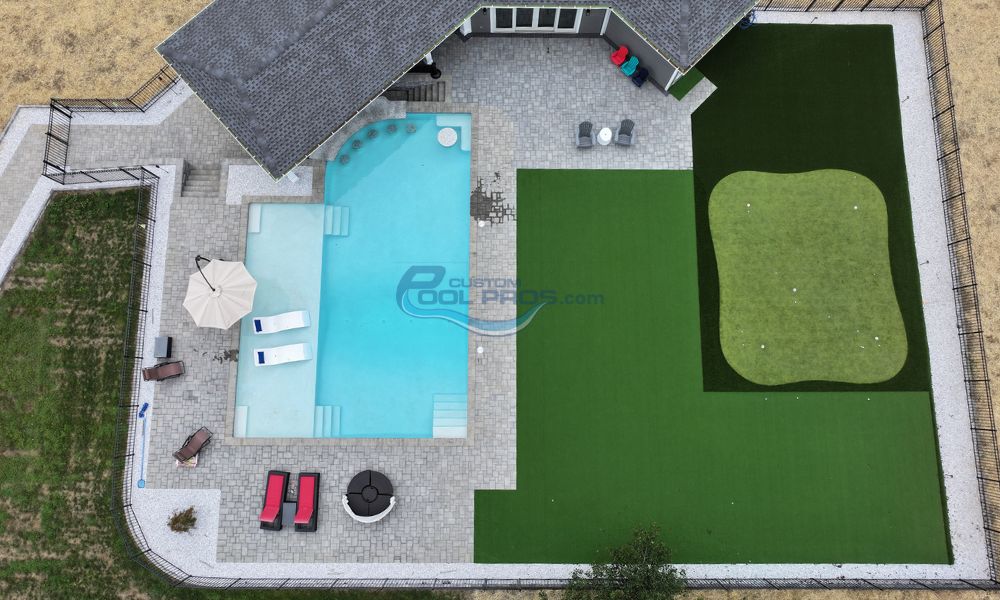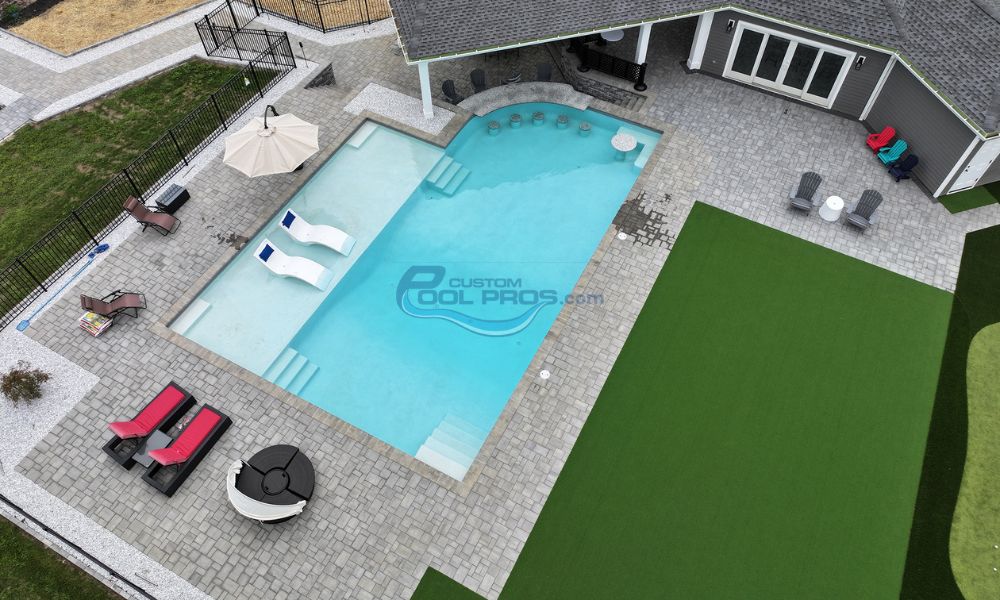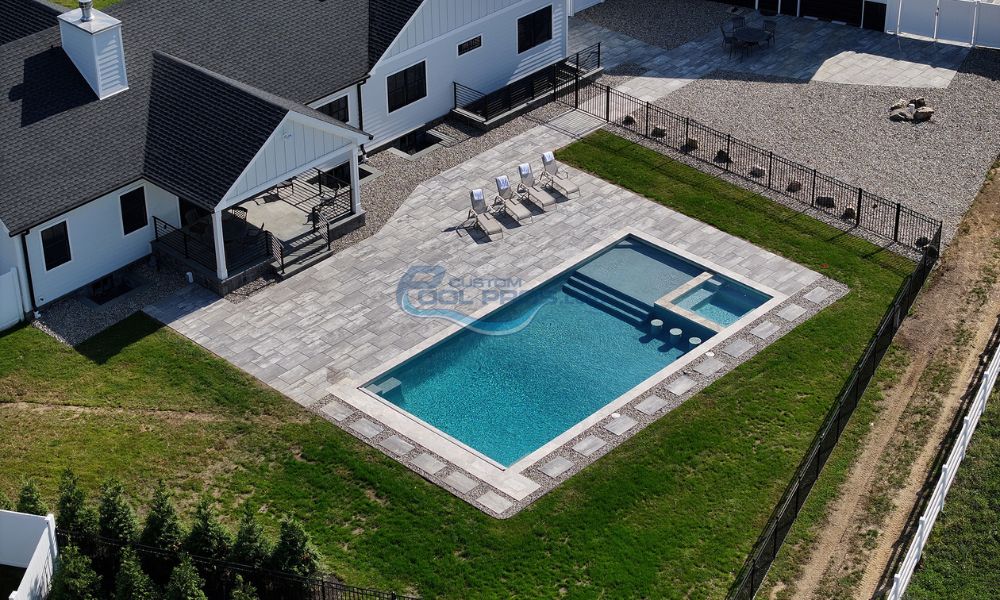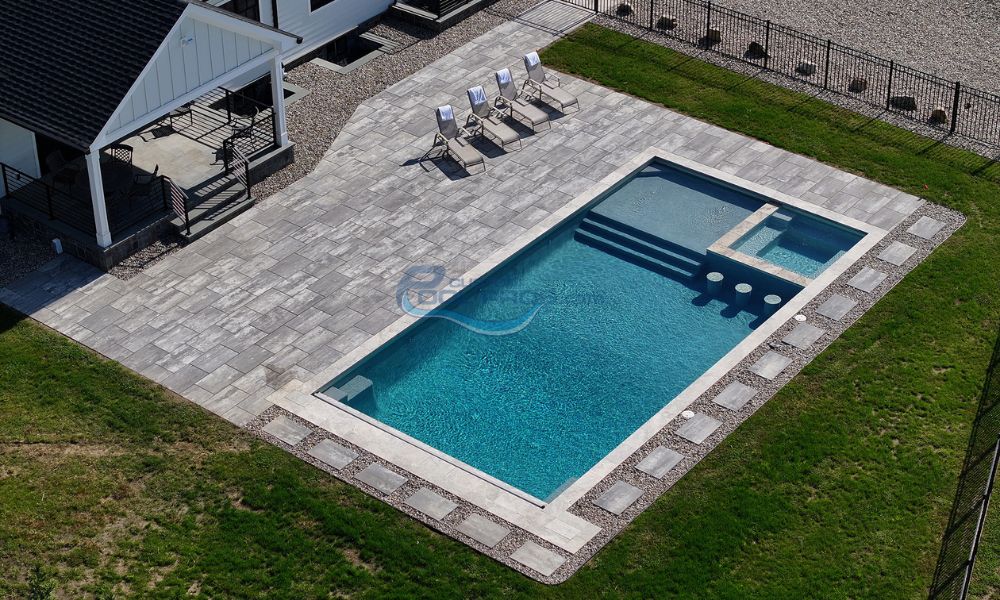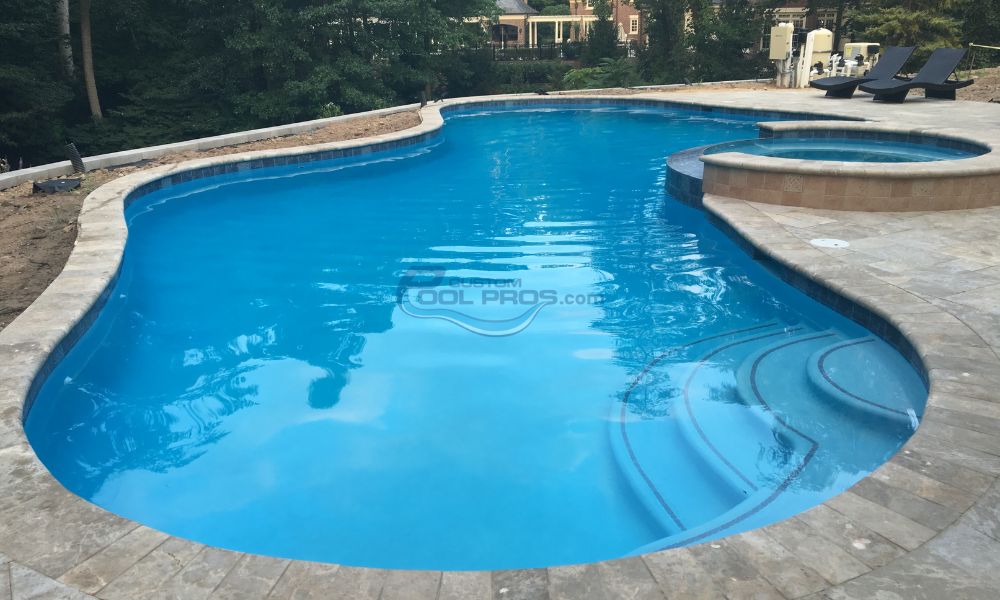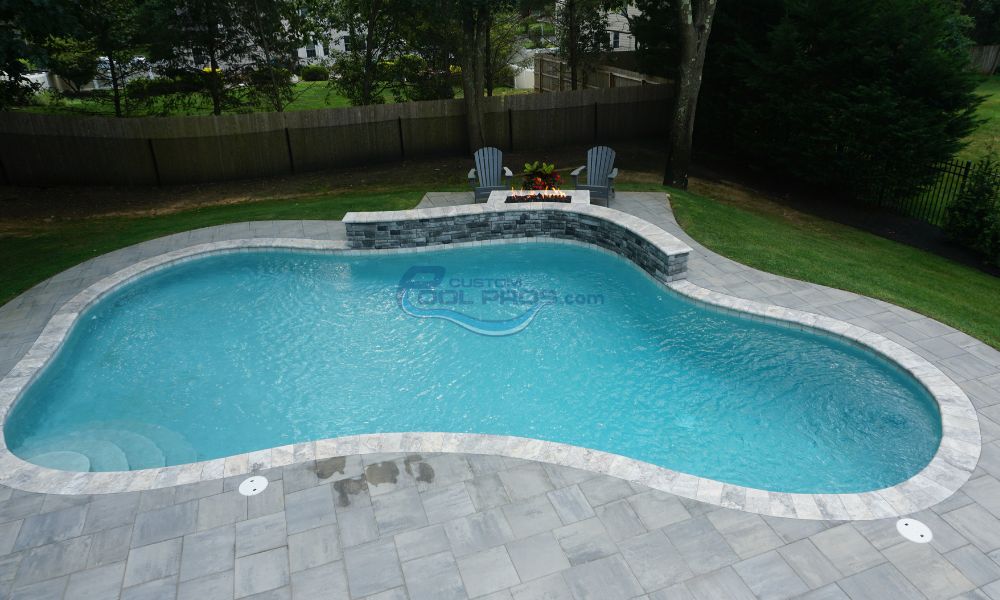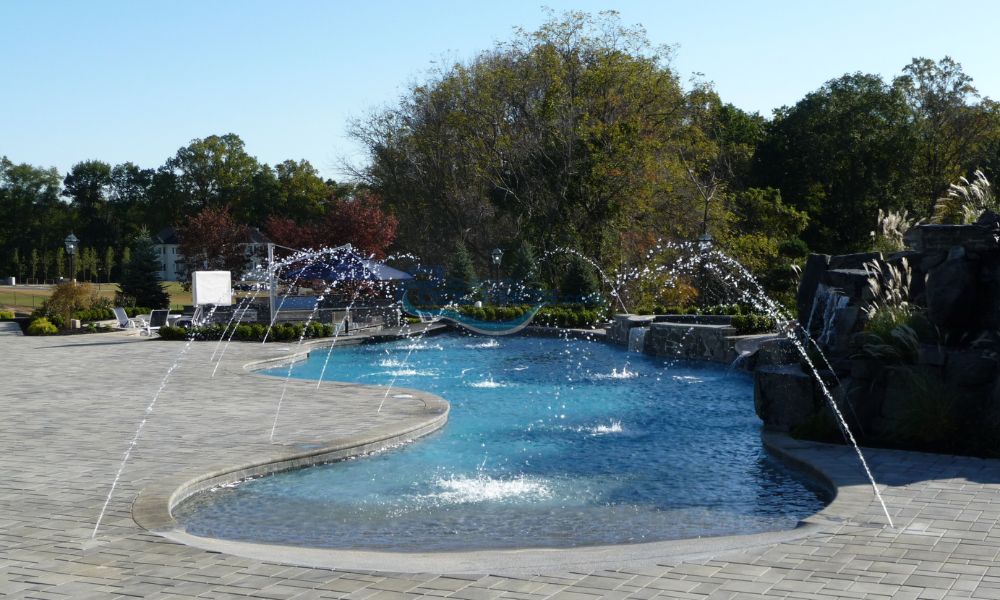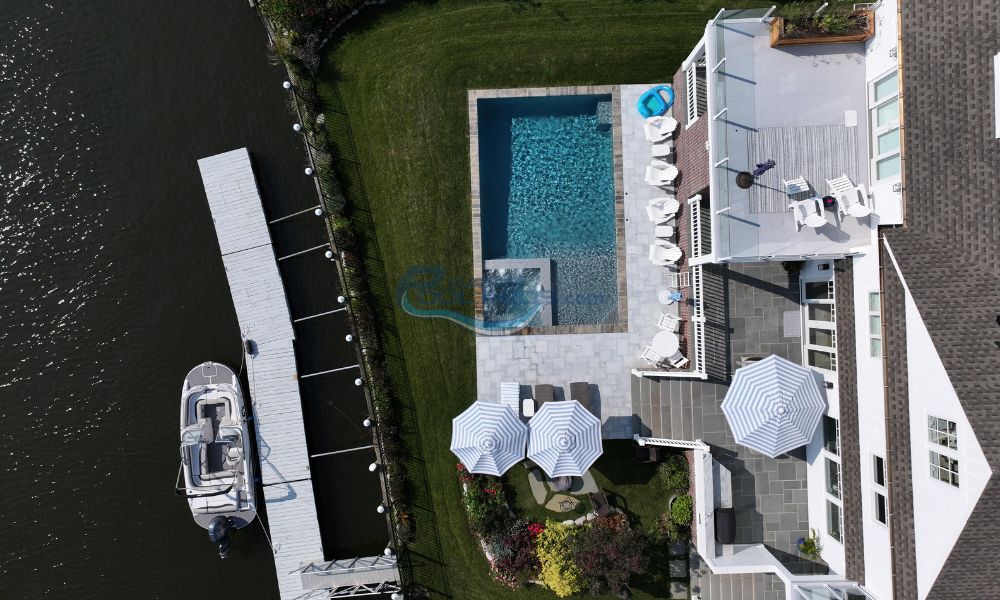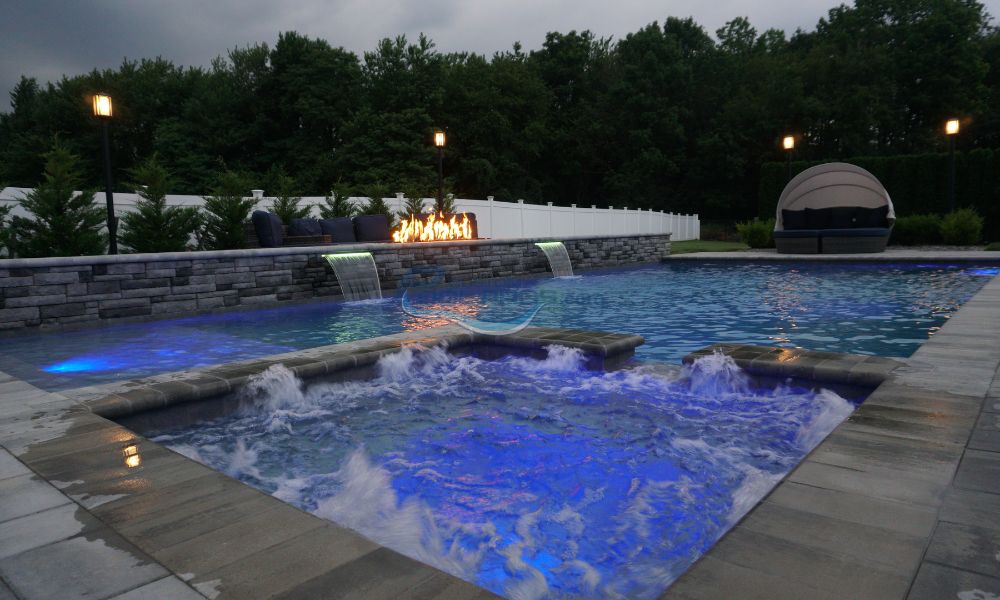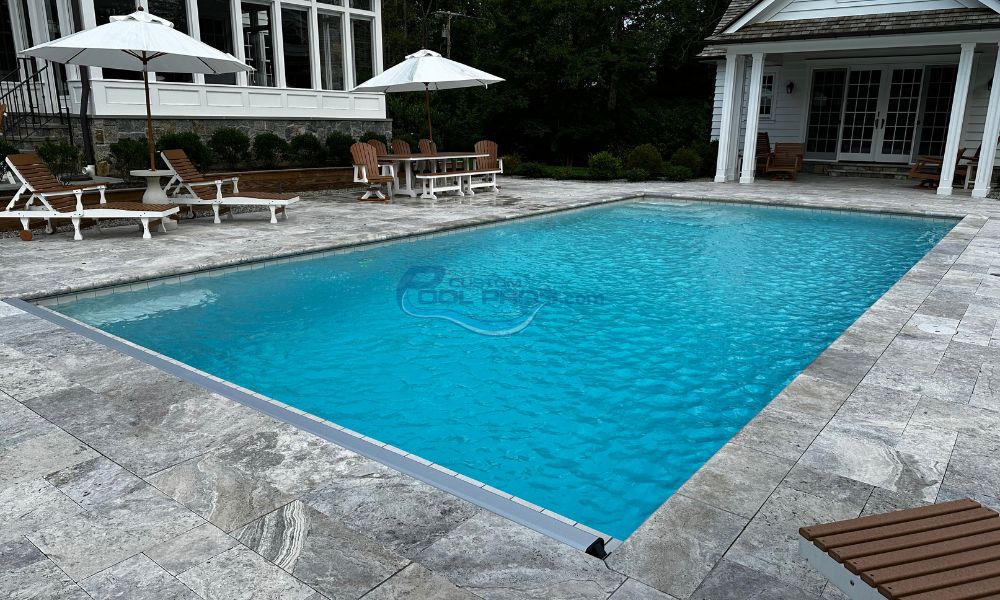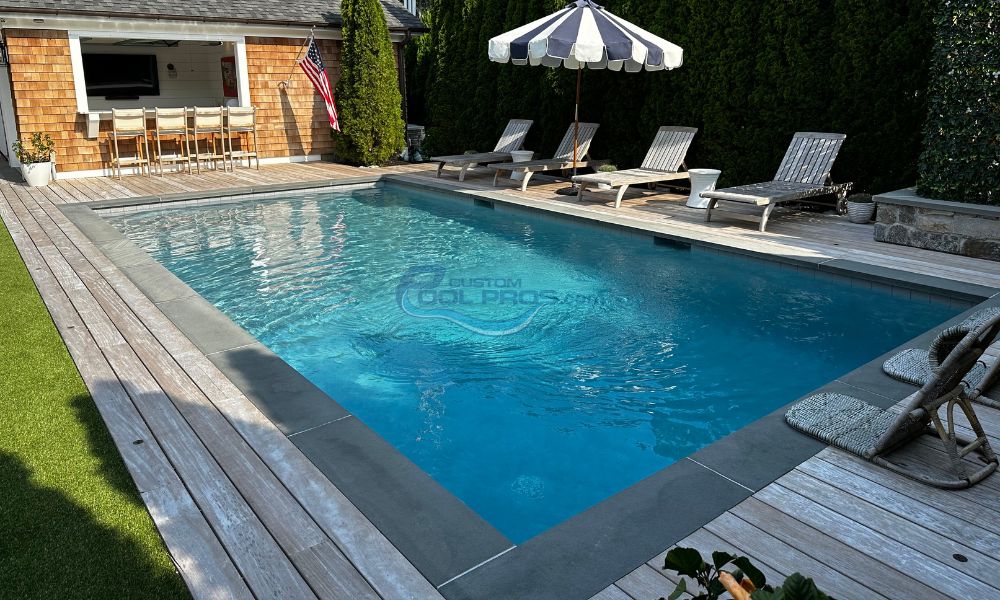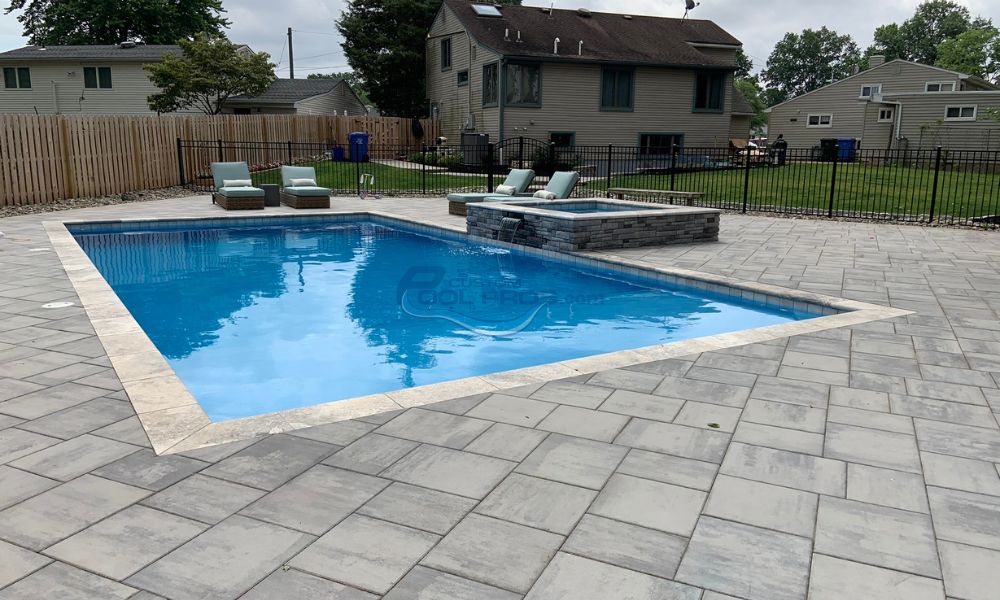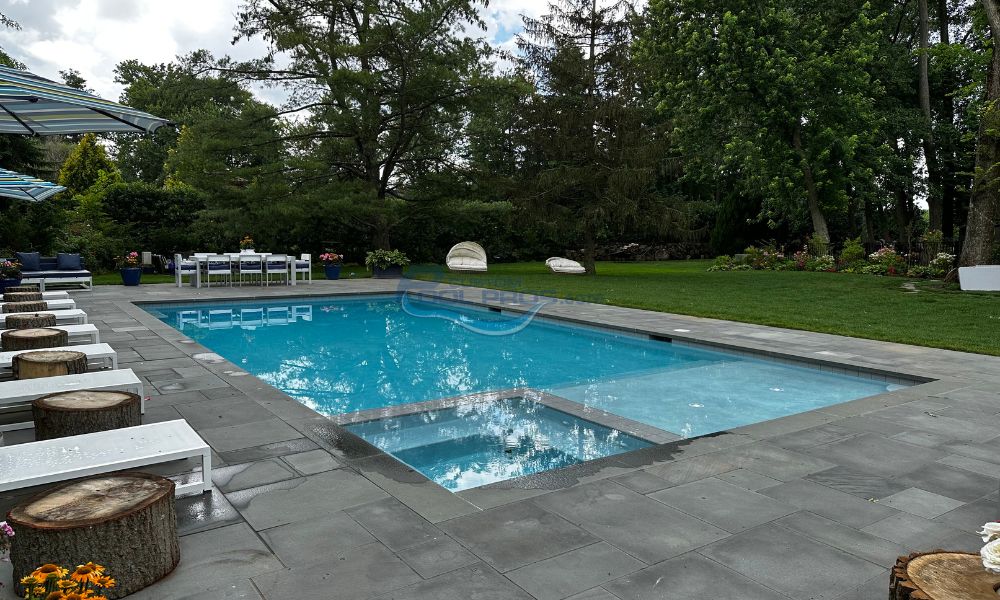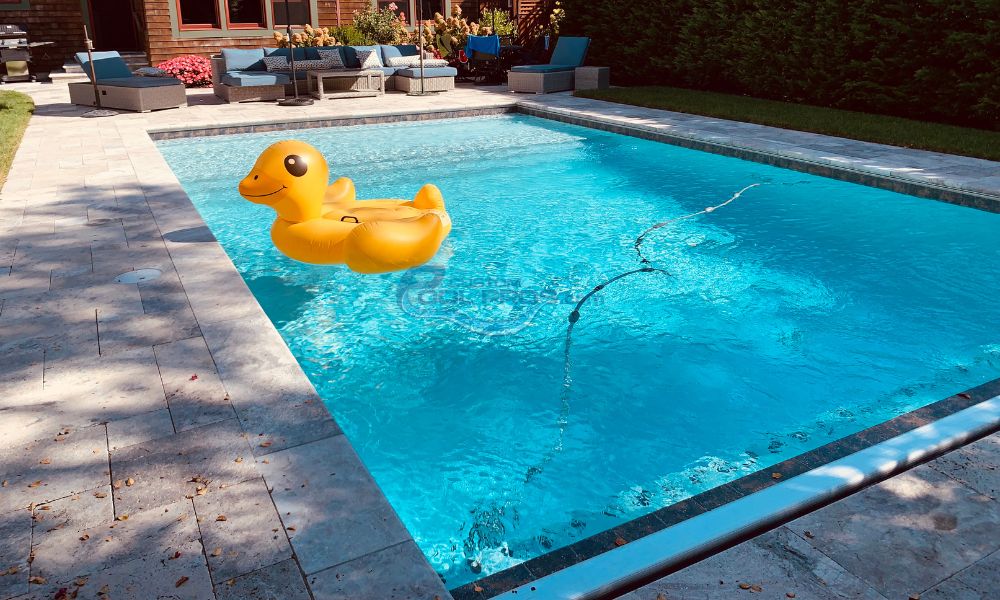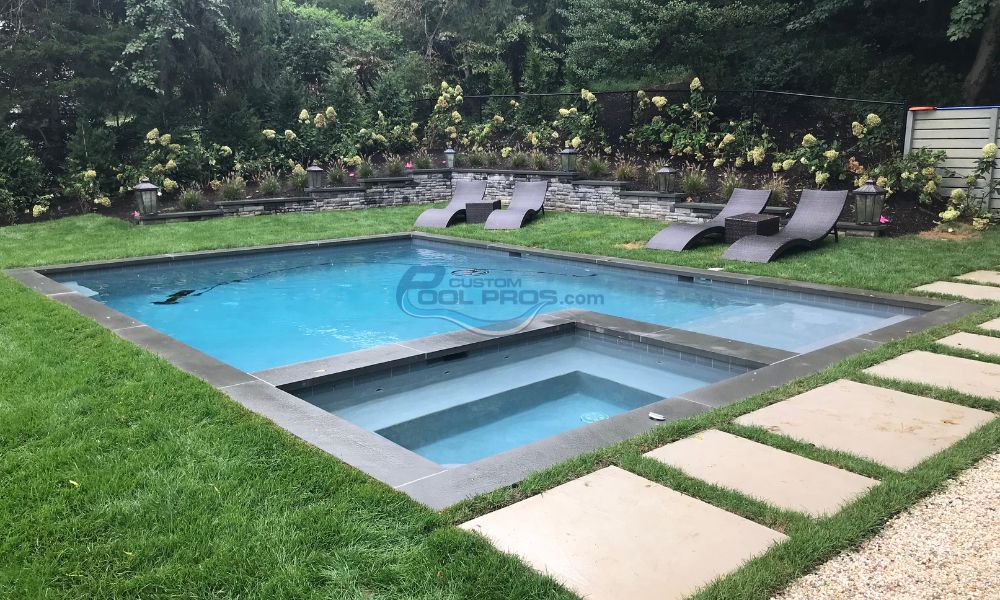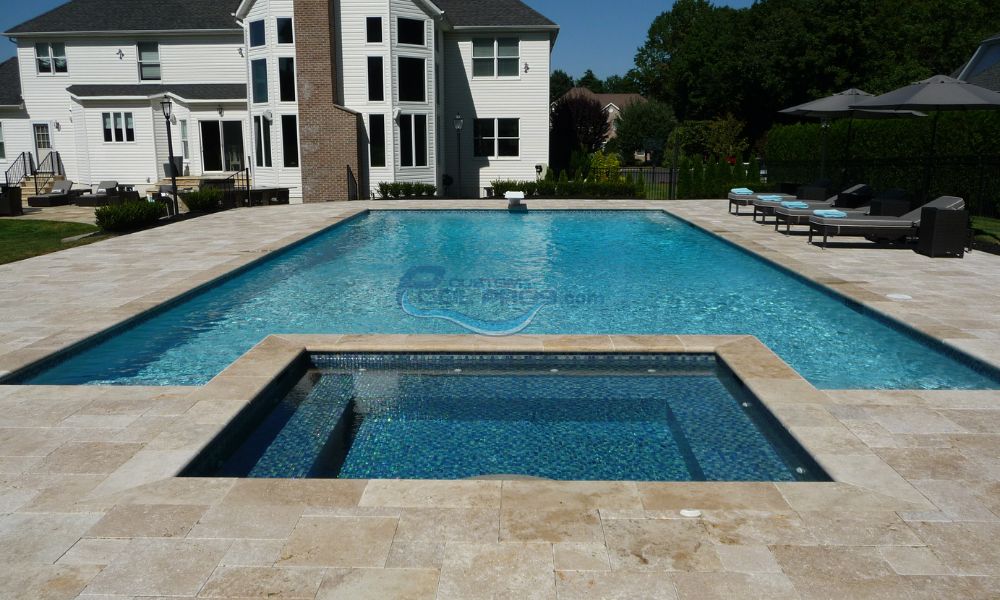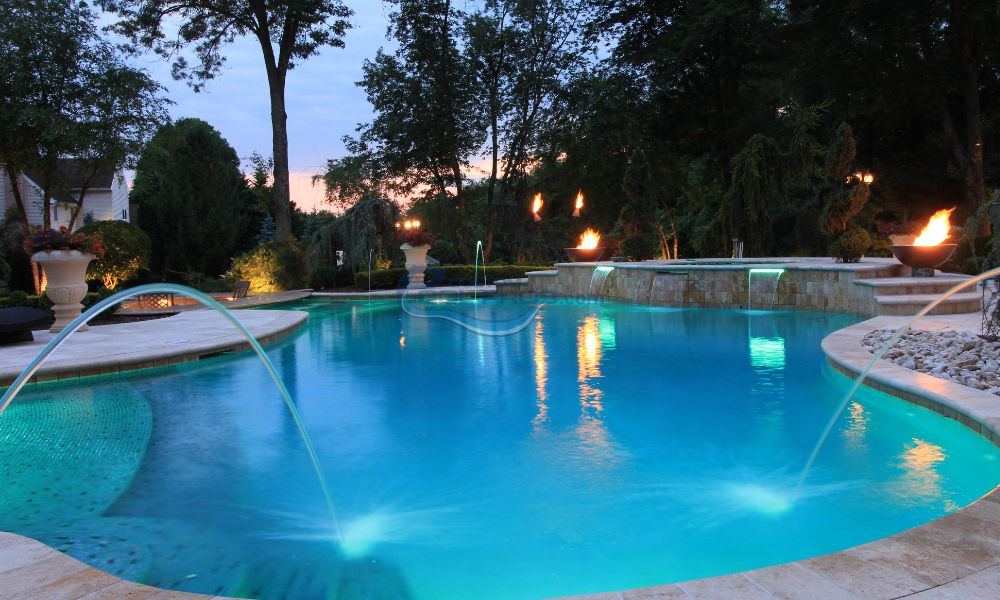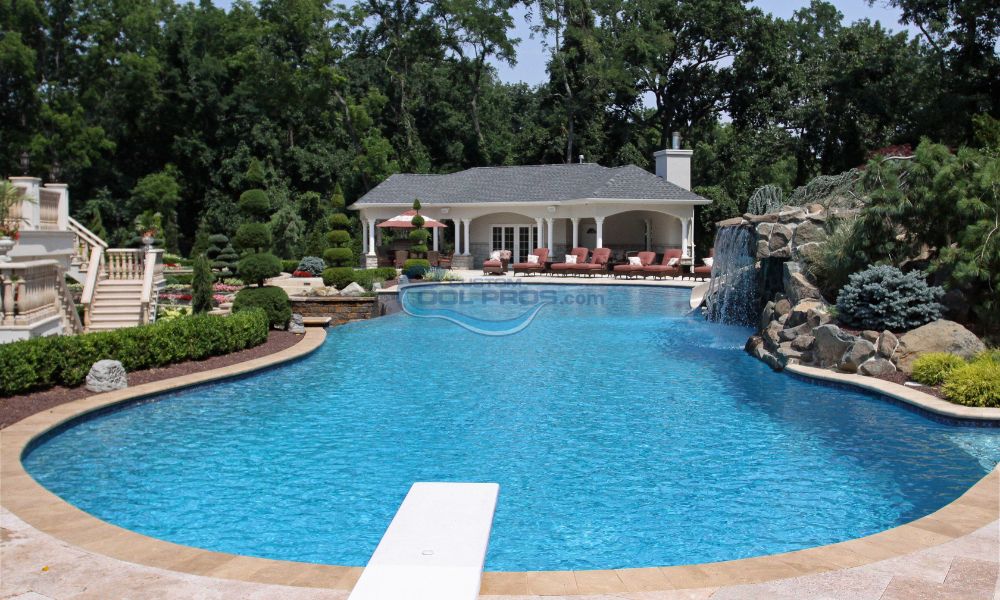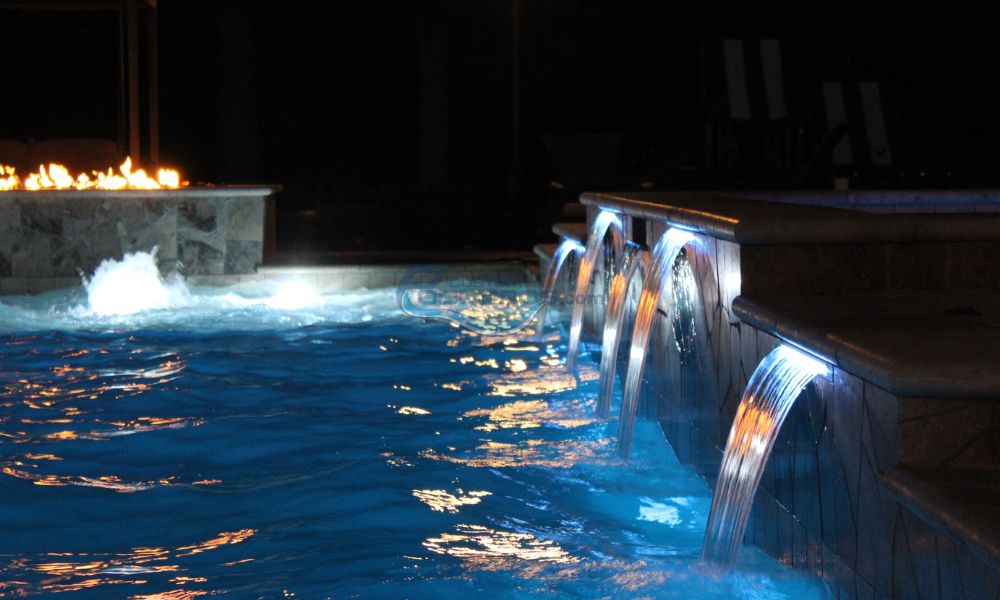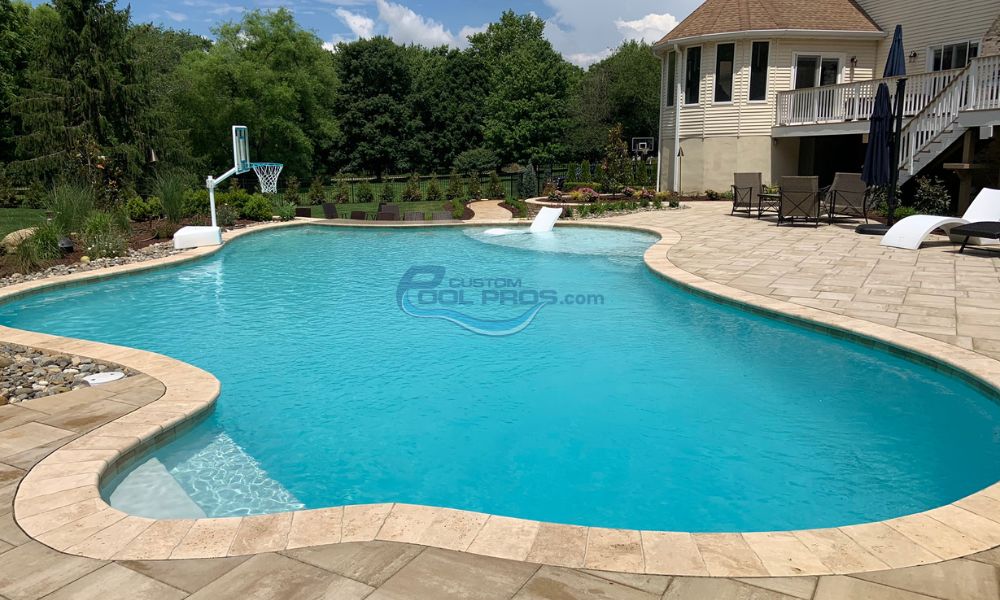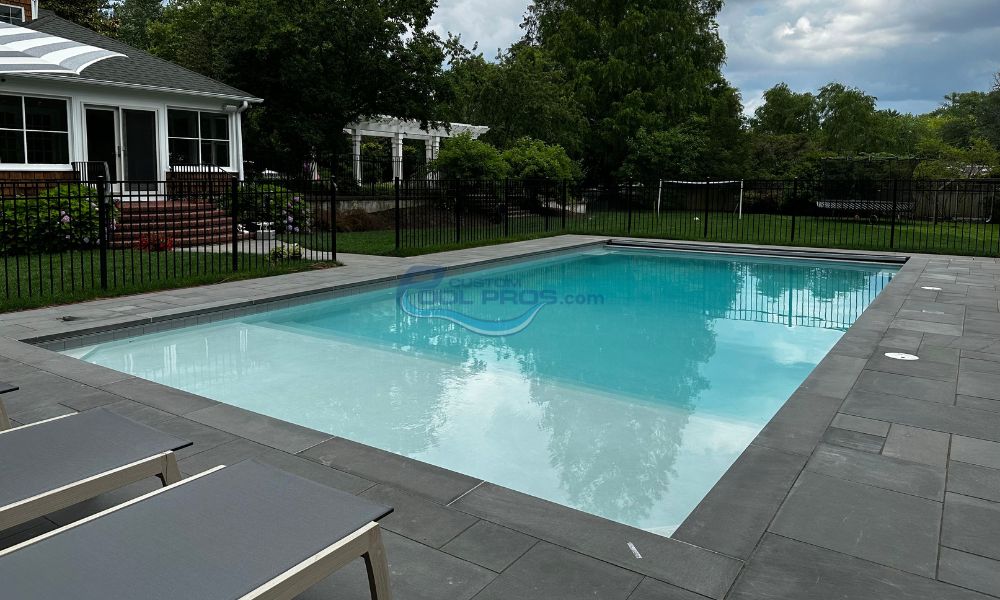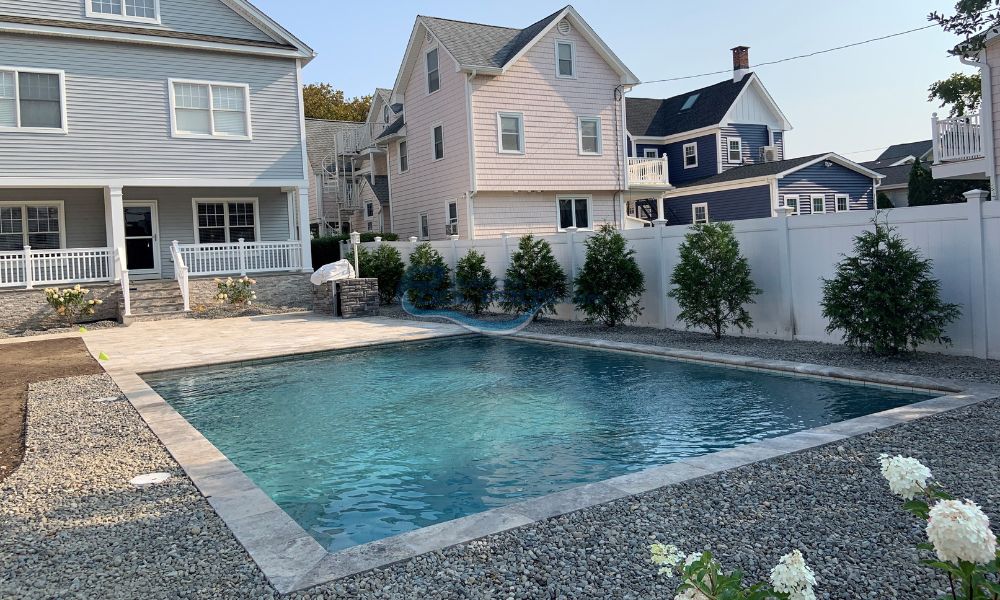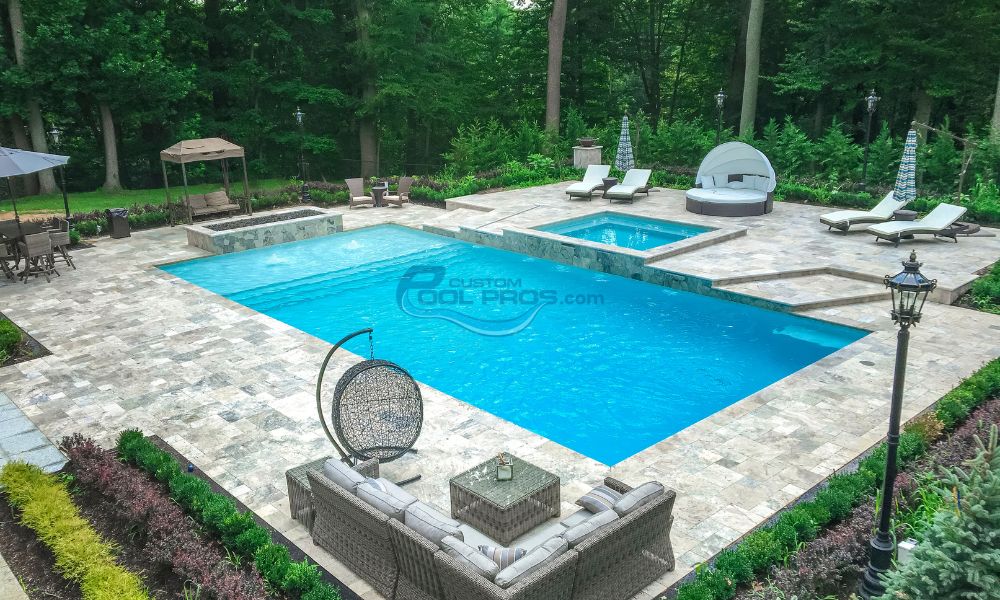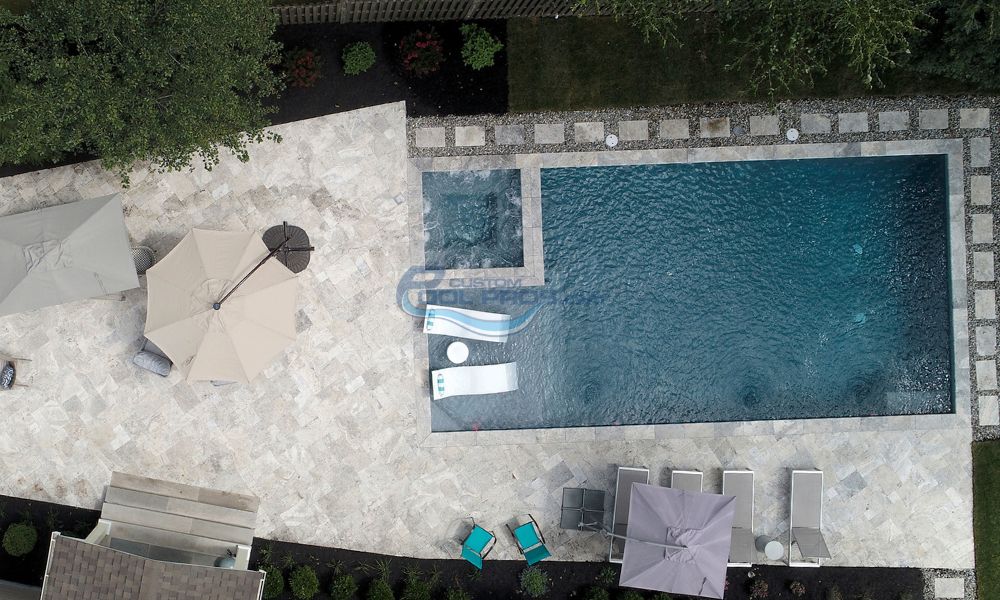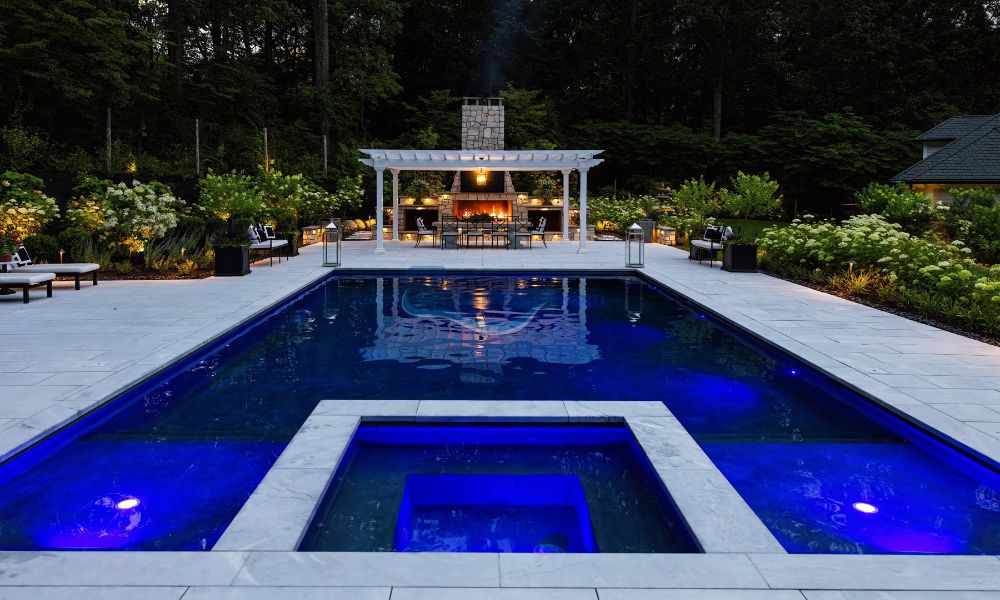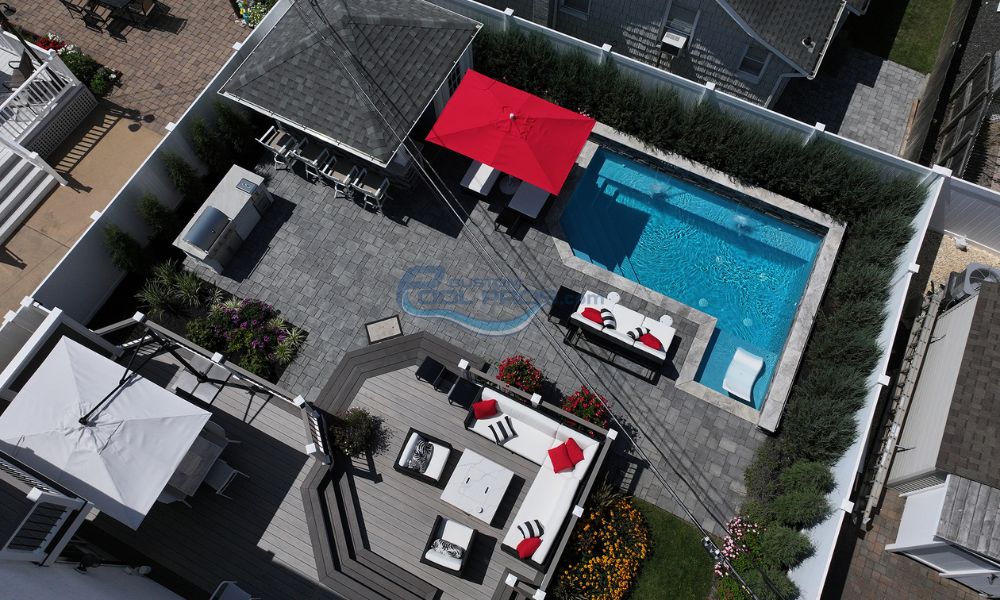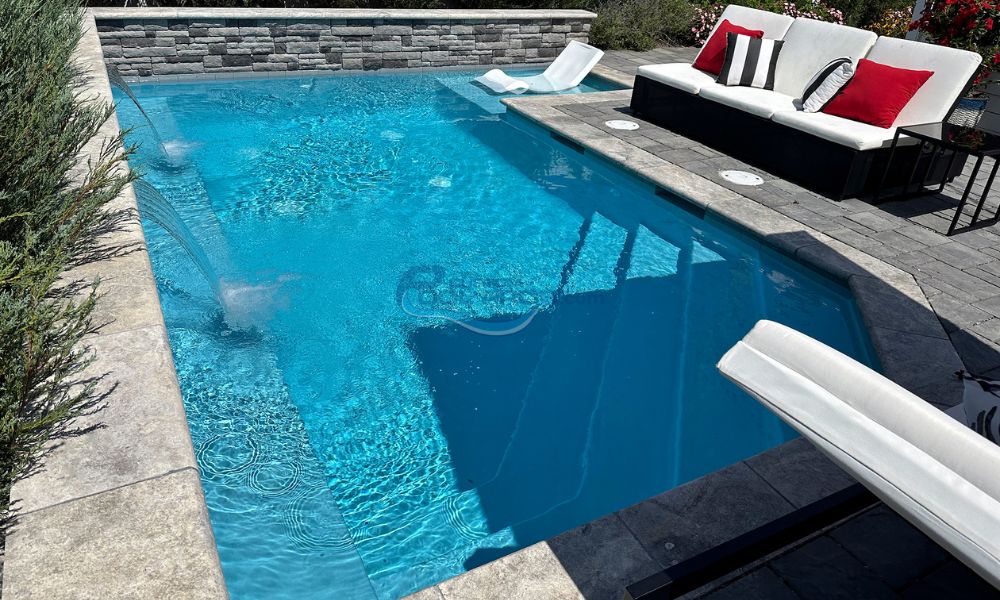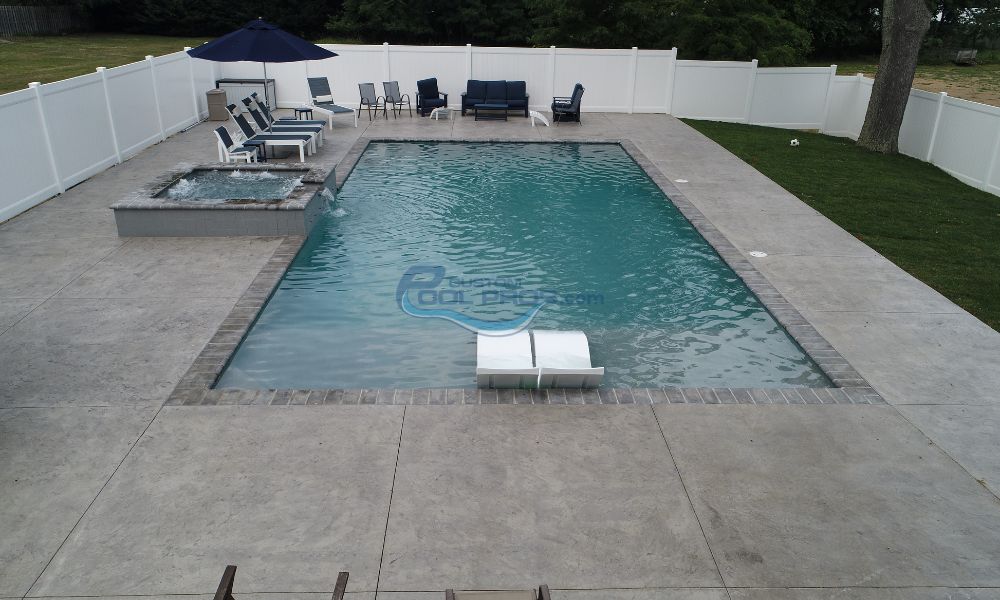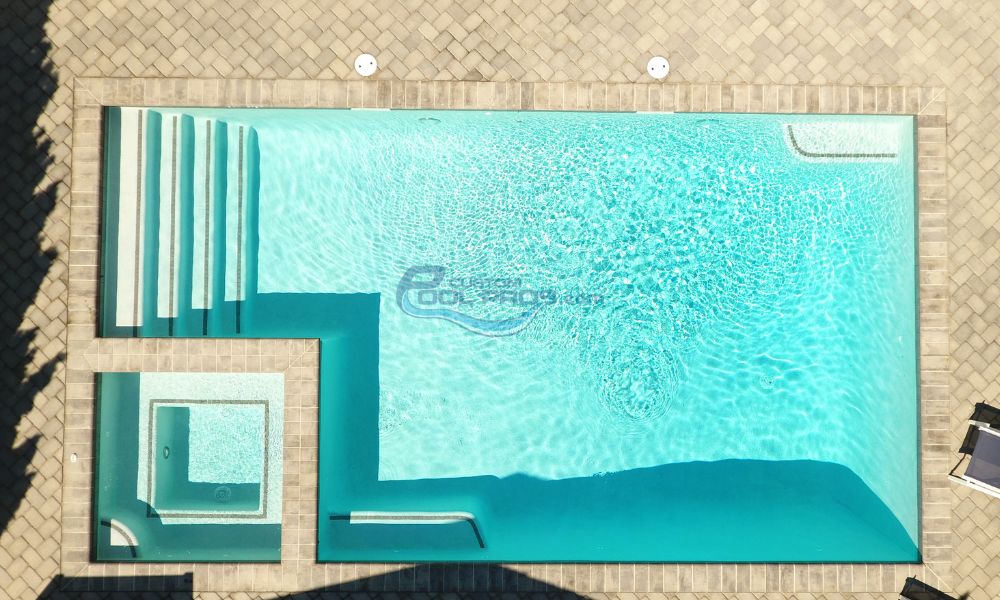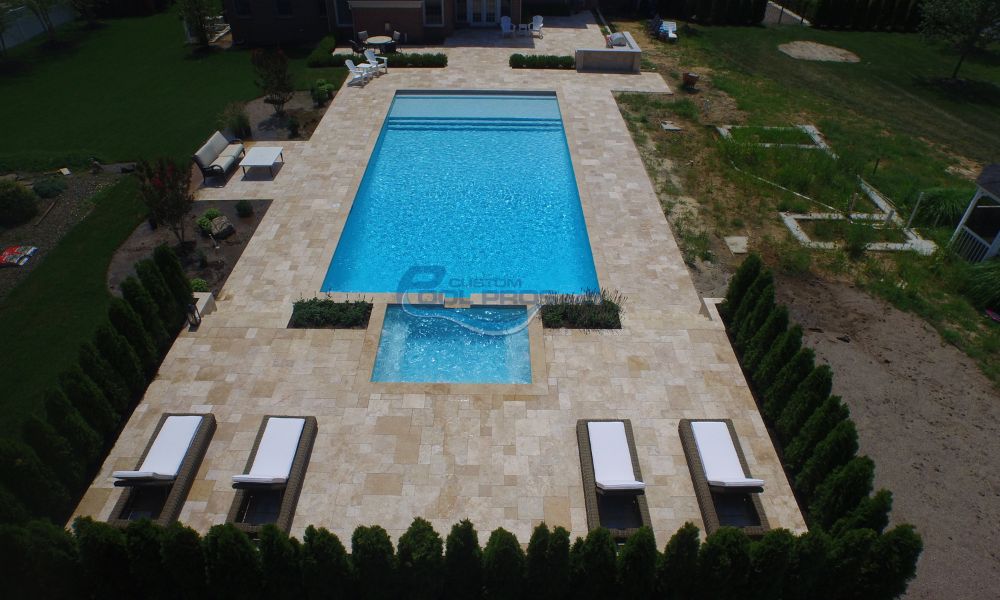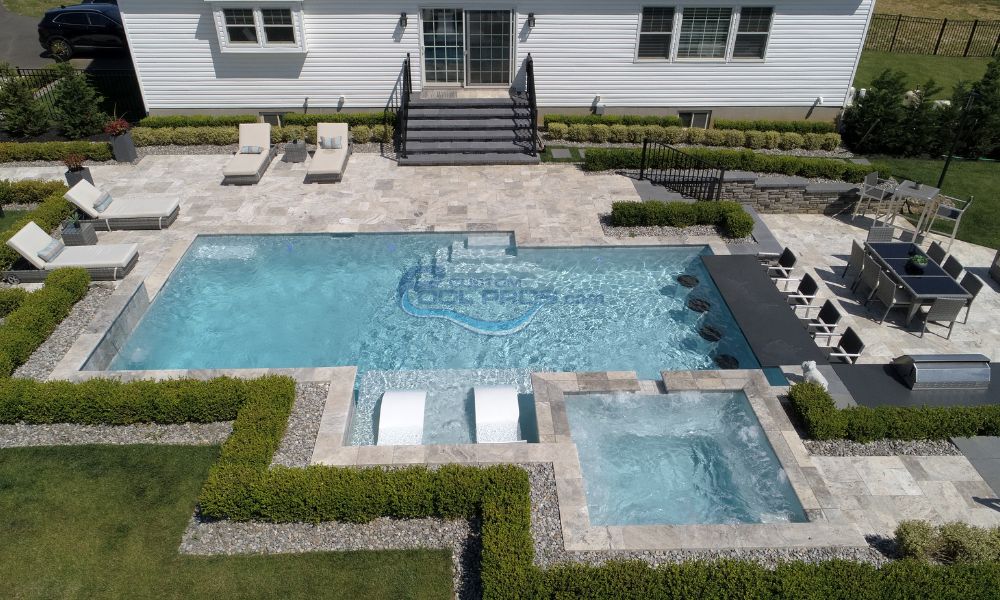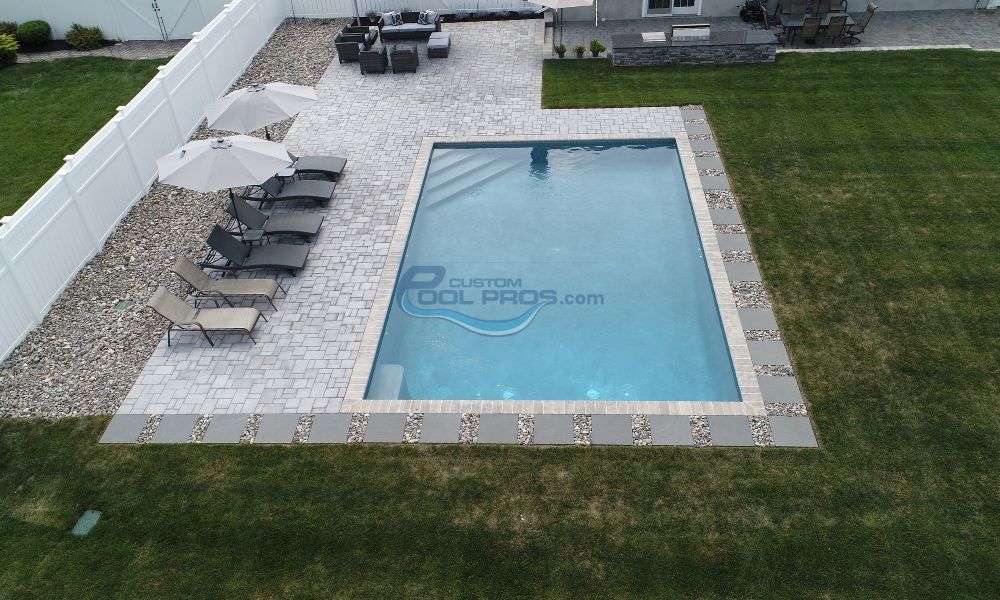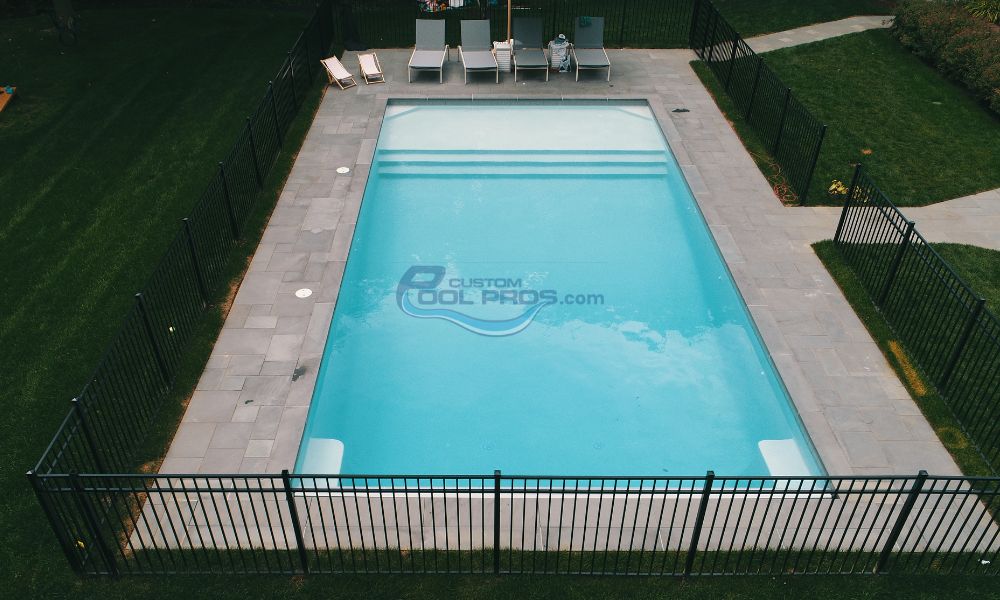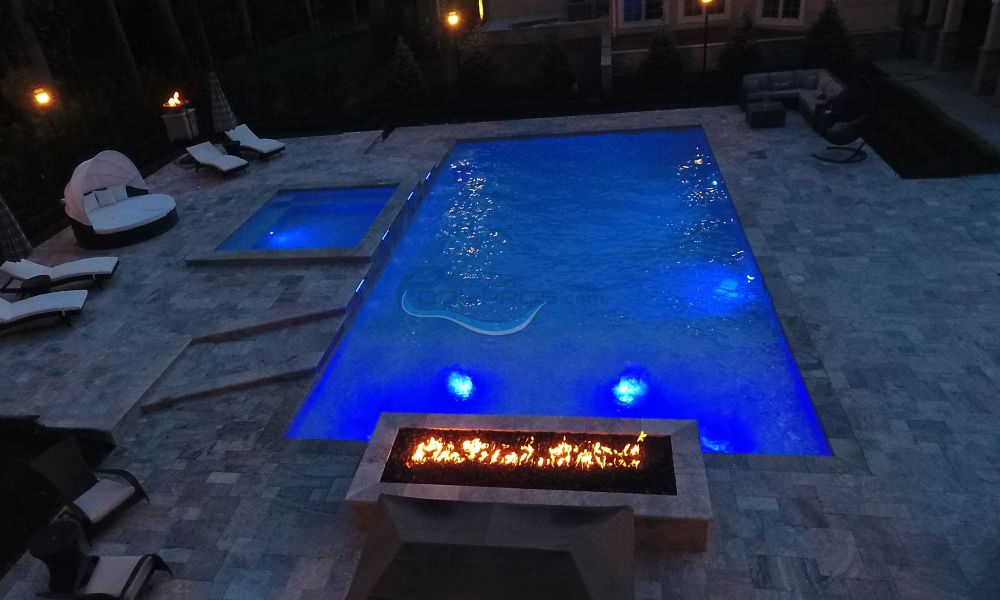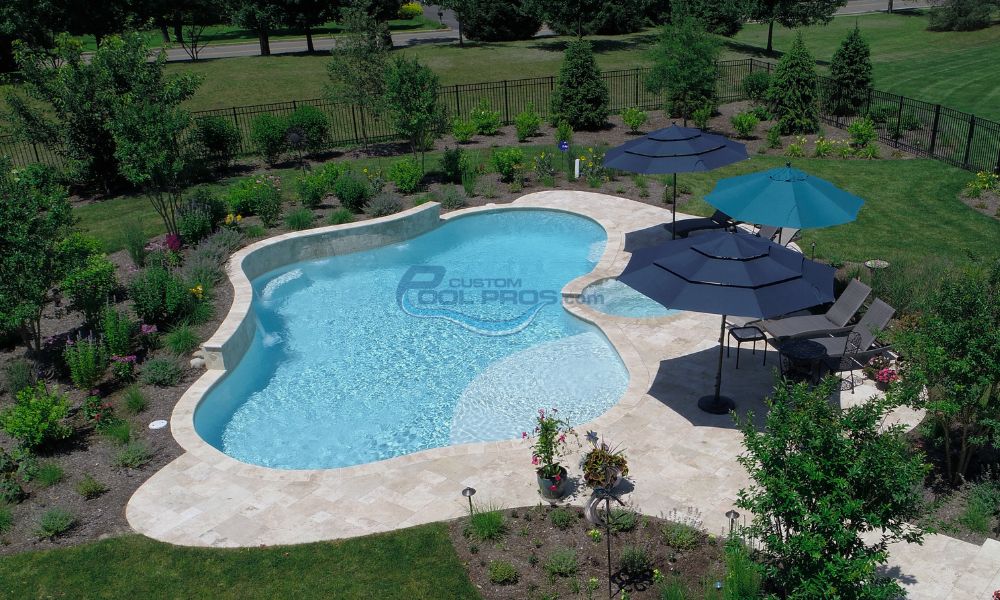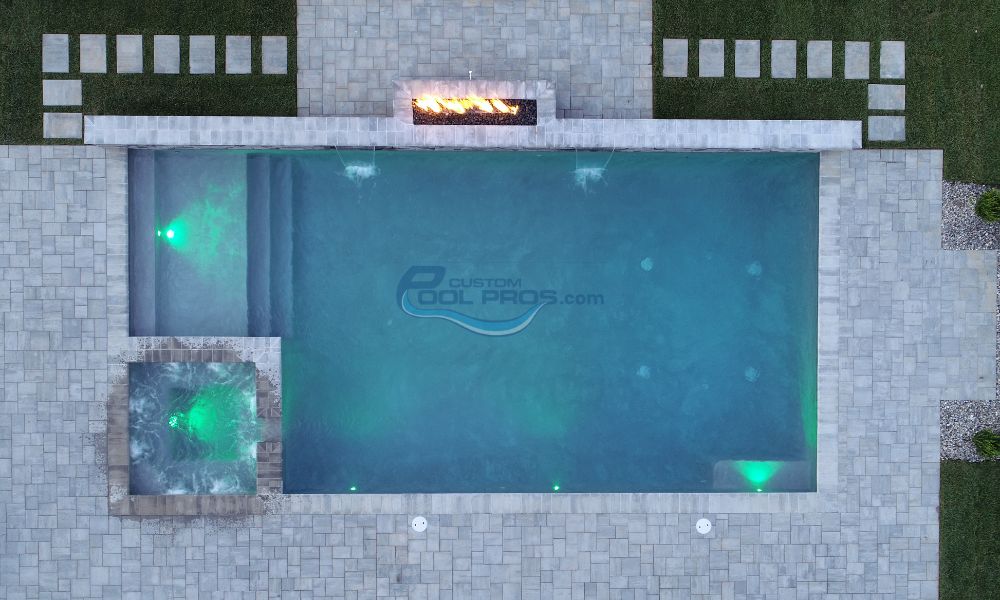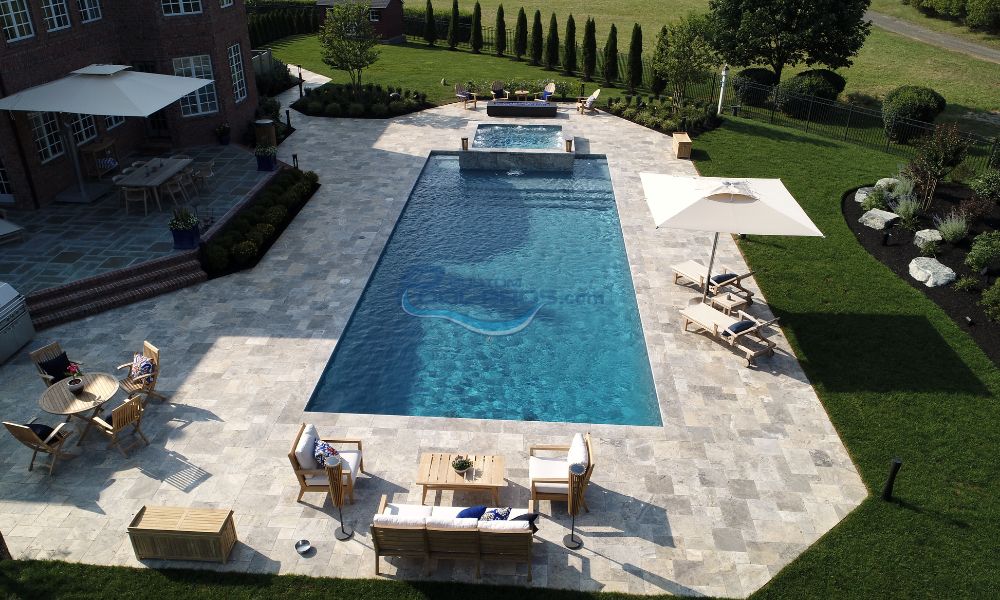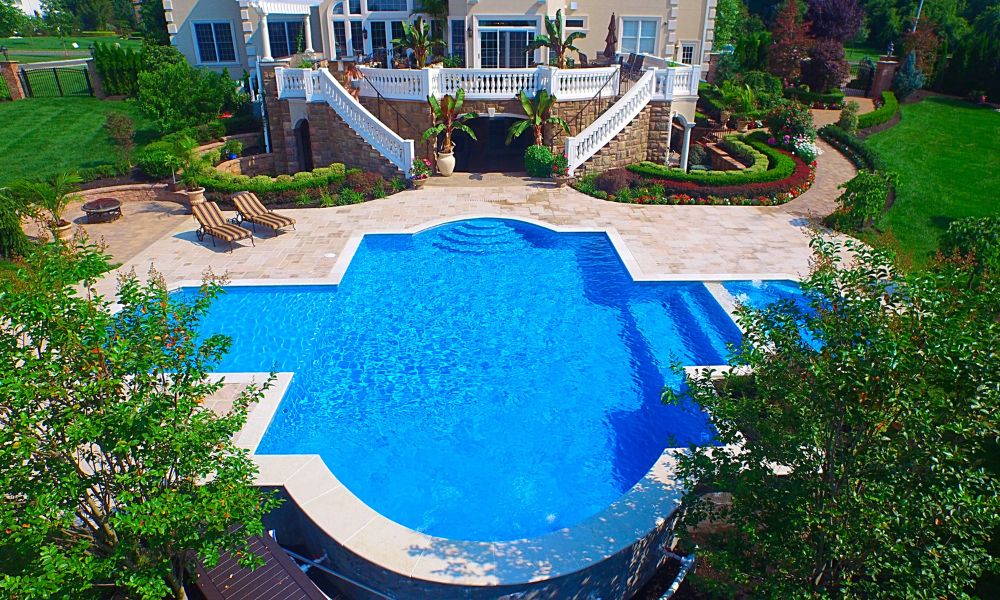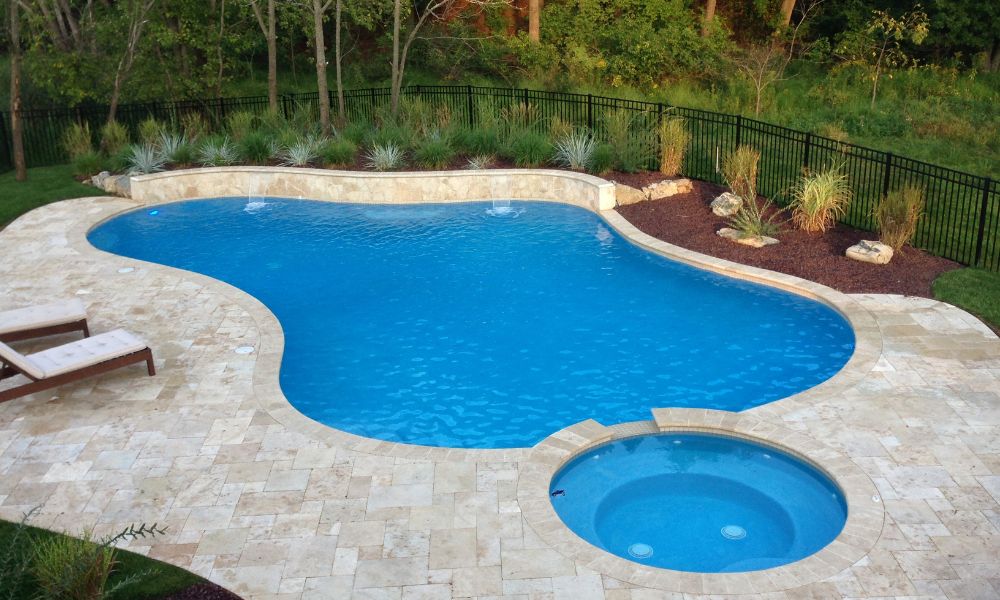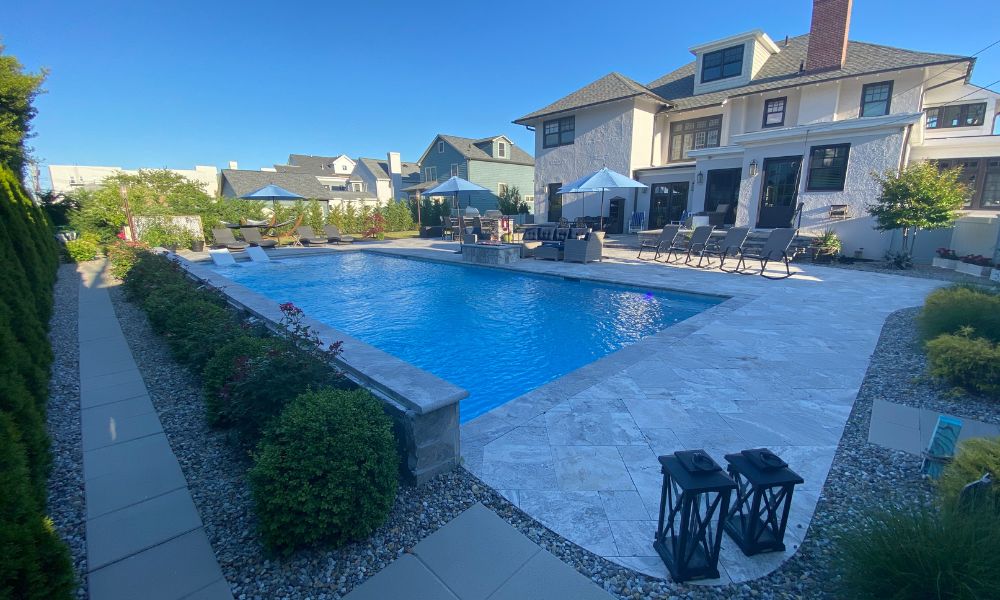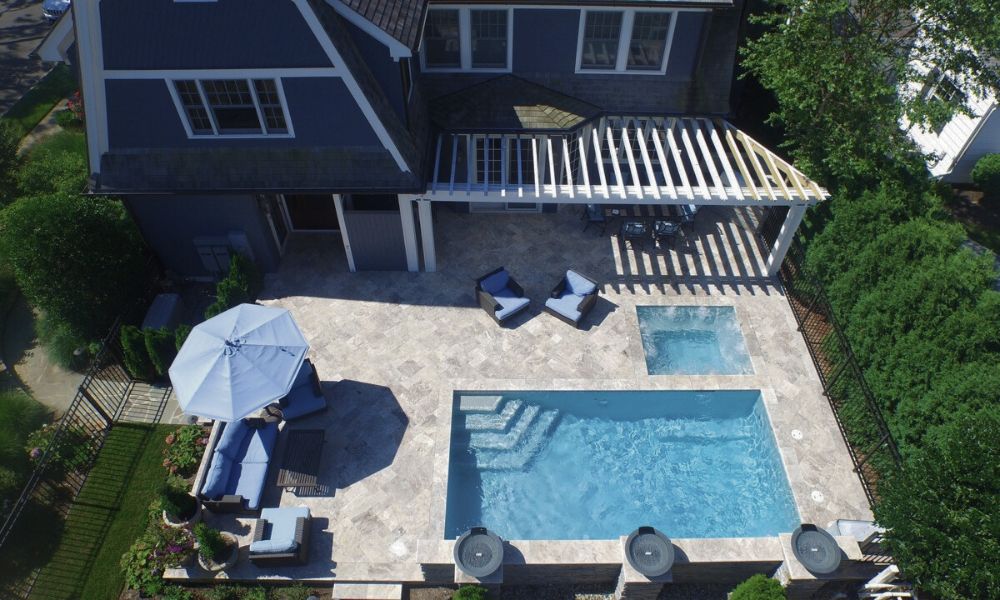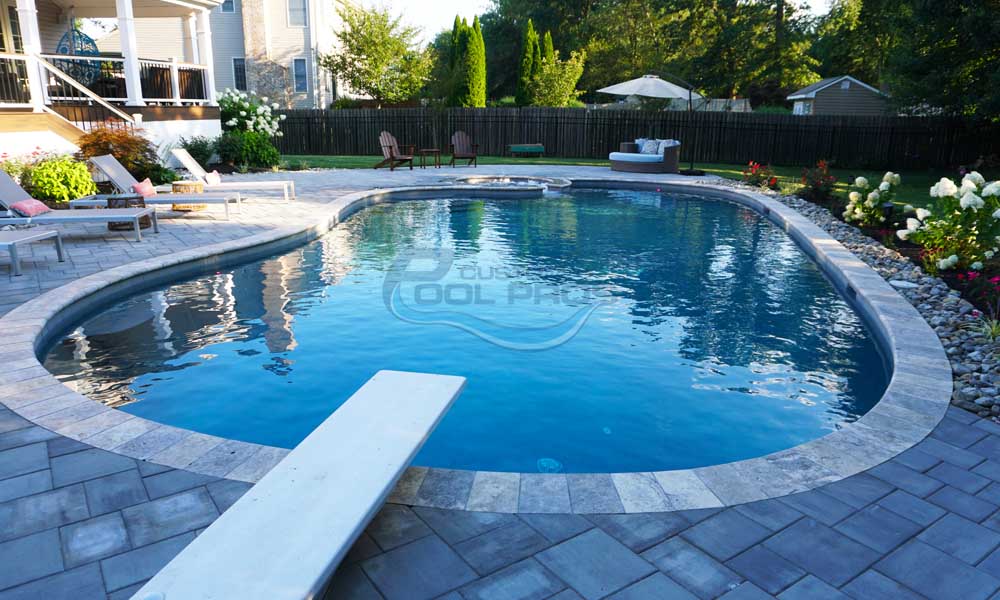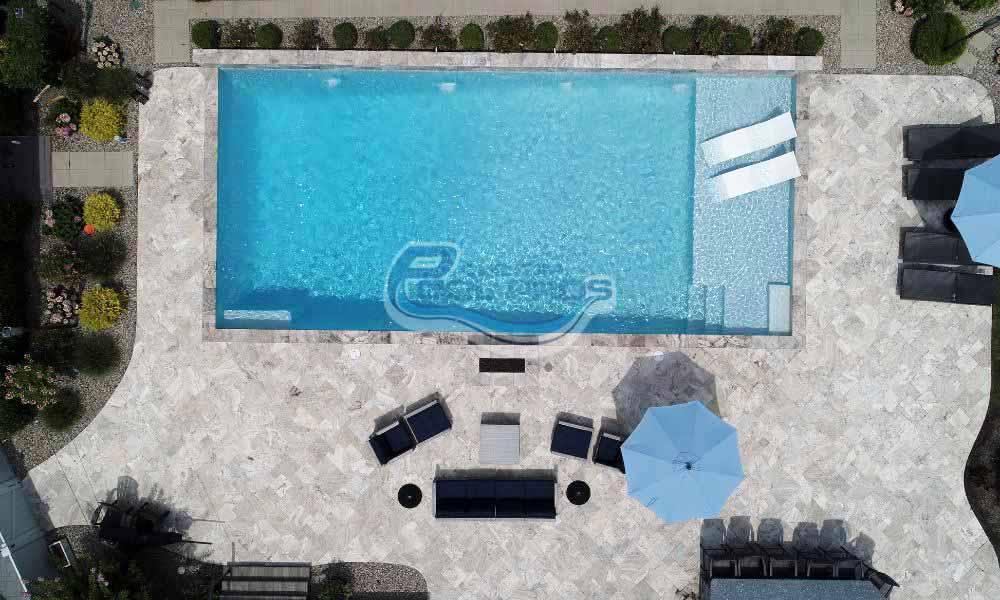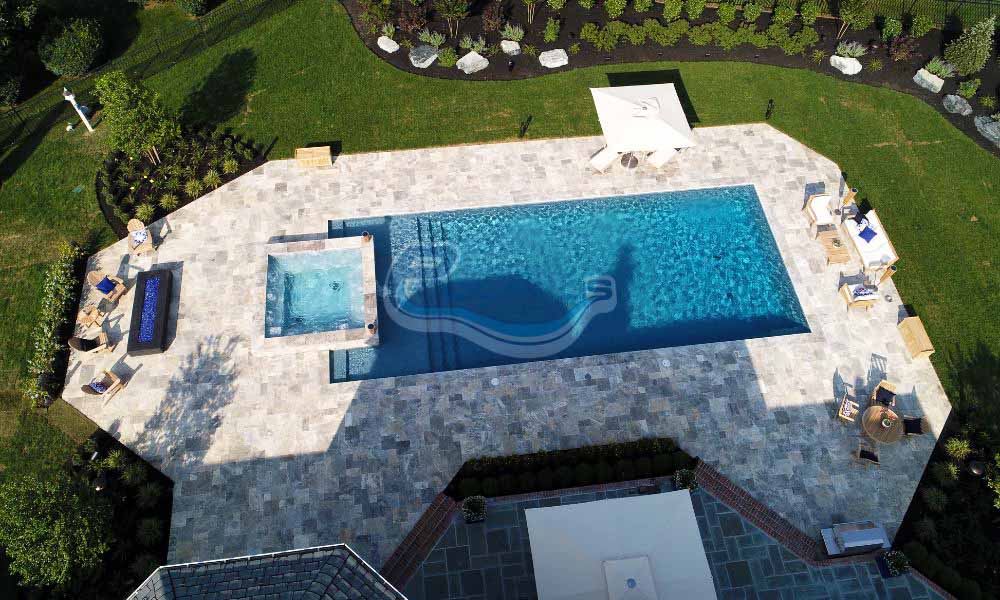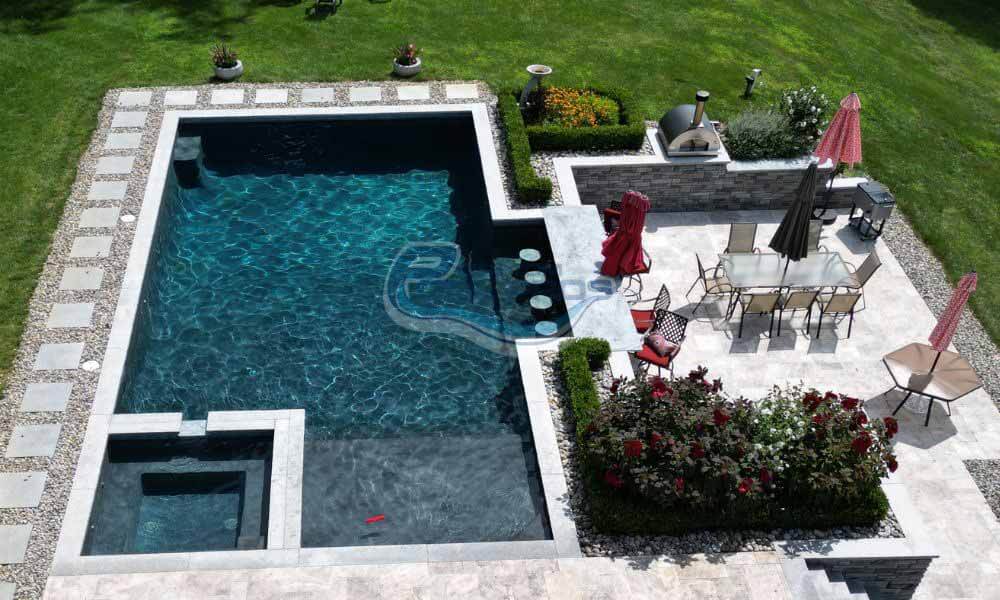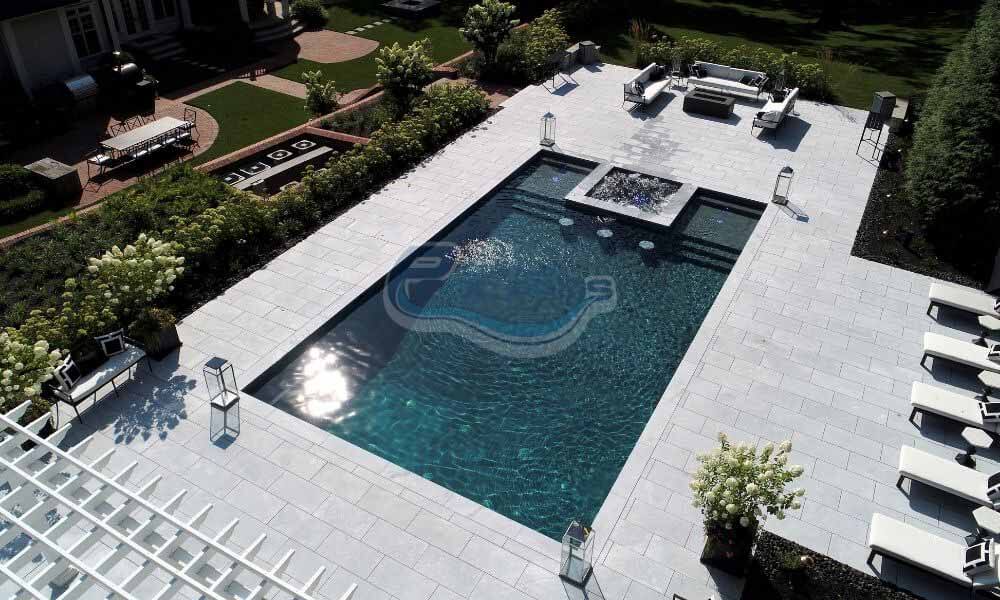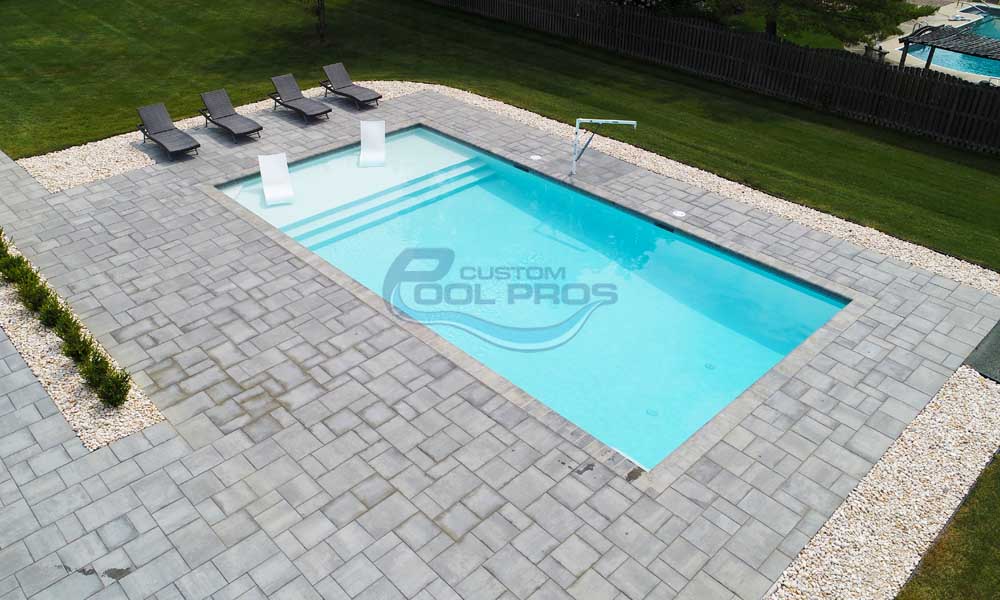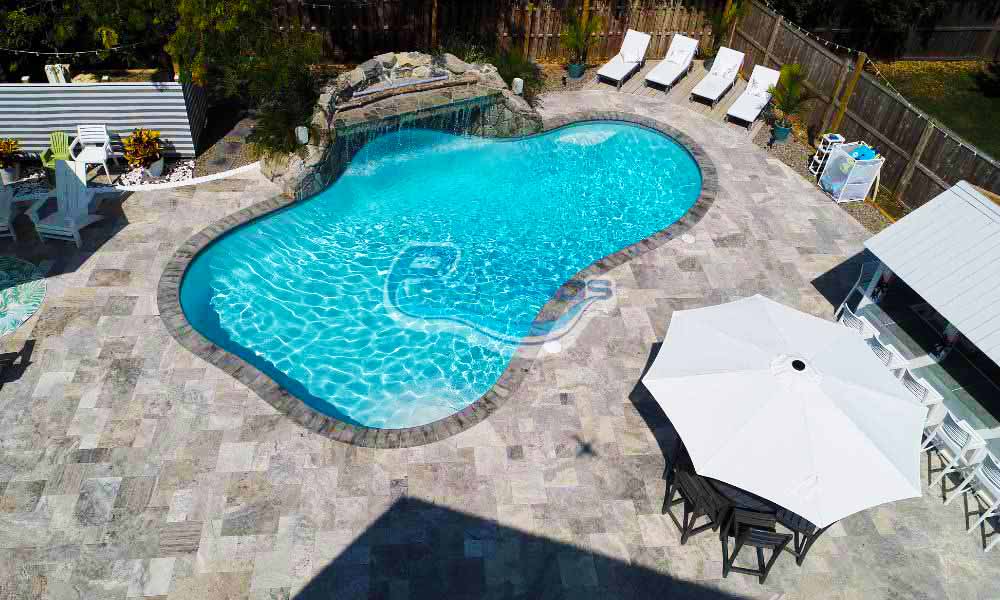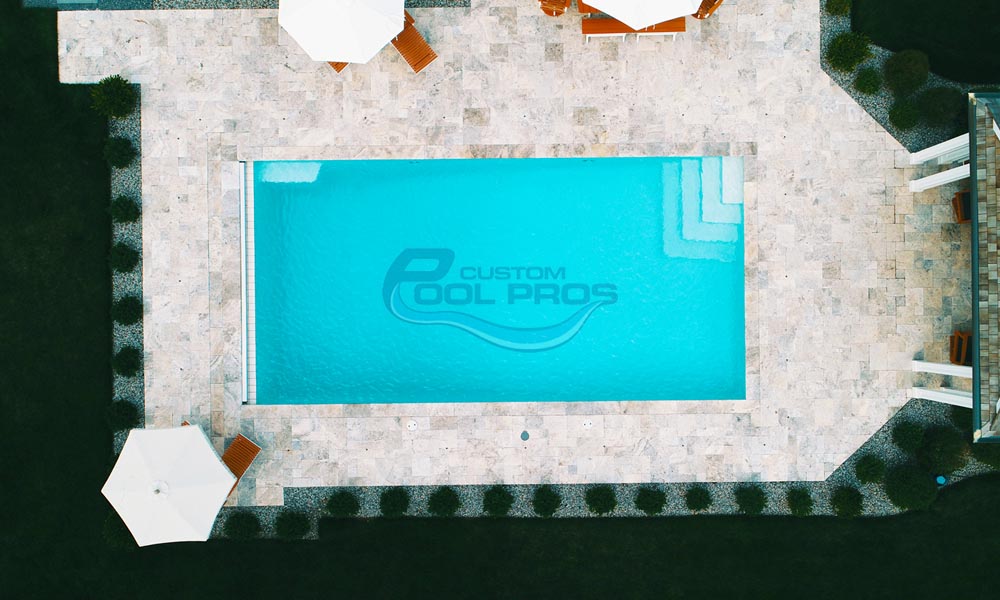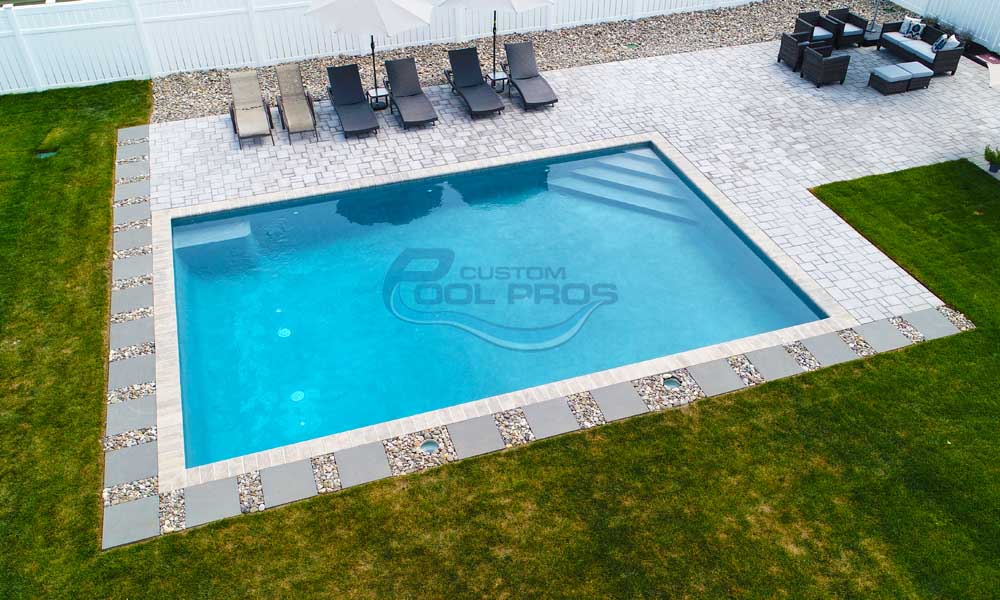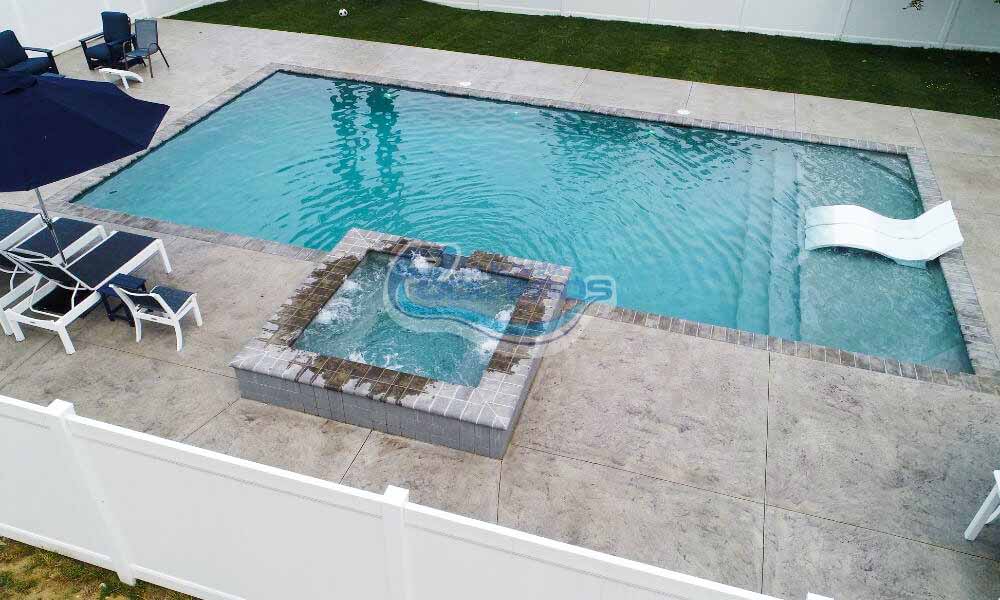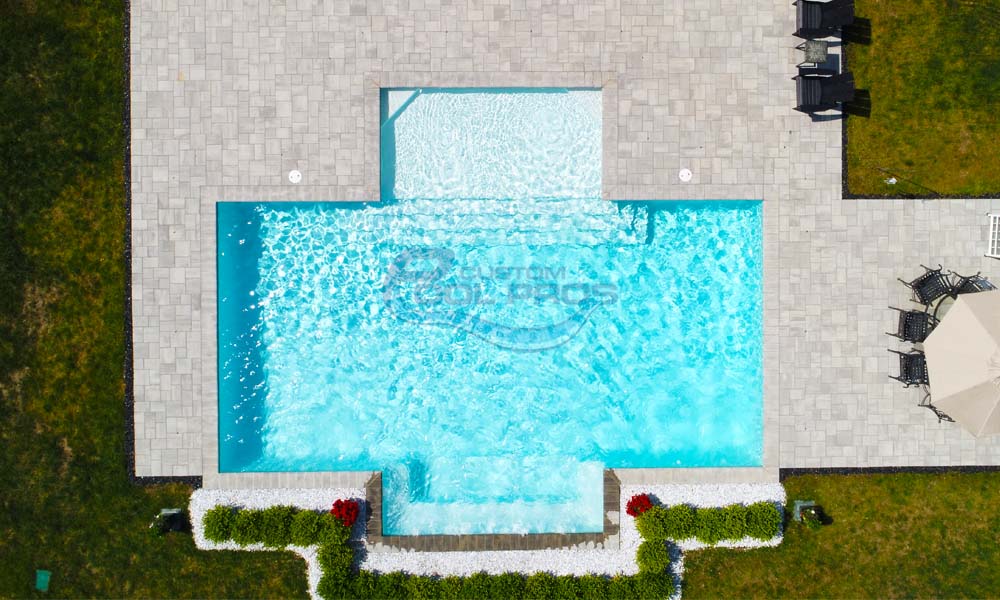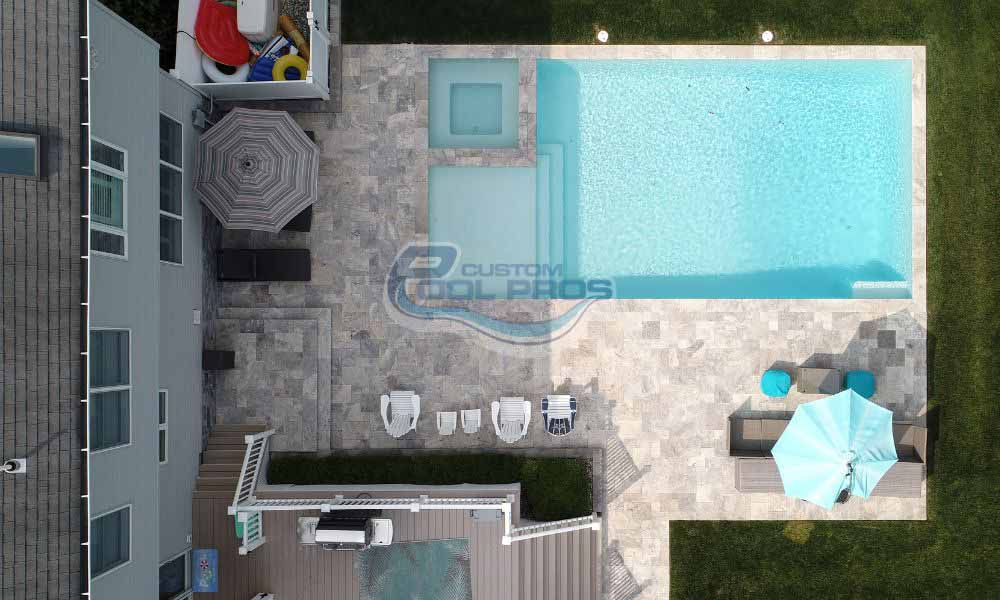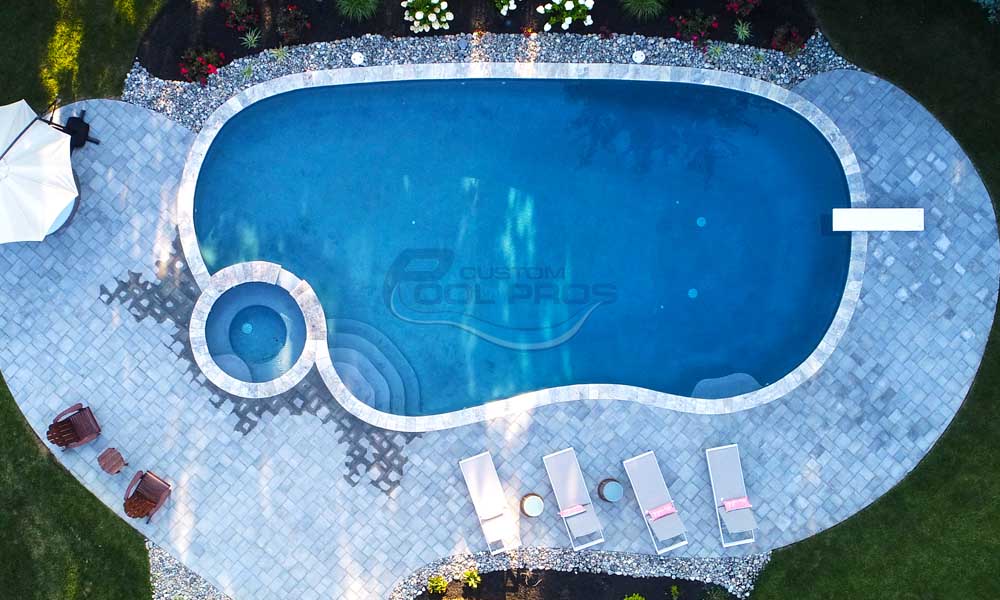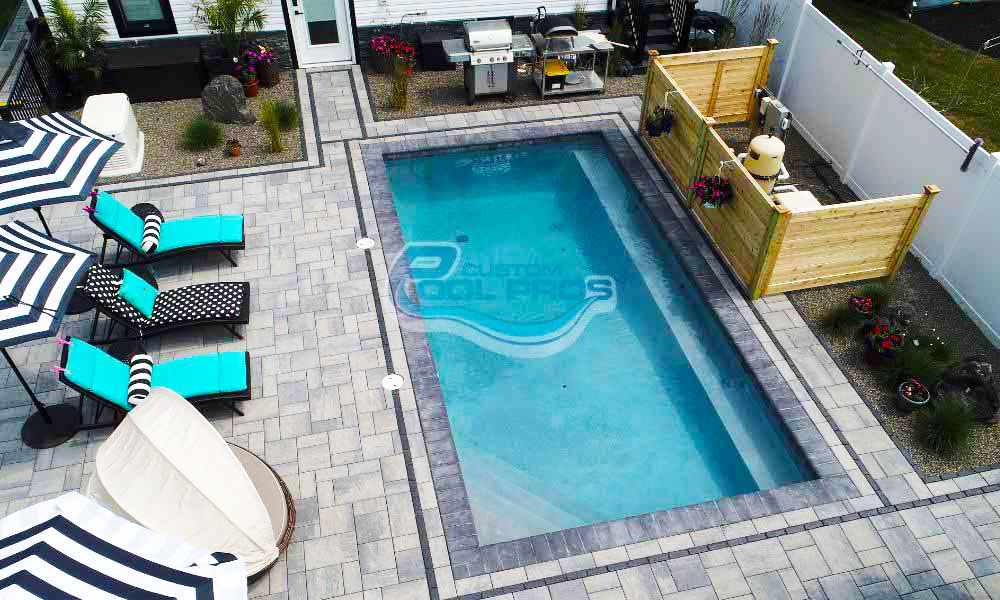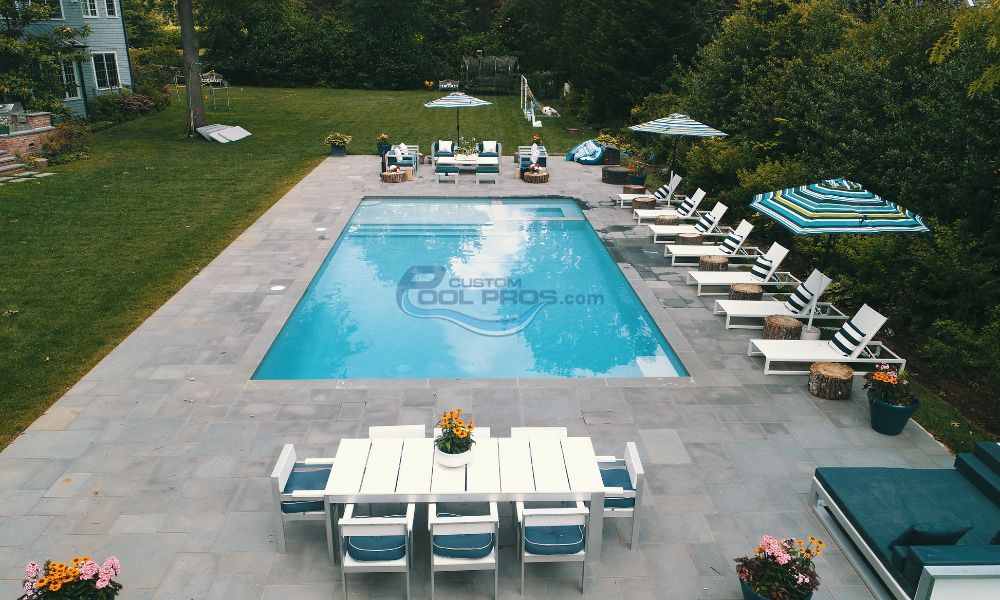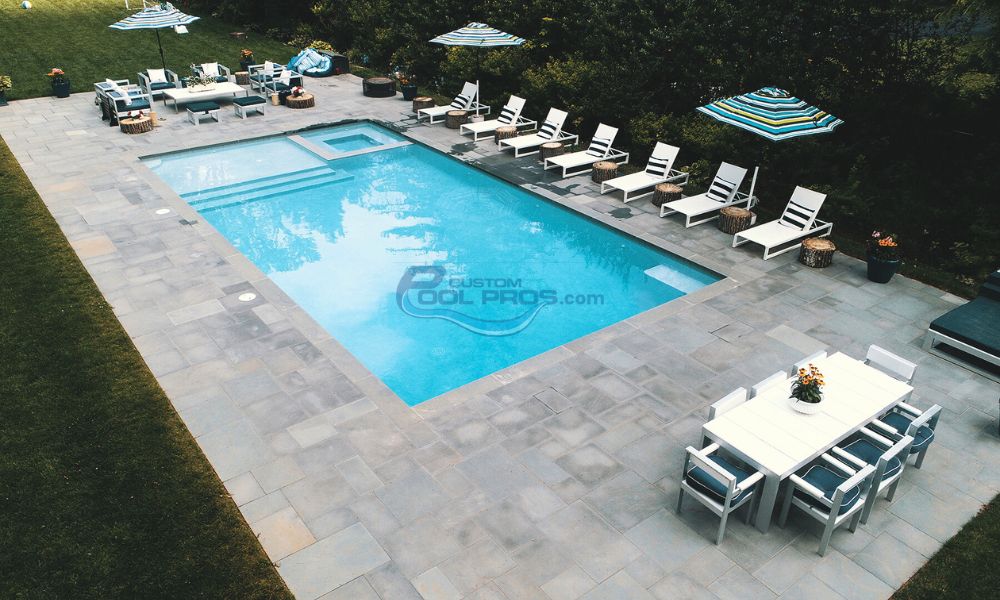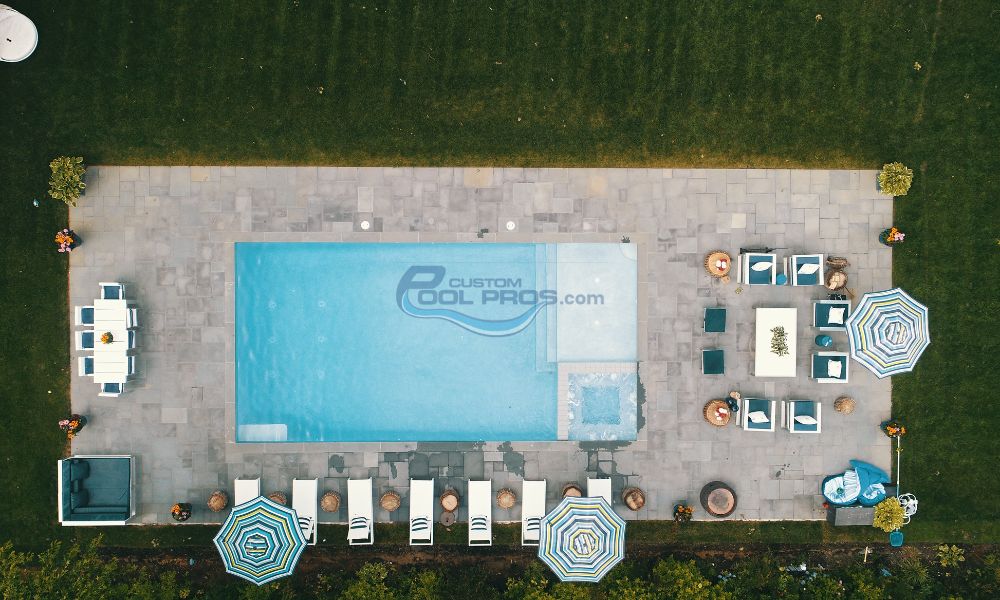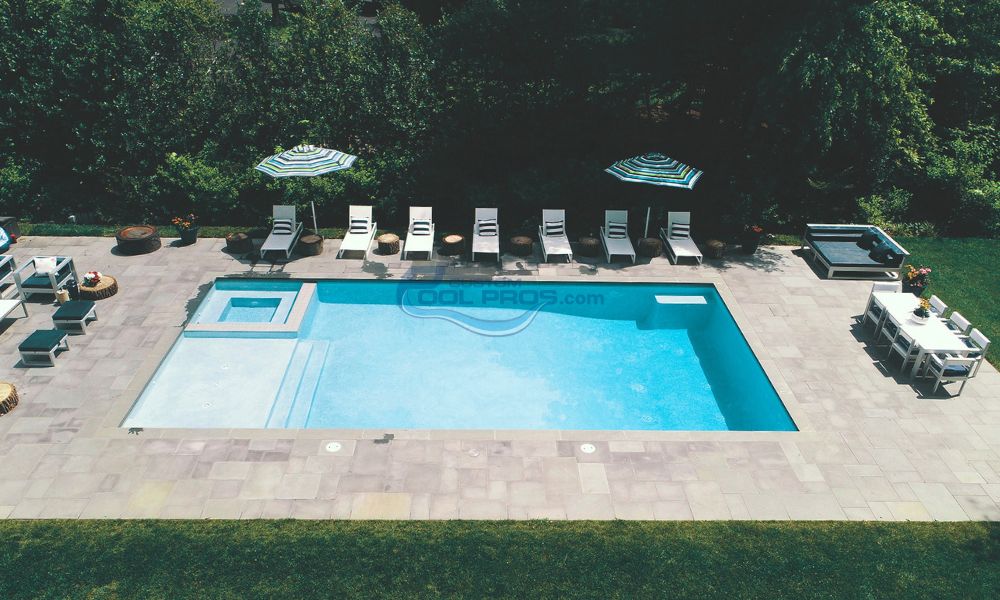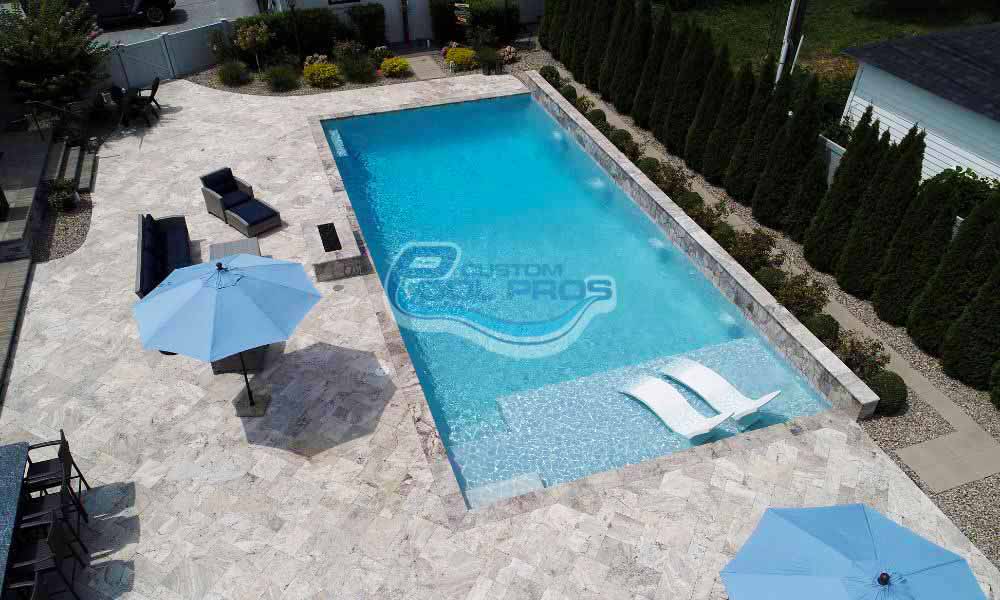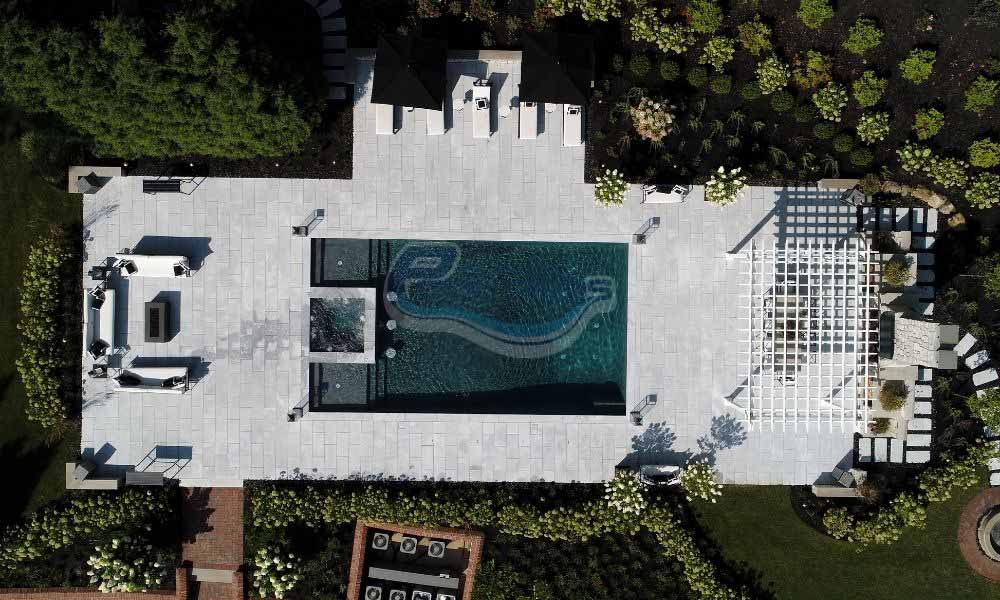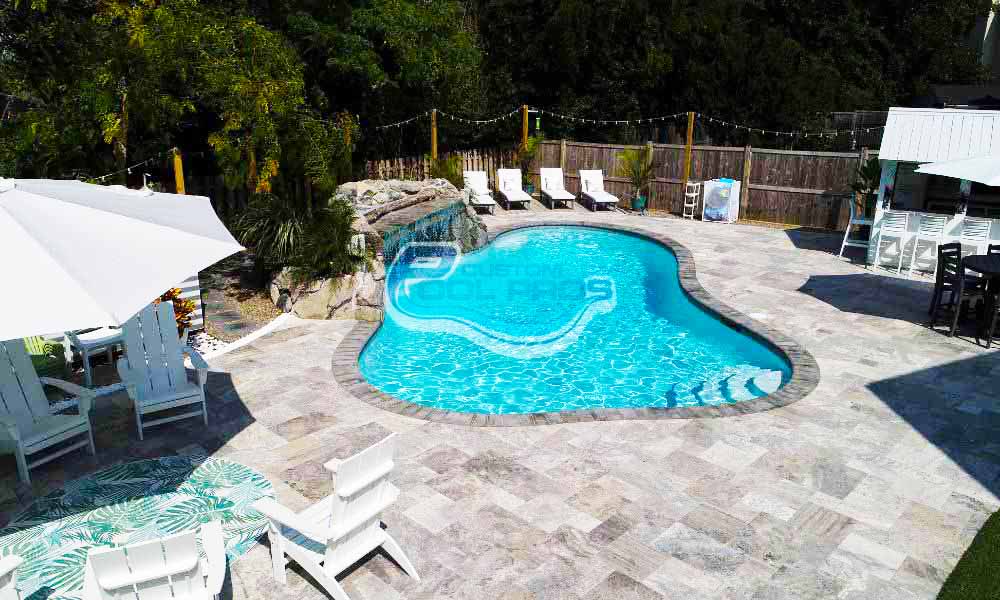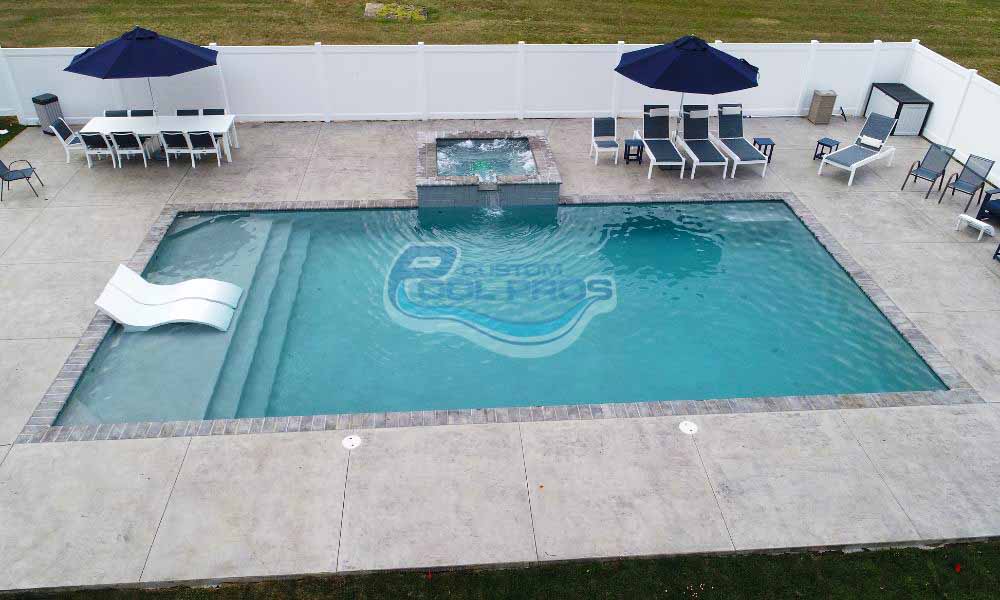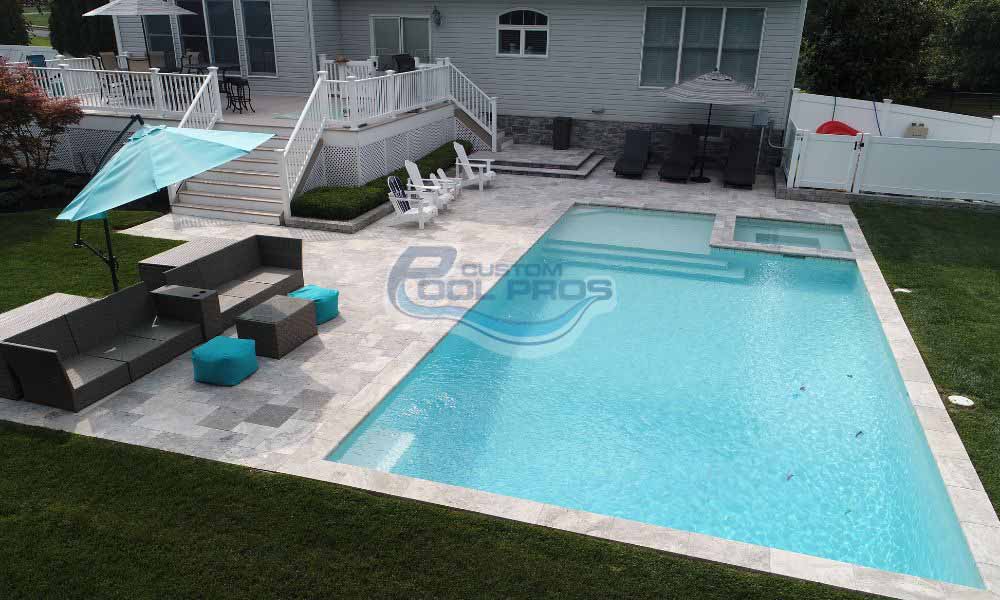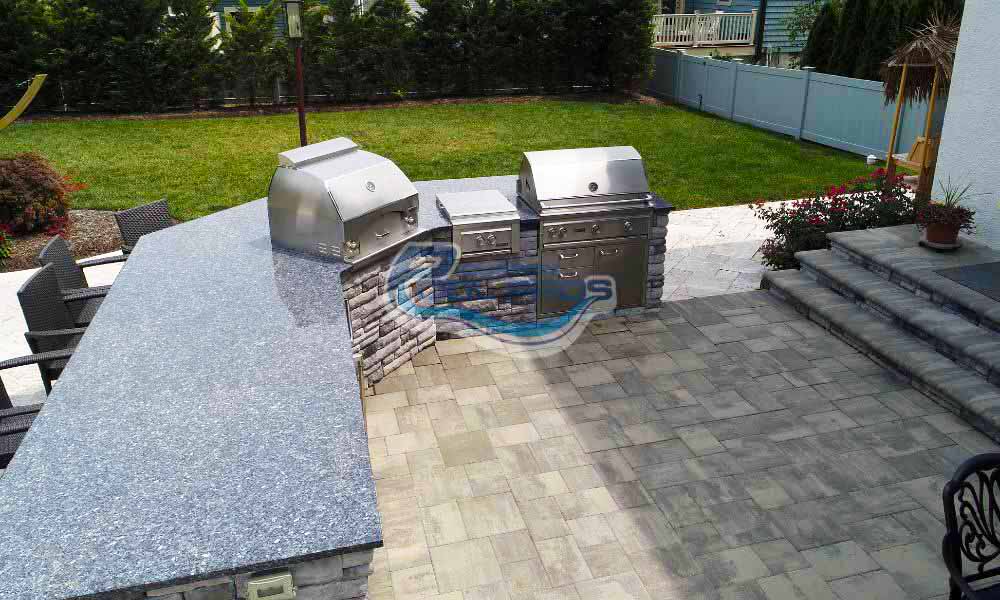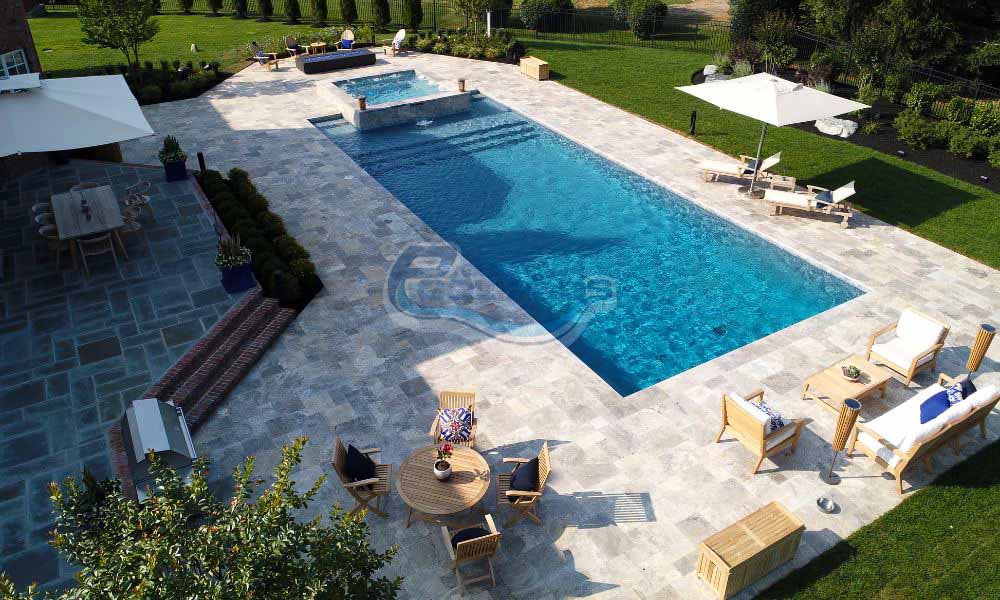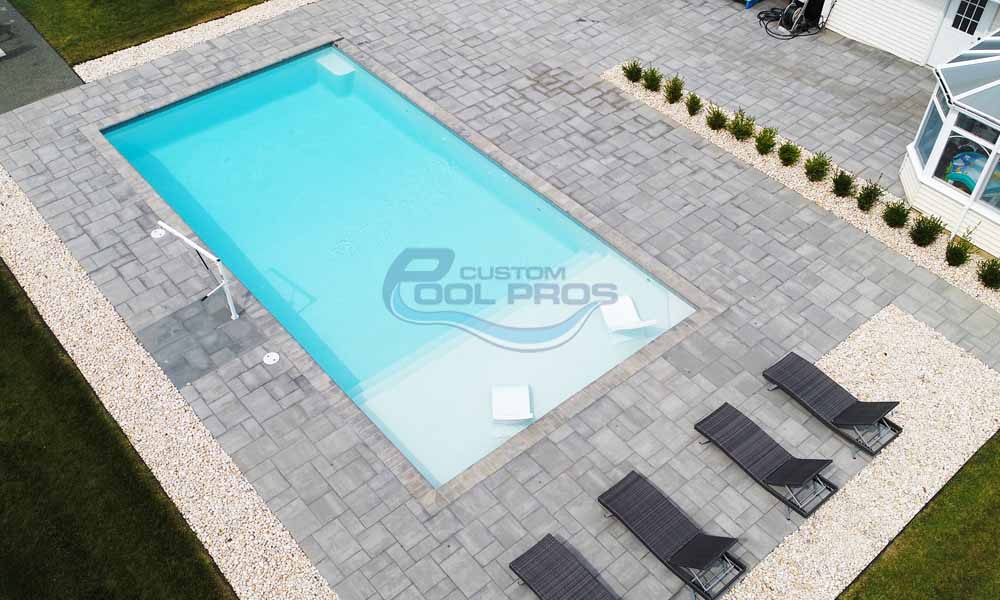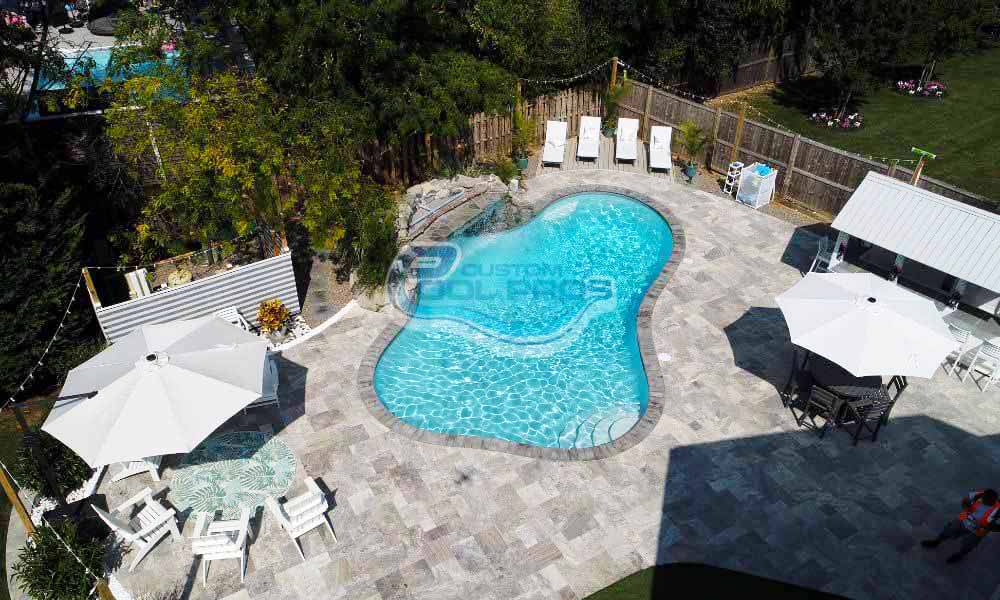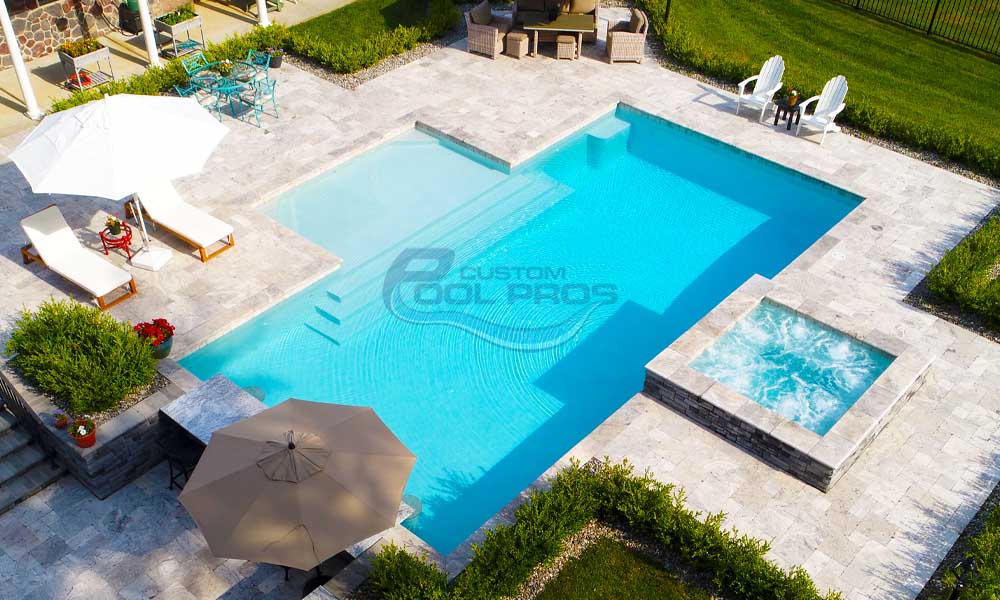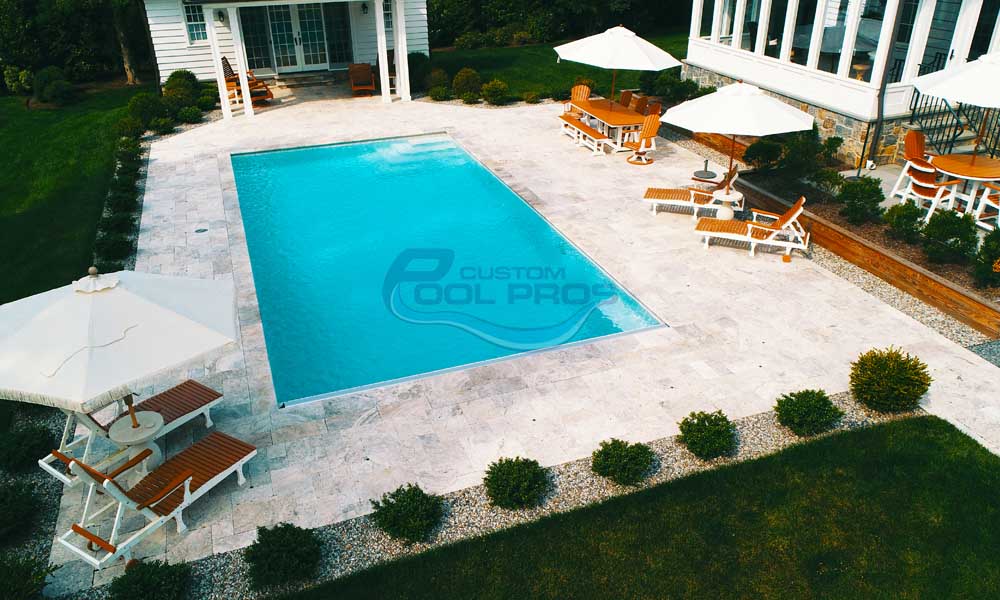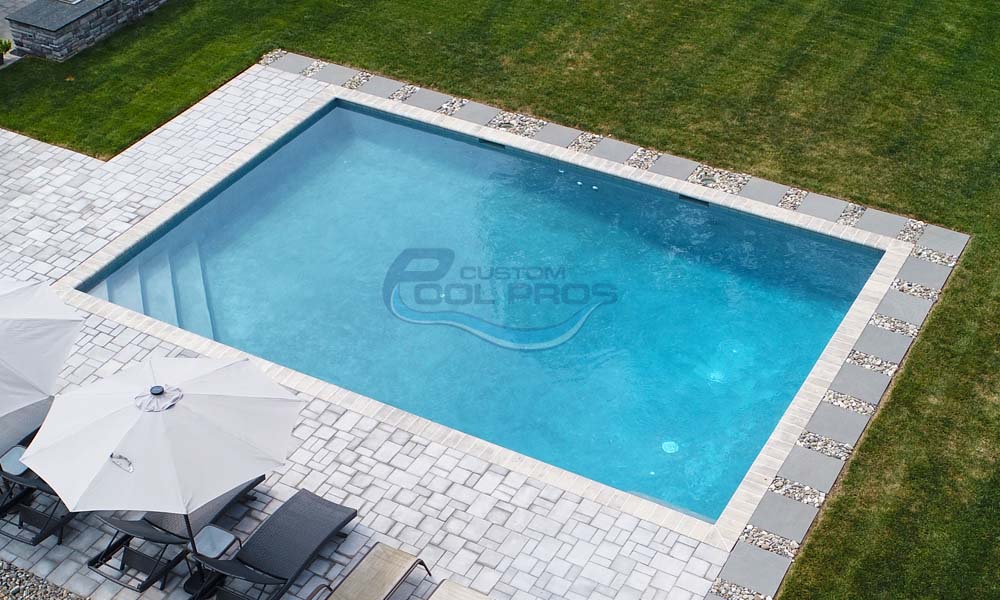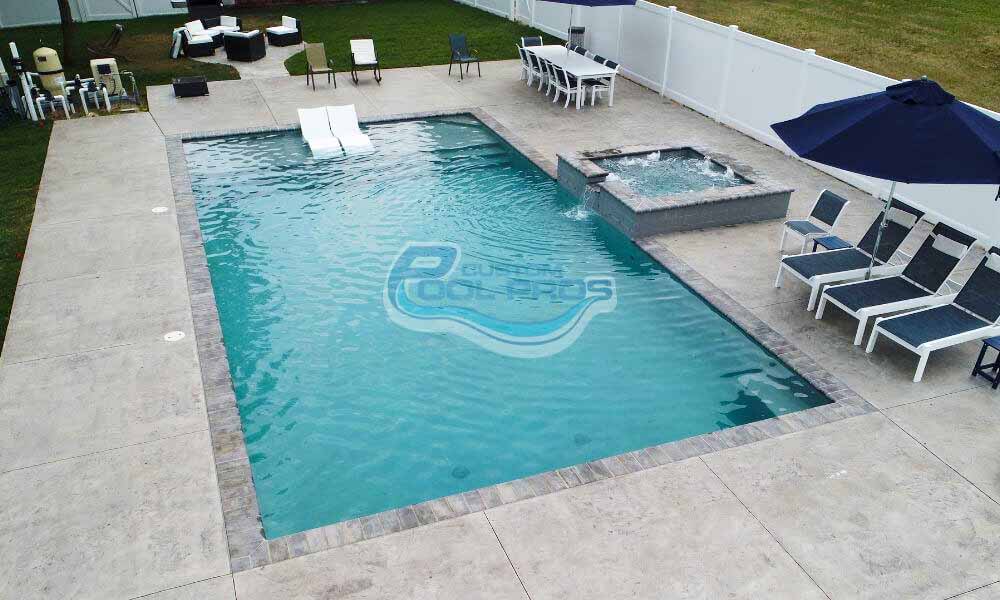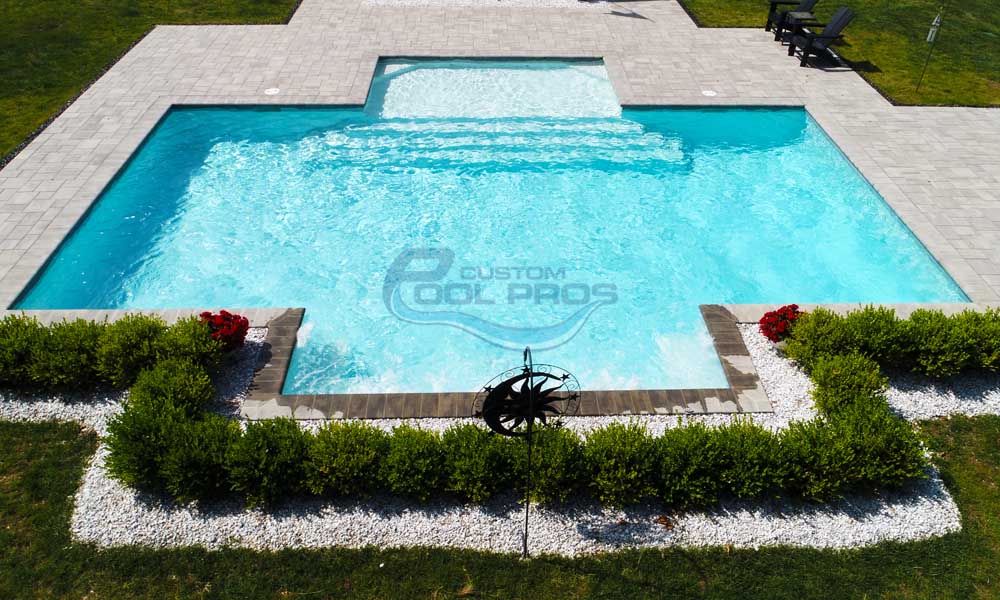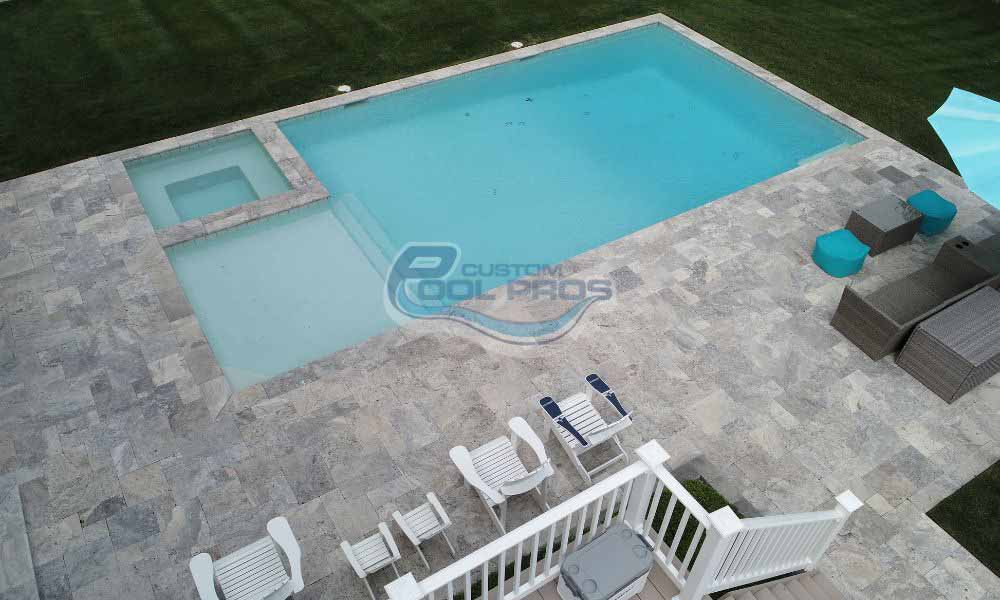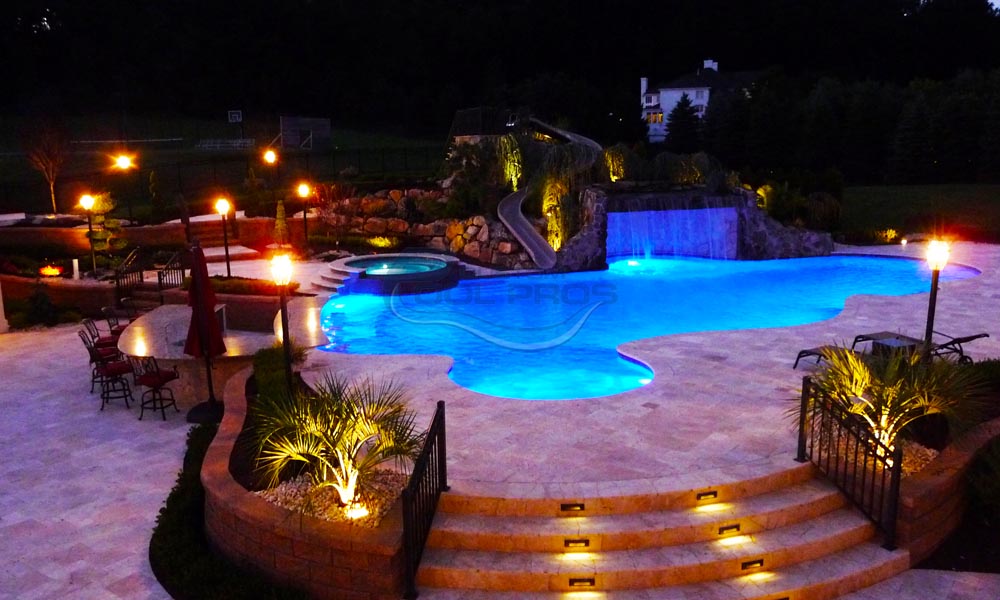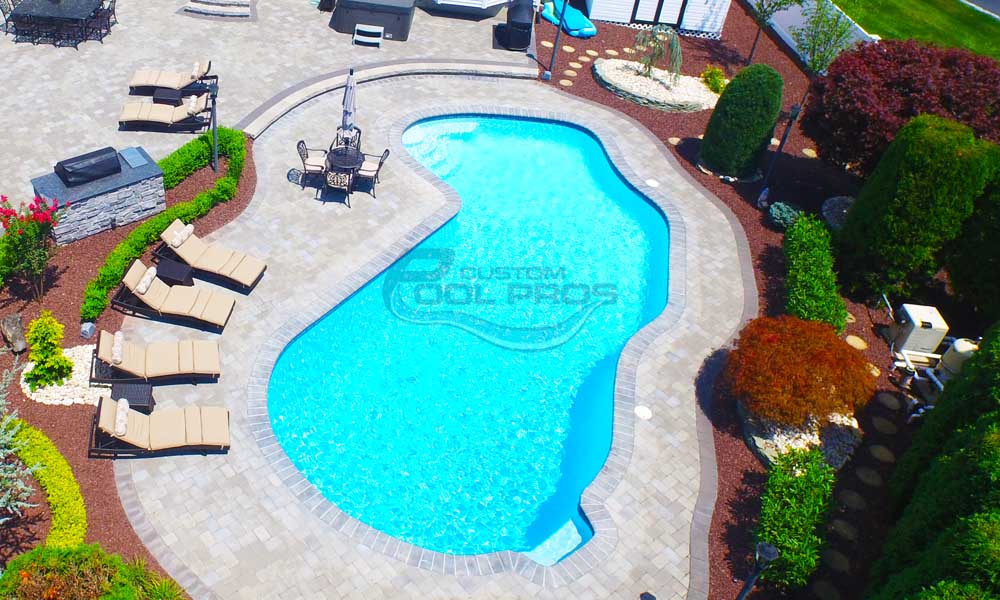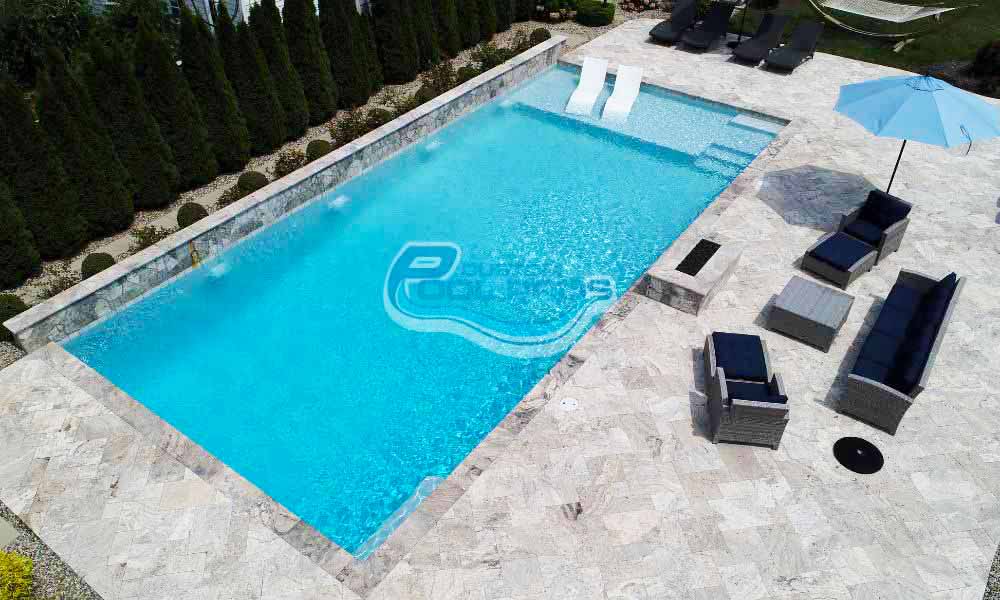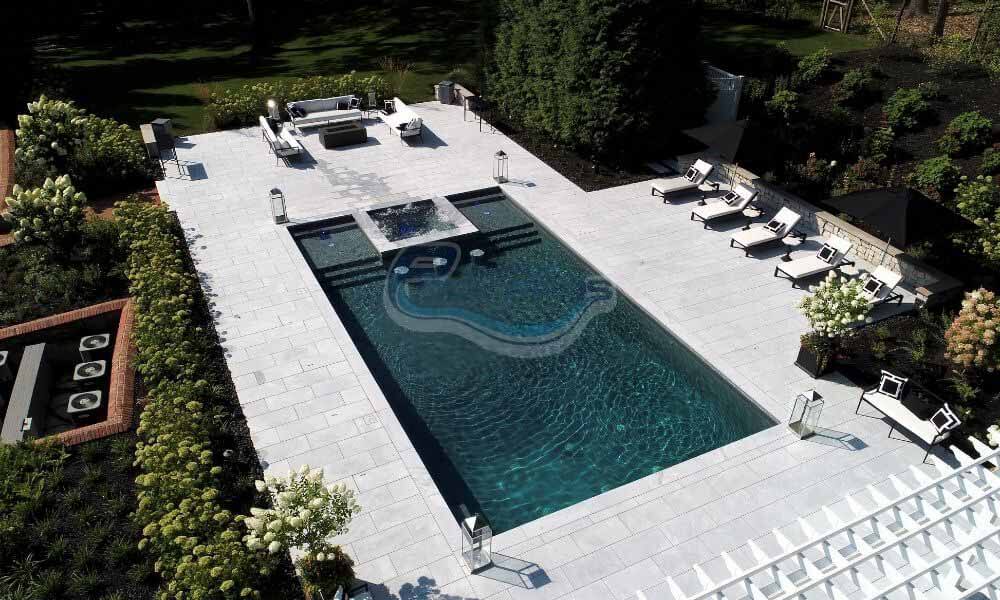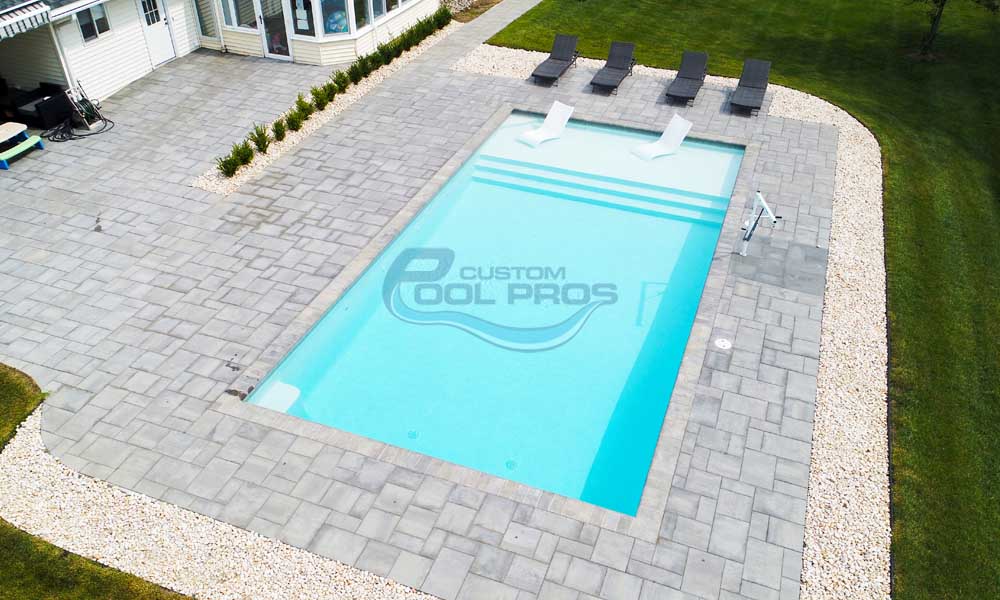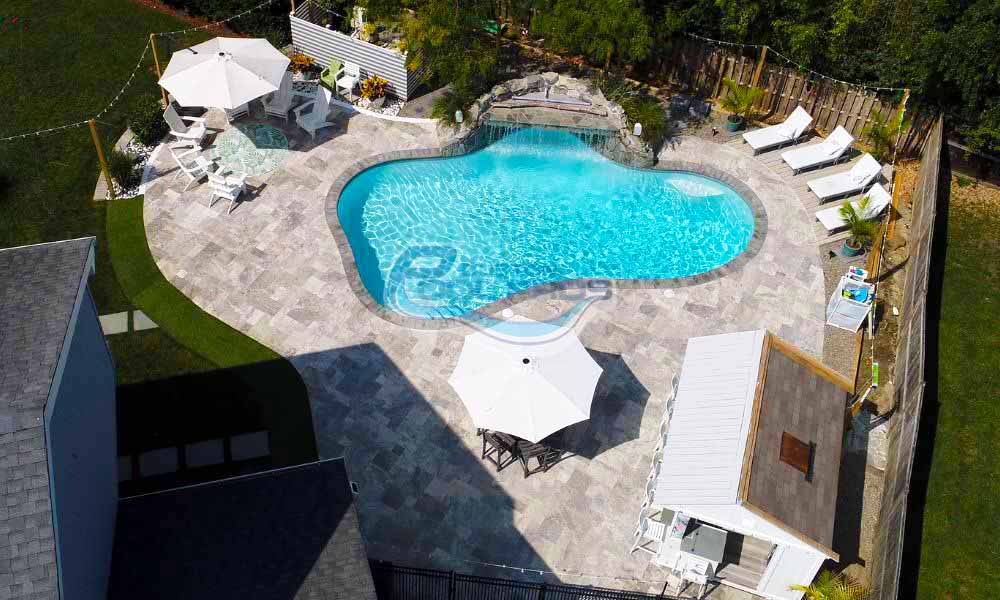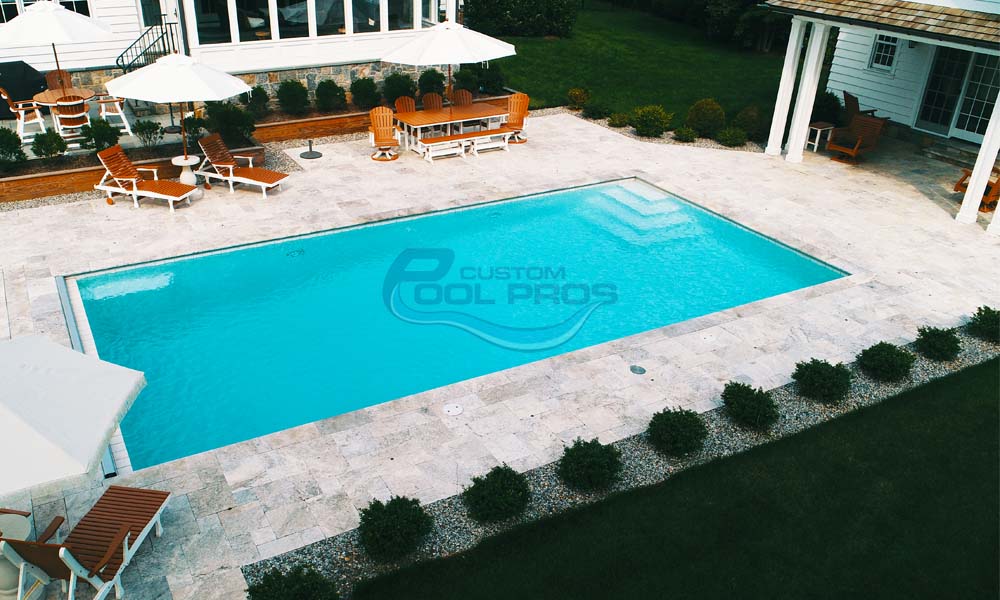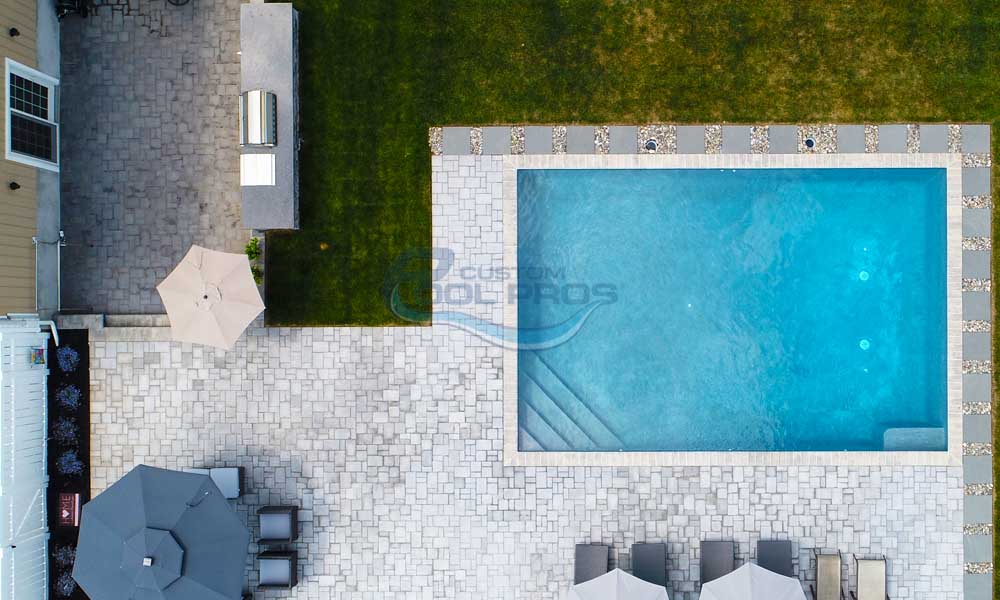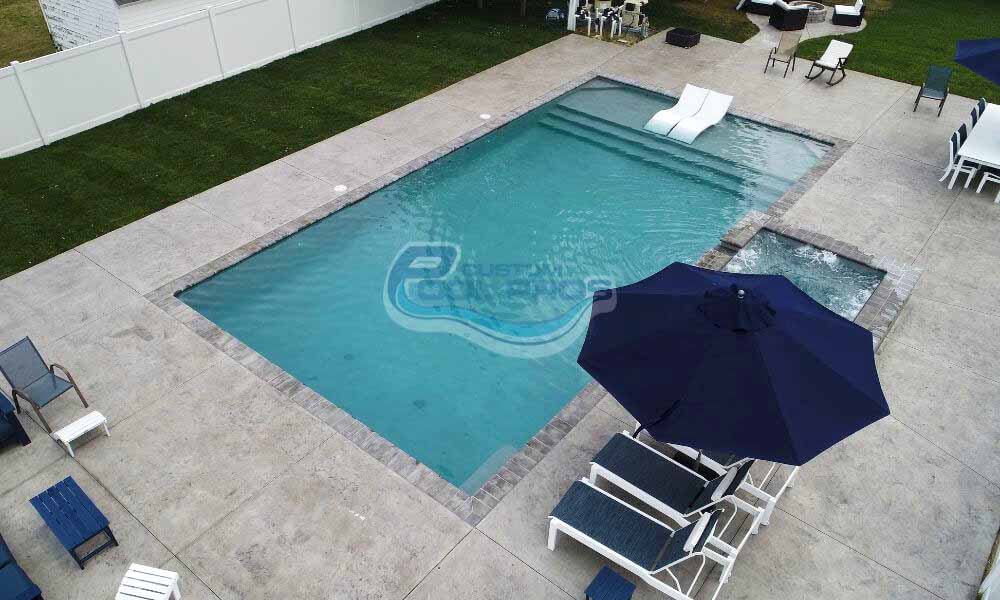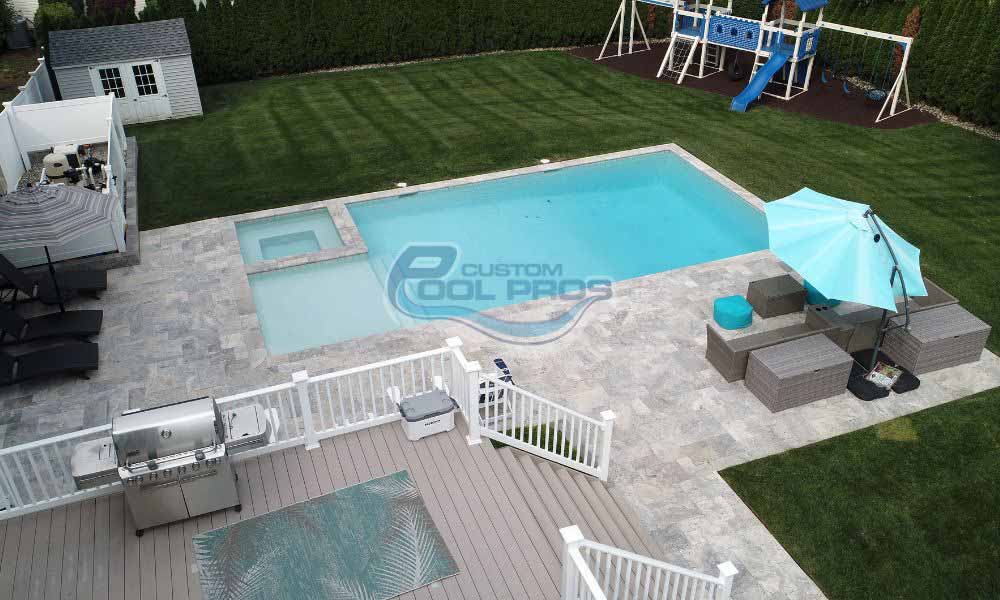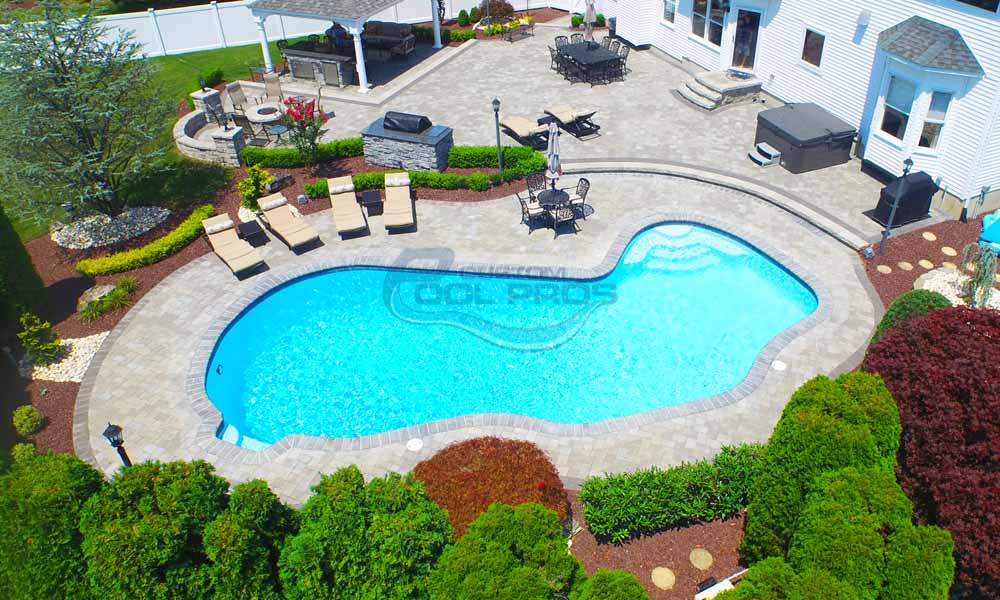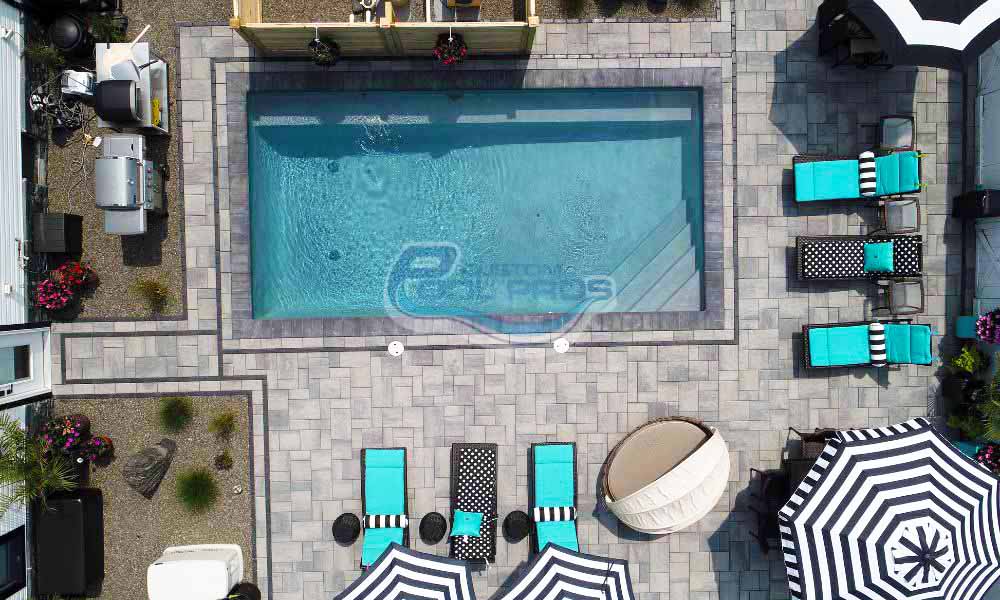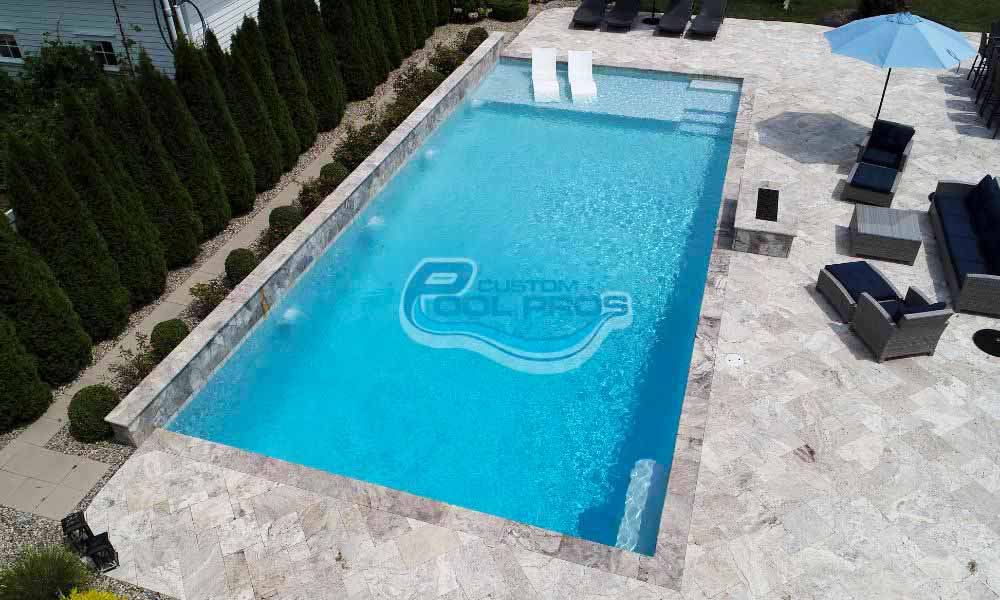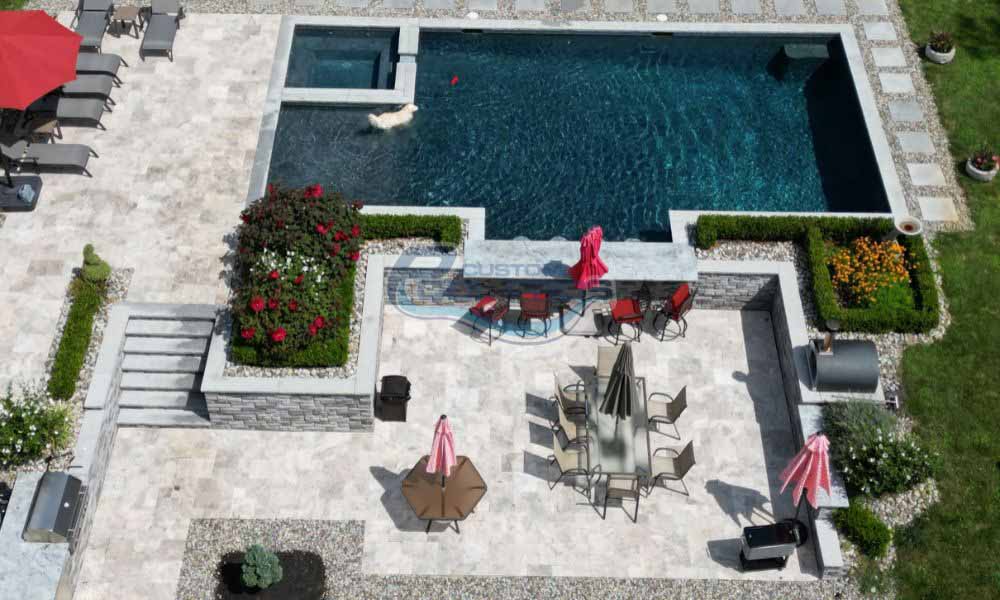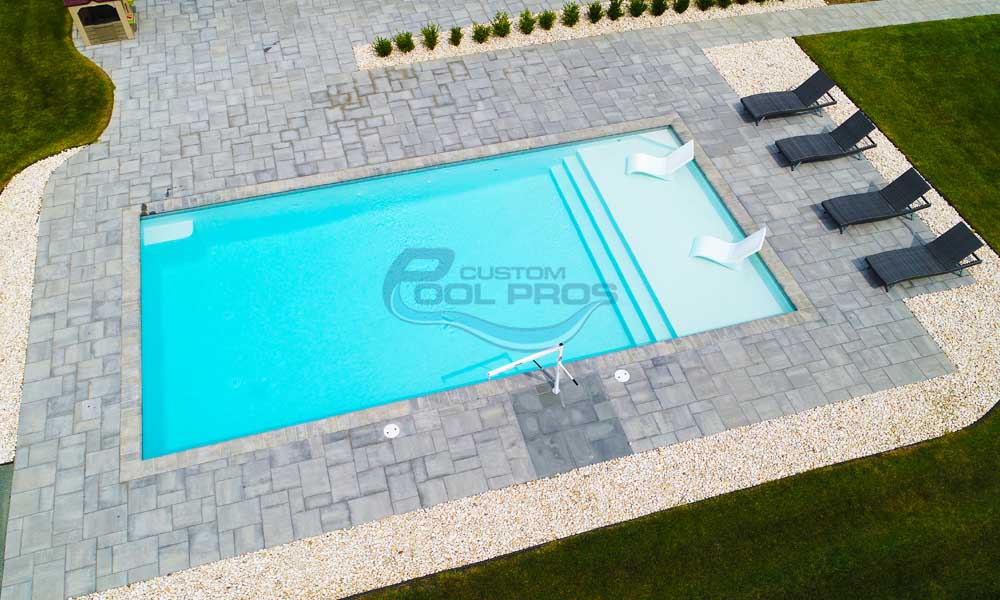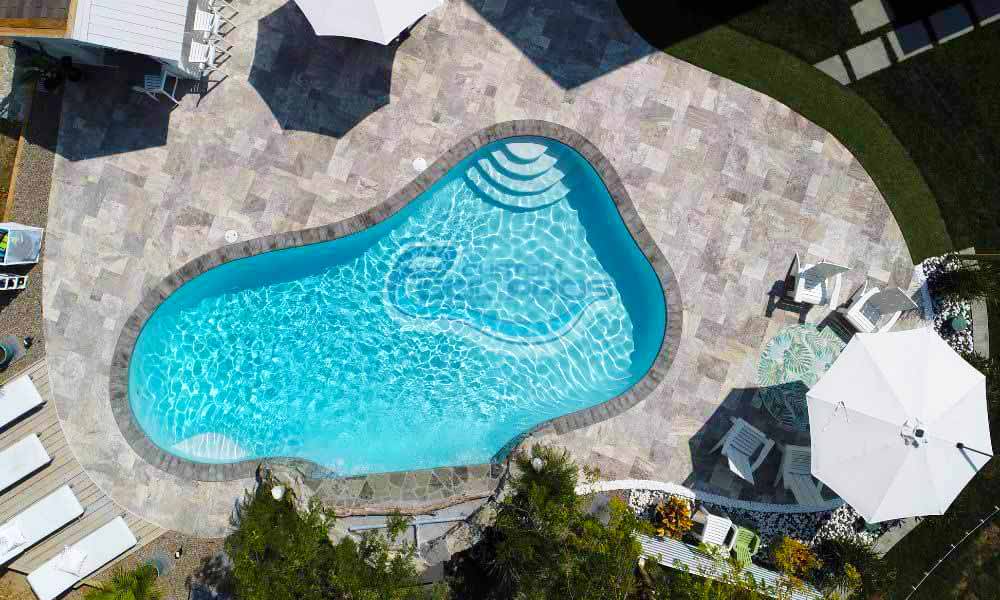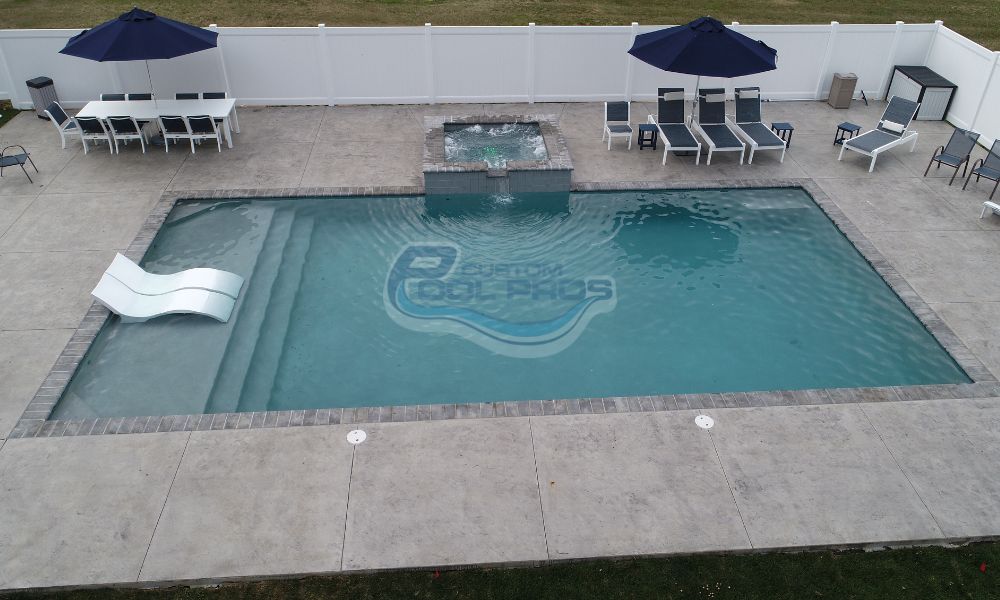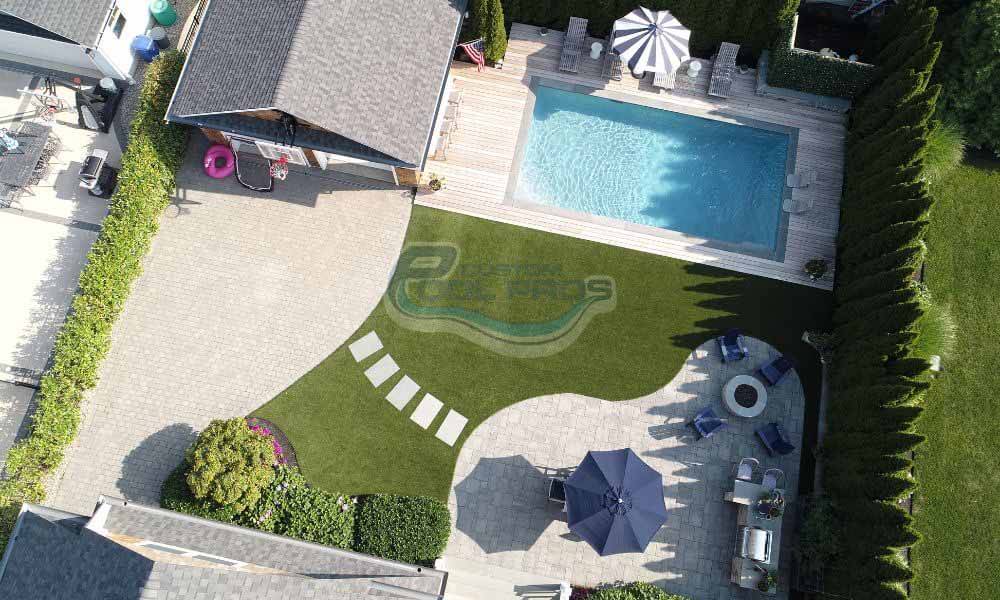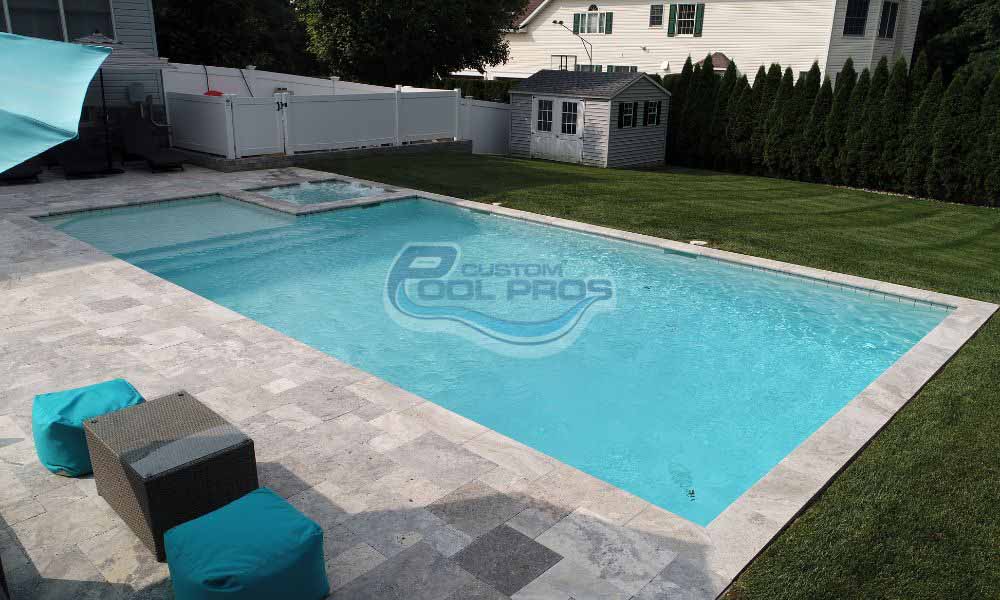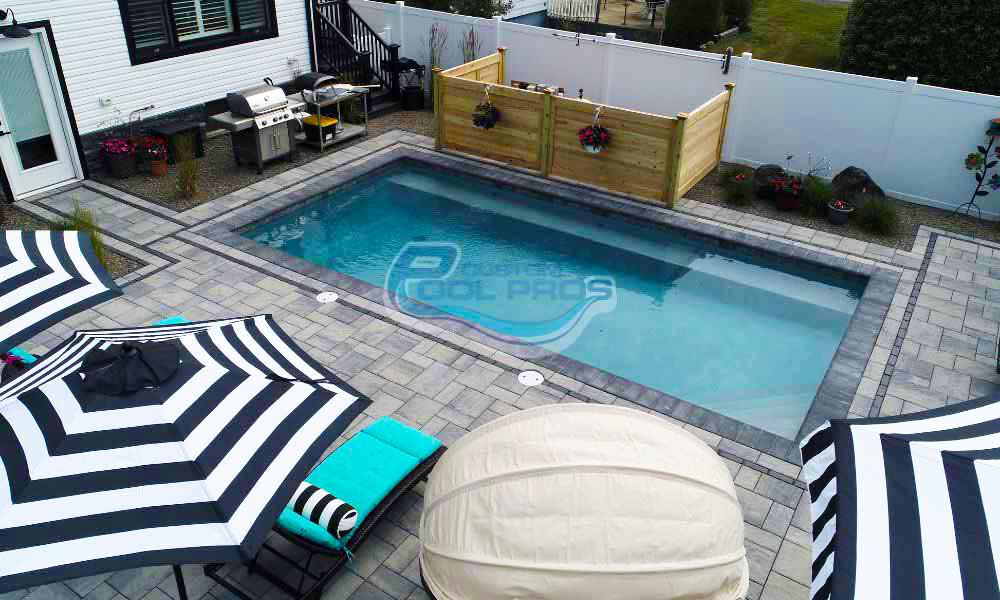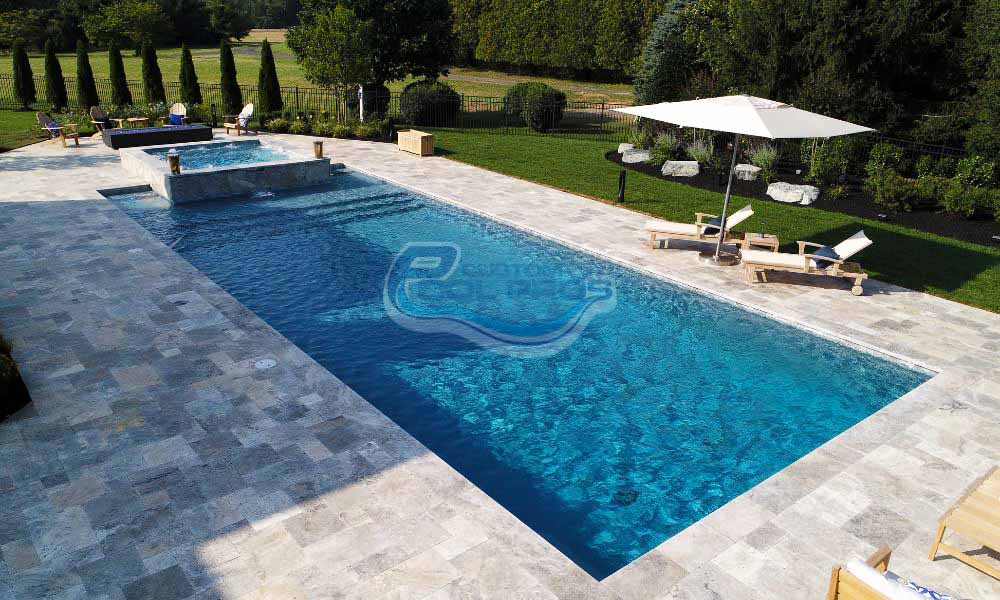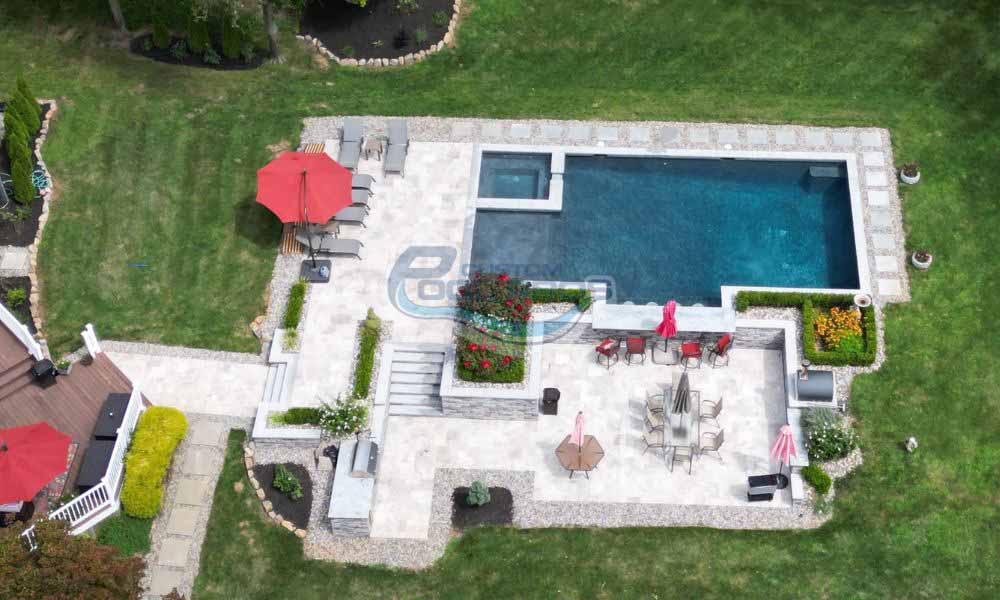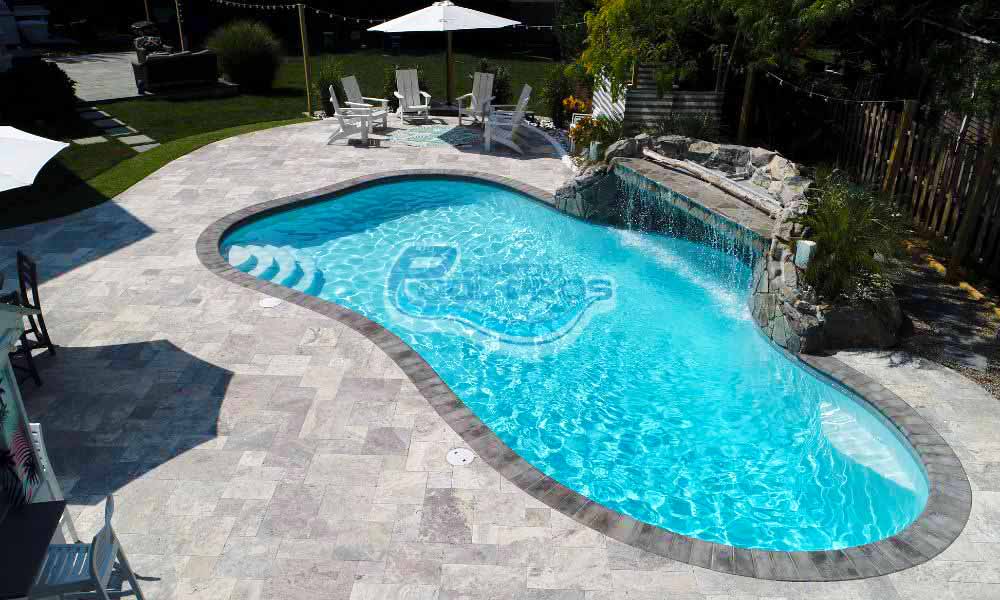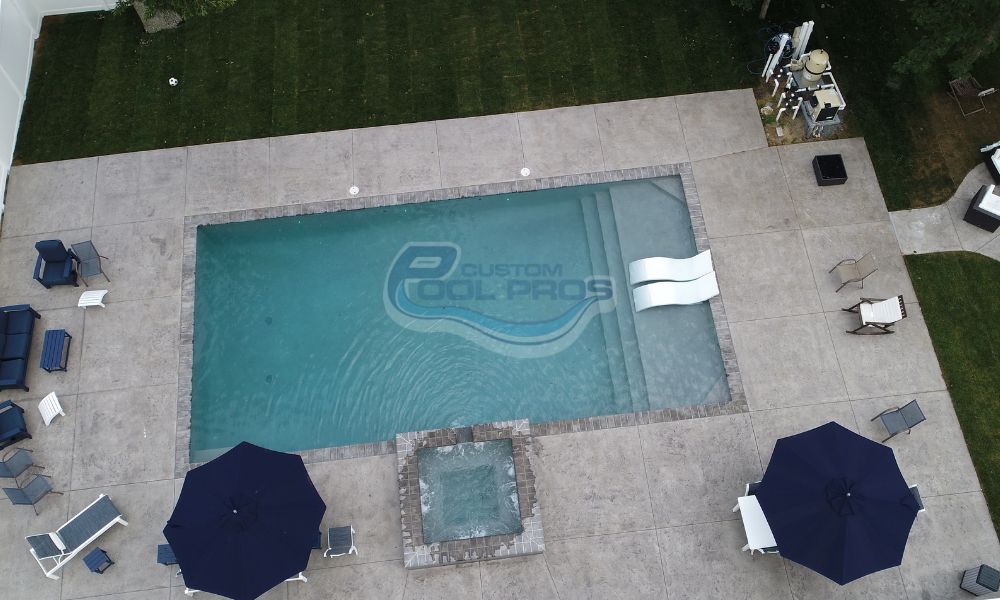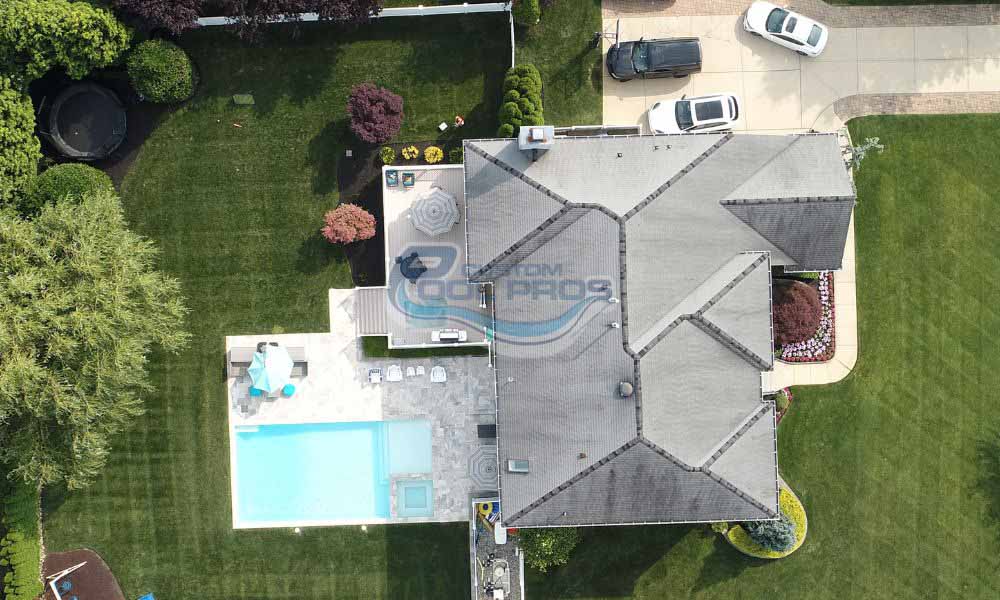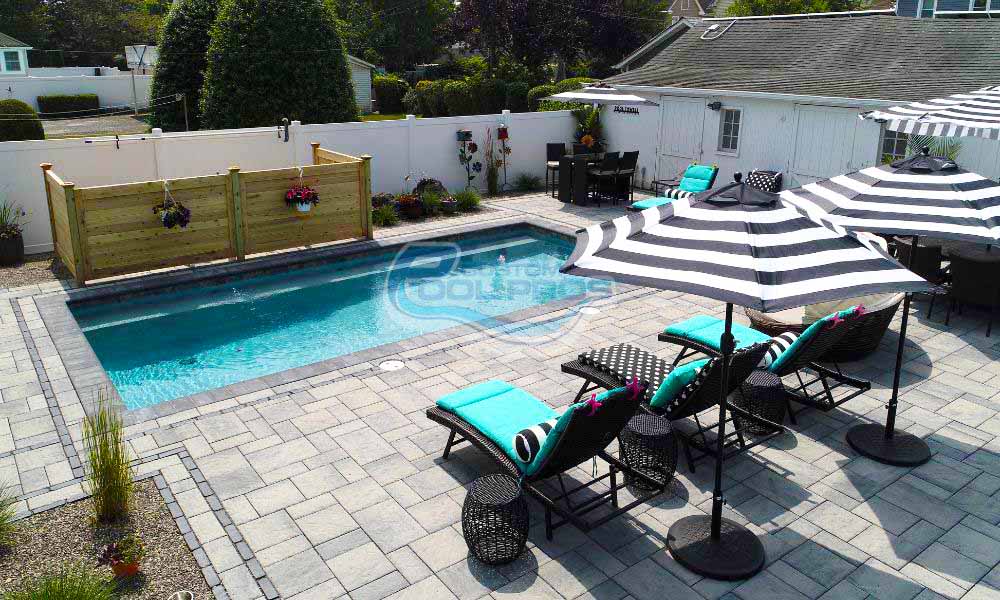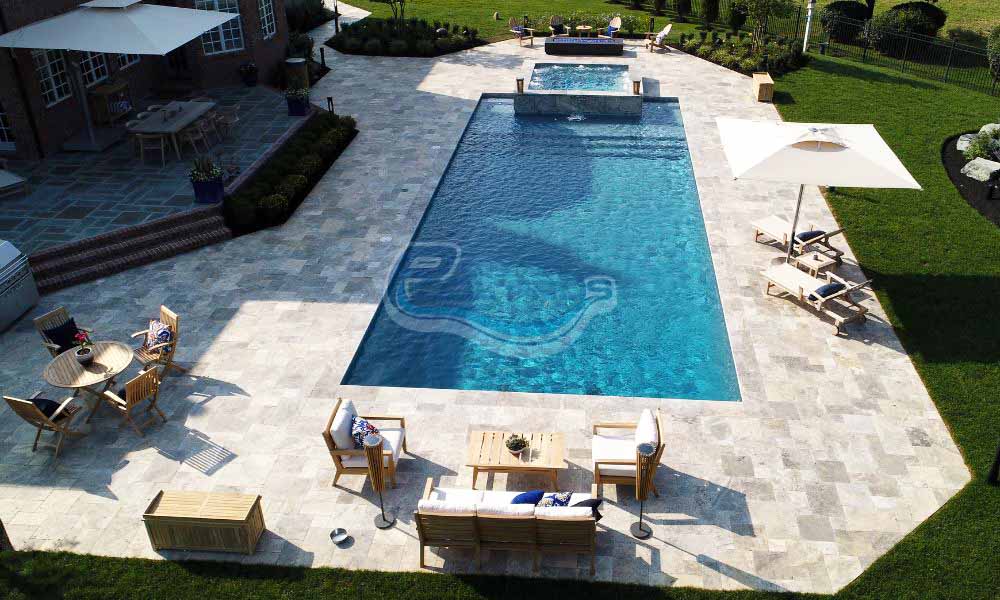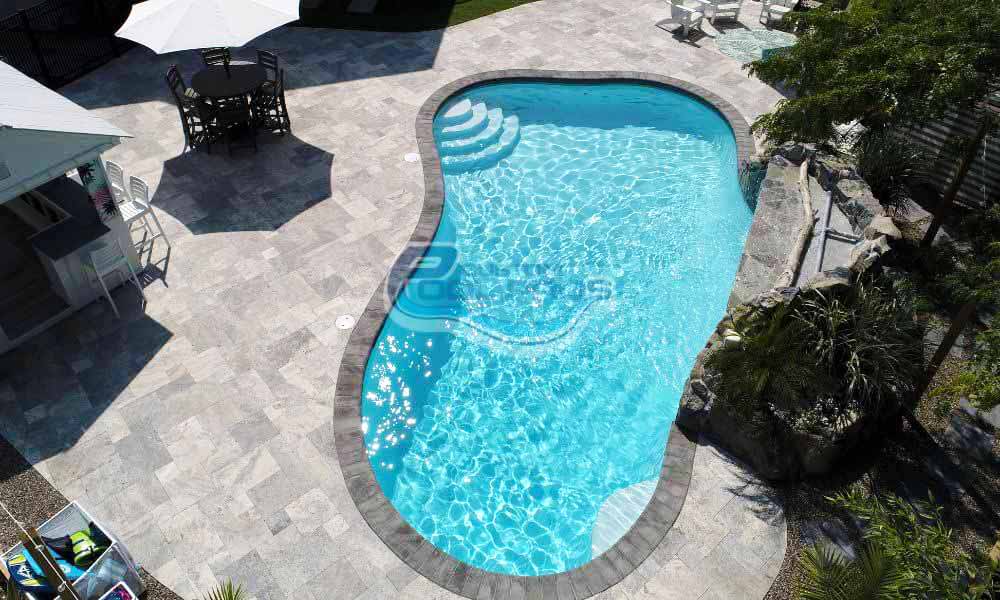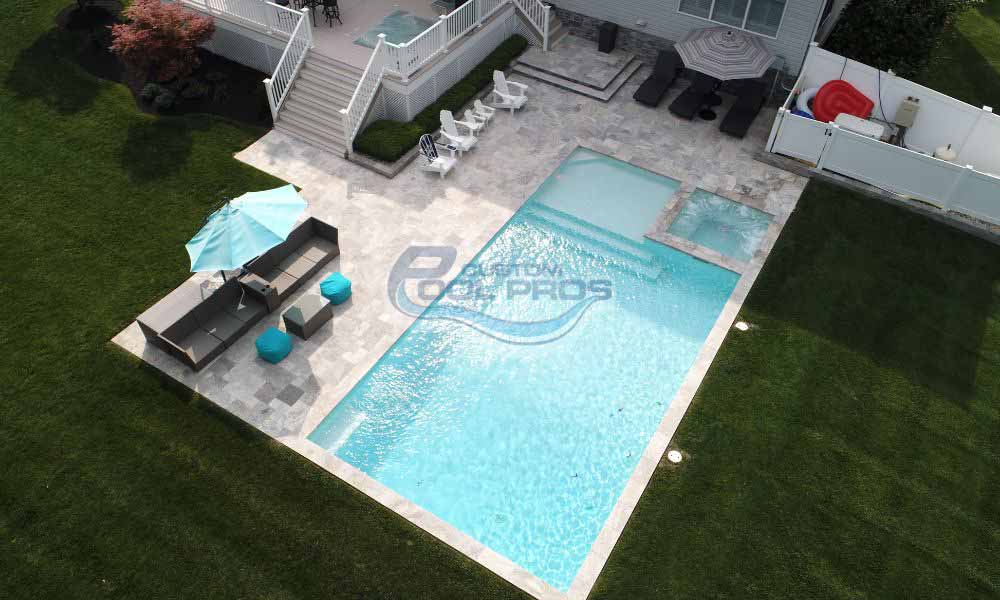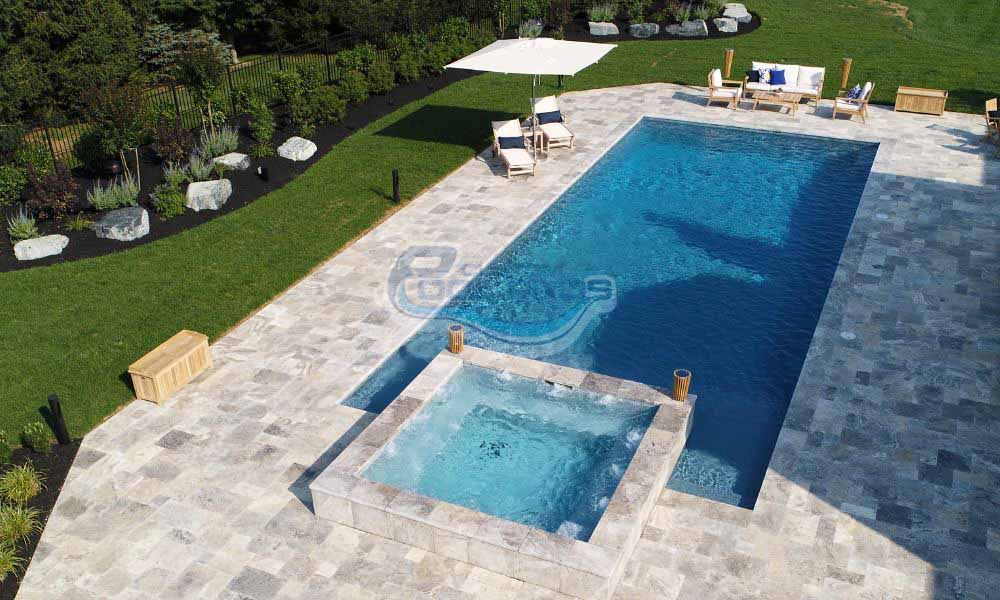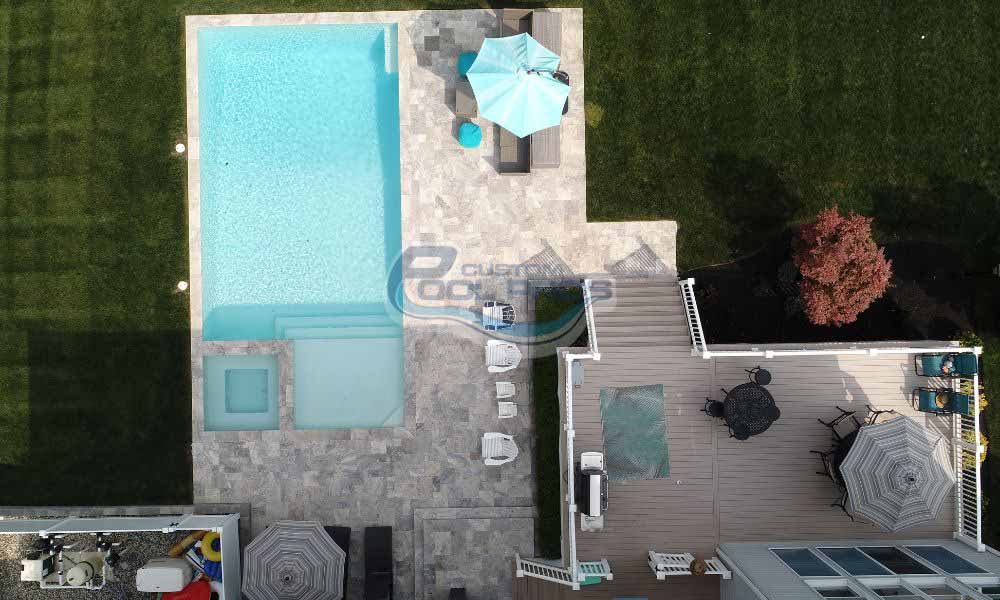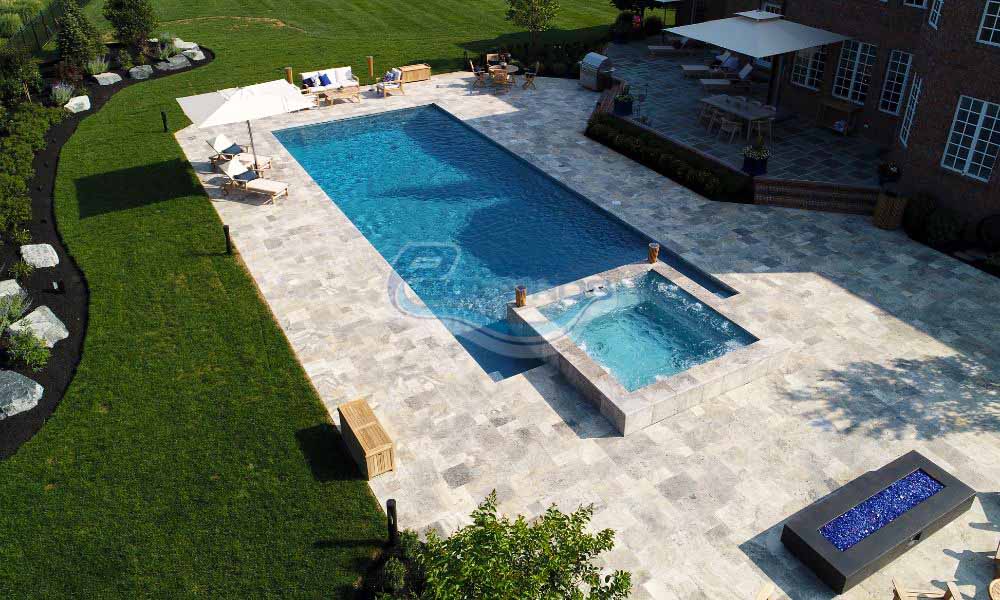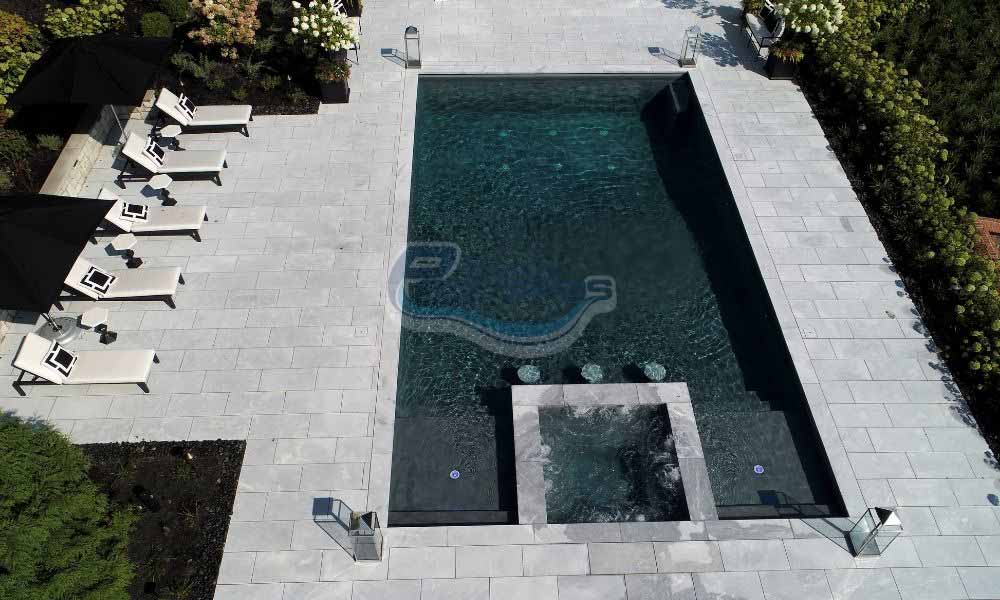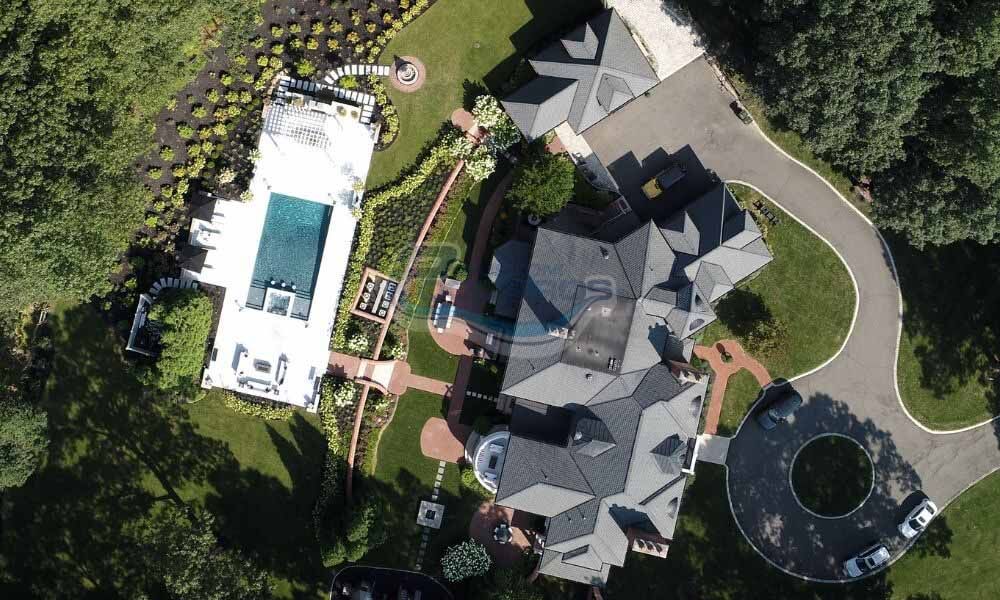Adding chlorine to swimming pools helps eliminate bacteria, viruses, and other dangerous tiny life forms that could make the water harmful or unclean for swimming. As you add chlorine to the pool, it turns into a mild, hypochlorous acid, which destroys germs responsible for illnesses like diarrhea and swimmer’s ear and harmful things such as salmonella and E. coli viruses.
This blog will walk you through everything chlorine-related, from its benefits to maintaining the proper chlorine level for a refreshing swim.
How to Test Pool Chlorine Levels
There are three primary chlorine examinations for pool chlorine testing: the strip method, liquid testing sets, and digital measuring devices. Test strips are used by immersing them in the water and then matching their color against a palette.
To test the water with a liquid kit, mix chemicals into it and watch for the color change. Electronic devices give you an immediate number that shows what’s in the water.
To check the amount of chlorine:
- Collect a water sample.
- Follow the test kit instructions precisely.
- Record the results for accurate maintenance.
How to Add Chlorine to Your Pool
There are three main kinds of chlorine for pools: liquid, tablet, and granule. The liquid works quickly, the tablets take longer, and the granules dissolve rapidly. You need different chlorine based on the size of your pool and the amount of chlorine already there.
Consider using an automatic pool chlorinator for a more convenient way to maintain chlorine levels. These devices dispense chlorine tablets slowly and steadily into your pool’s water supply as it circulate, working for both traditional chlorine and salt water pools. This helps ensure a consistent chlorine level, reducing the need for frequent manual additions.
Here’s how to add chlorine to your pool if you’re not using an automatic chlorinator:
- First, figure out how much the pool needs.
- Spread the chlorine all over the water.
- Let the chlorine mix well by swimming around or using a pump.
- Follow manufacturer instructions and safety precautions for optimal effectiveness and swimmer safety.
- Can use automatic pool chlorinators
How much Liquid Chlorine to Add to Pool
Check the pool chlorine level in your swimming pool with a testing kit. Look at a chart for chlorine doses to determine how much liquid chlorine you need. Determine the amount based on pool size and desired chlorine level.
Typically, a NUM0-gallon pool requires about a five ppm (parts per million) increase in chlorine level by adding one gallon of liquid chlorine for pools. Pour the calculated amount of liquid chlorine evenly around the pool. Preferably, do this in the evening. Allow the pool pump to circulate the water for optimal distribution.
How to Reduce Chlorine Levels in Your Pool
Check if the swimming pool has too much chlorine. If it does, lower the amount of chlorine to avoid skin and eye irritation. Too much chlorine might lead to not feeling comfortable and a heavy smell of chemicals. To reduce pool chlorine levels, put more water in, let sunlight hit it, or use particular substances to lower pool chlorine. Here’s how to reduce the chlorine level in the pool:
- Add fresh water to the pool to dilute the chlorine concentration.
- Allow sunlight to naturally break down chlorine over time.
- To lower chlorine levels, apply a substance that neutralizes chlorine or undergo a shock treatment.
What is Free Chlorine in a Pool?
Free chlorine, or FCL, is how much chlorine in the swimming pool has not combined with chemicals or tiny organisms in the water. We measure it using parts per million, ppm for short, and use it to destroy unwanted germs and clean impurities. FCL is the primary chlorine type as it continuously sanitizes the swimming pool.
How to Increase Free Chlorine Levels (if needed)
When the free chlorine level is insufficient, It indicates inadequate cleaning. Bacteria can multiply, leading to impure water. Consider using a solid chlorine cleaner to increase free chlorine levels. You can also put in liquid chlorine or chlorine tablets for the pool. Follow these steps:
- Measure current chlorine levels.
- Calculate the required chlorine dosage based on pool size.
- Add shock treatment or liquid chlorine evenly around the pool perimeter.
- Allow the pump to circulate water for optimal distribution.
- Retest chlorine levels after a few hours and repeat if necessary.
Also Read: Pool Chemicals: What You Need To Know
How to Keep Children Safe in Chlorine Pools
Usually, when babies are a few months old, they can start going into pools with chlorine. However, asking a child’s doctor before doing this is better. To keep children safe in chlorine pools, you should follow these steps:
- Always supervise children near water.
- Use appropriate flotation devices.
- Teach children basic swimming skills.
- Ensure pool fences and gates are secure.
- Avoid swallowing pool water.
Conclusion
Knowing about chlorine used in swimming pools to keep them safe and pleasant is essential. Ensure the chlorine amount is suitable to guard swimmers against dangerous germs and clear the water. Check often, carefully add chlorine, and change amounts when necessary.


